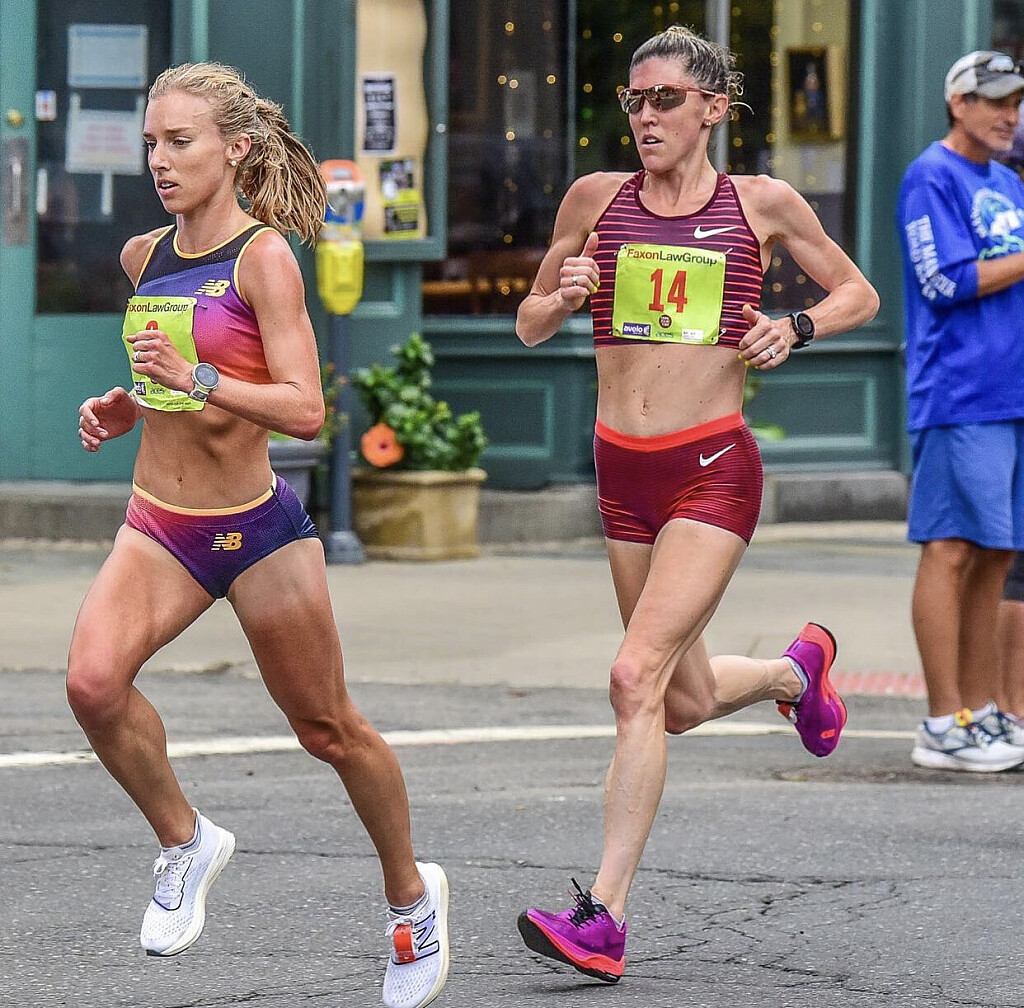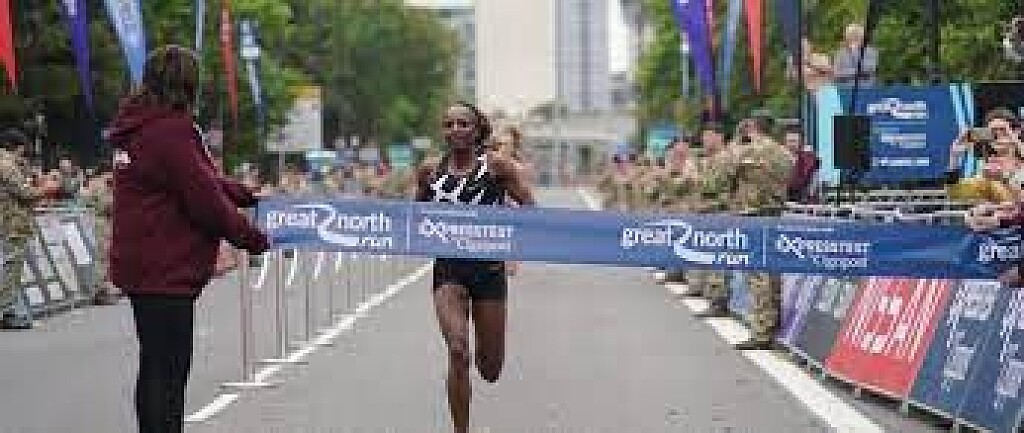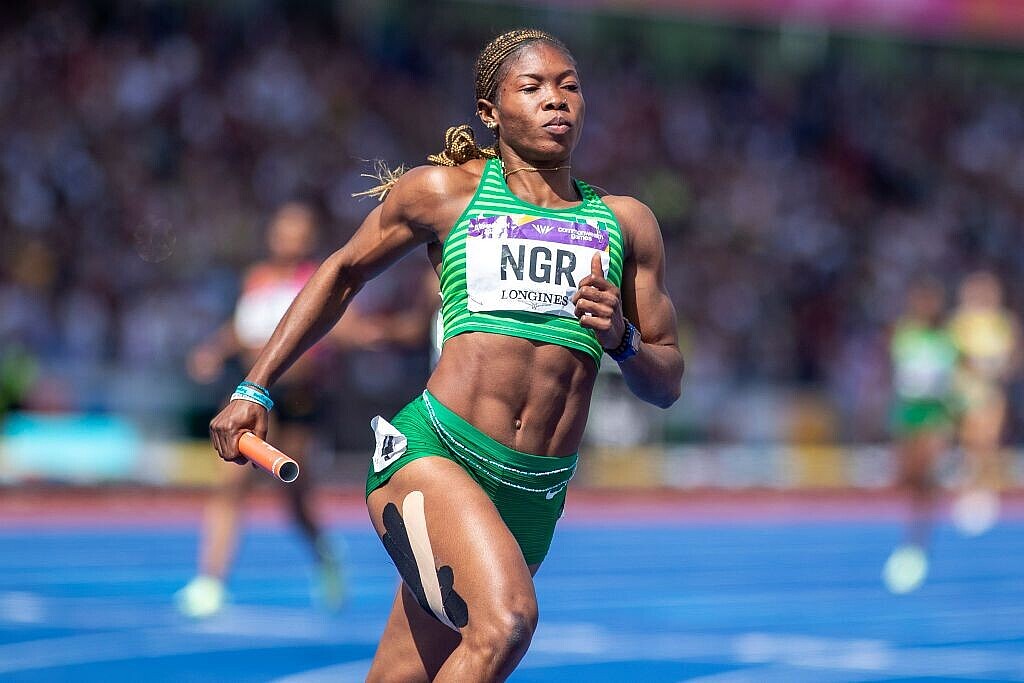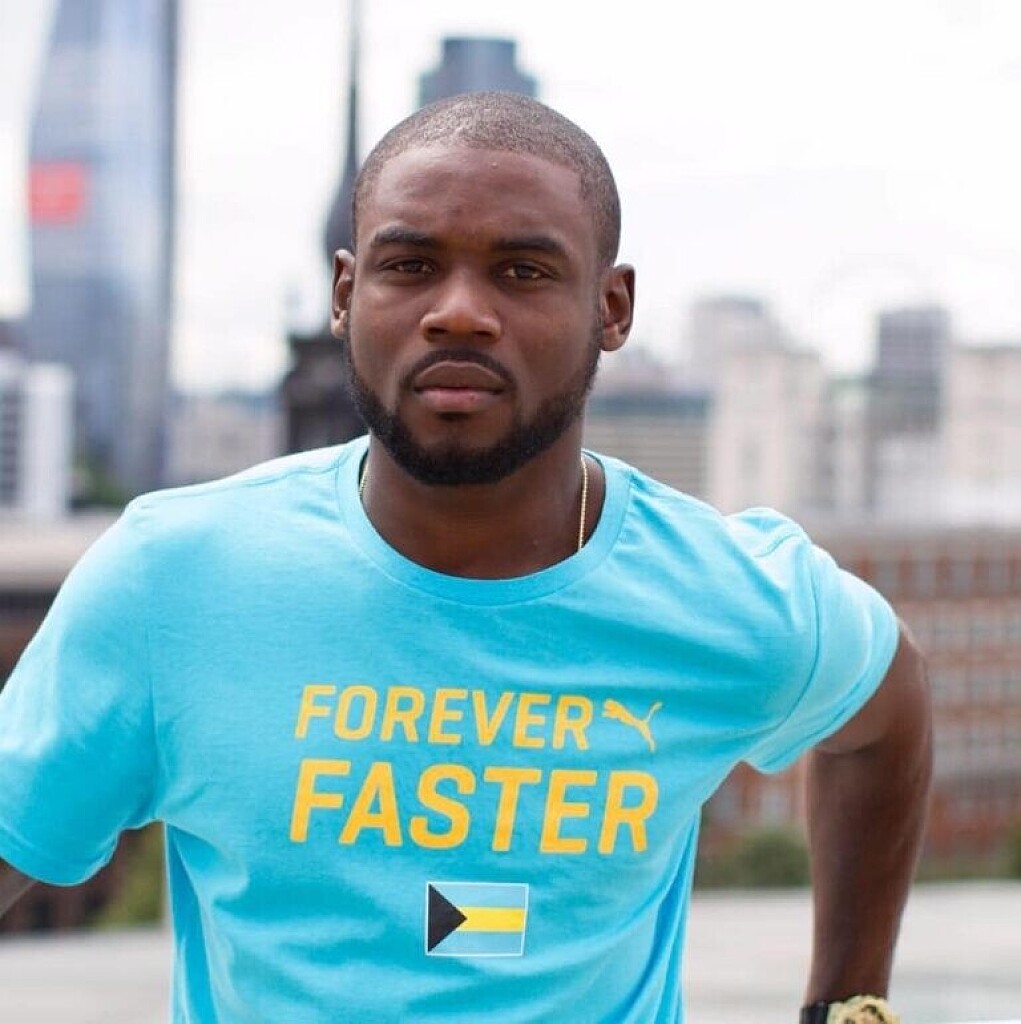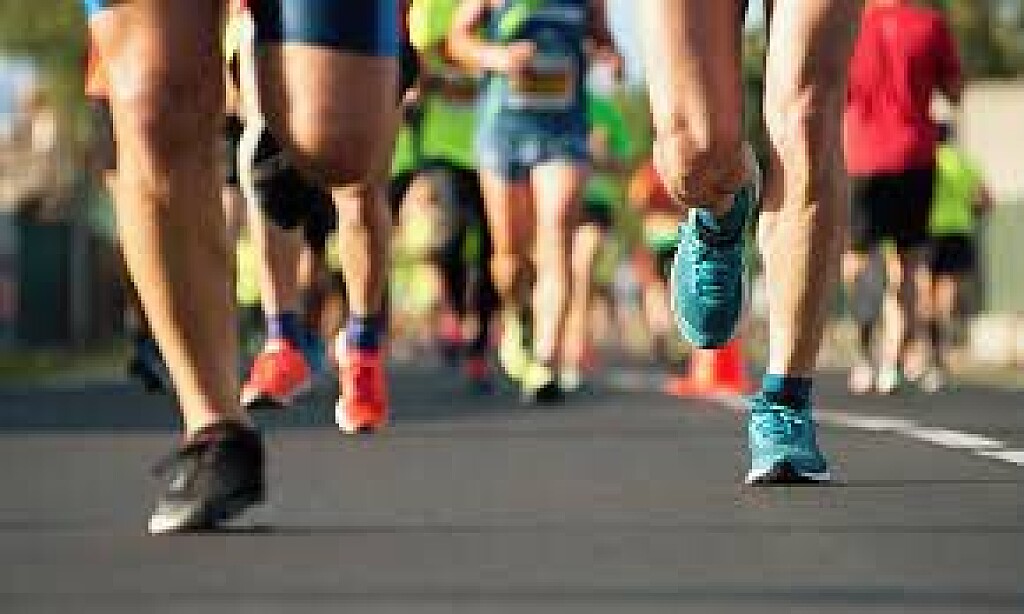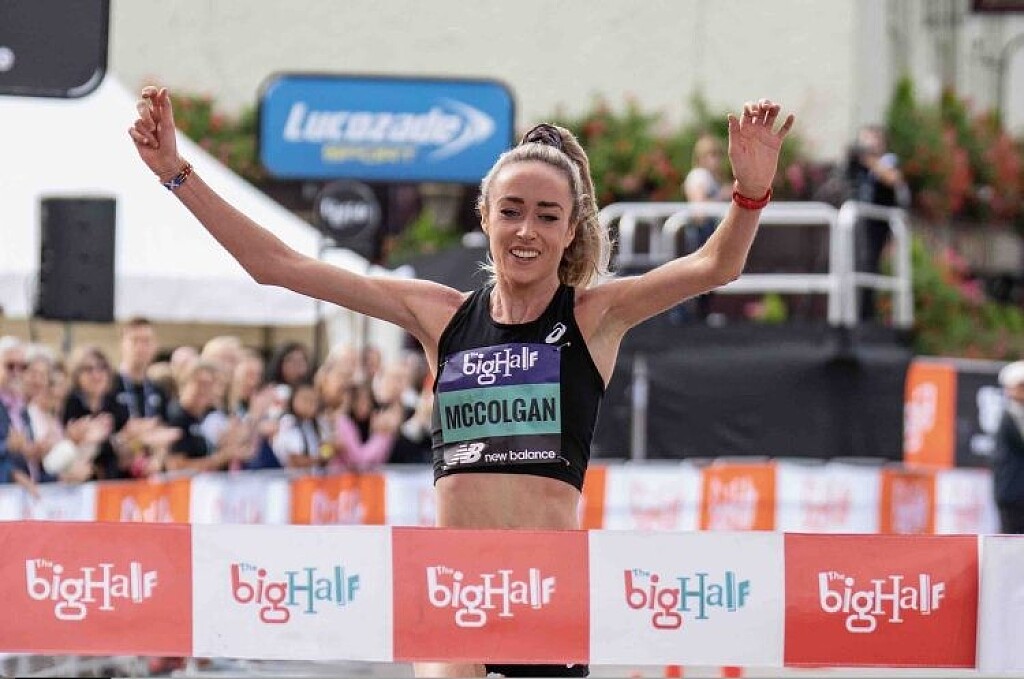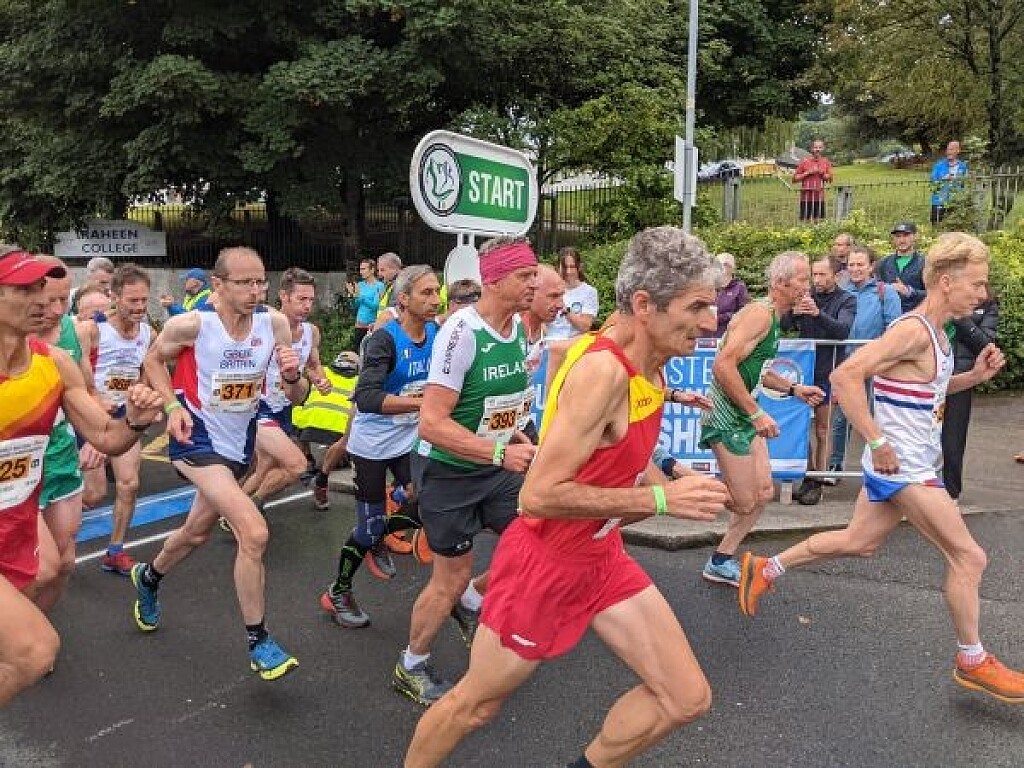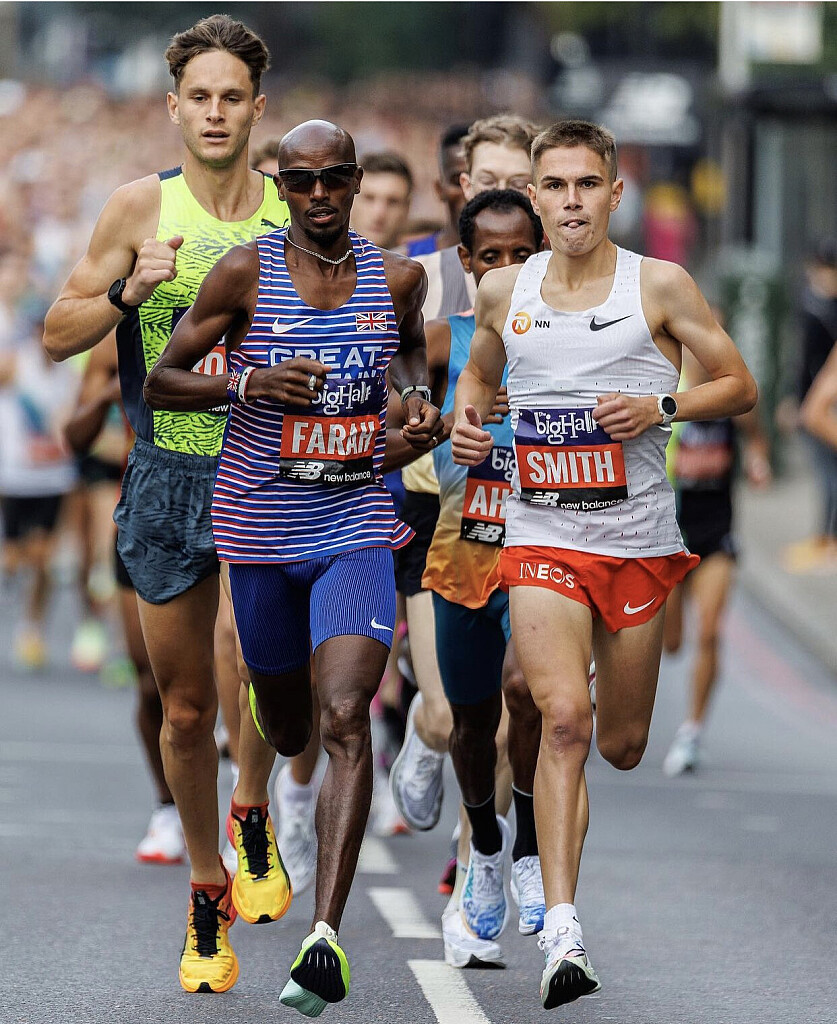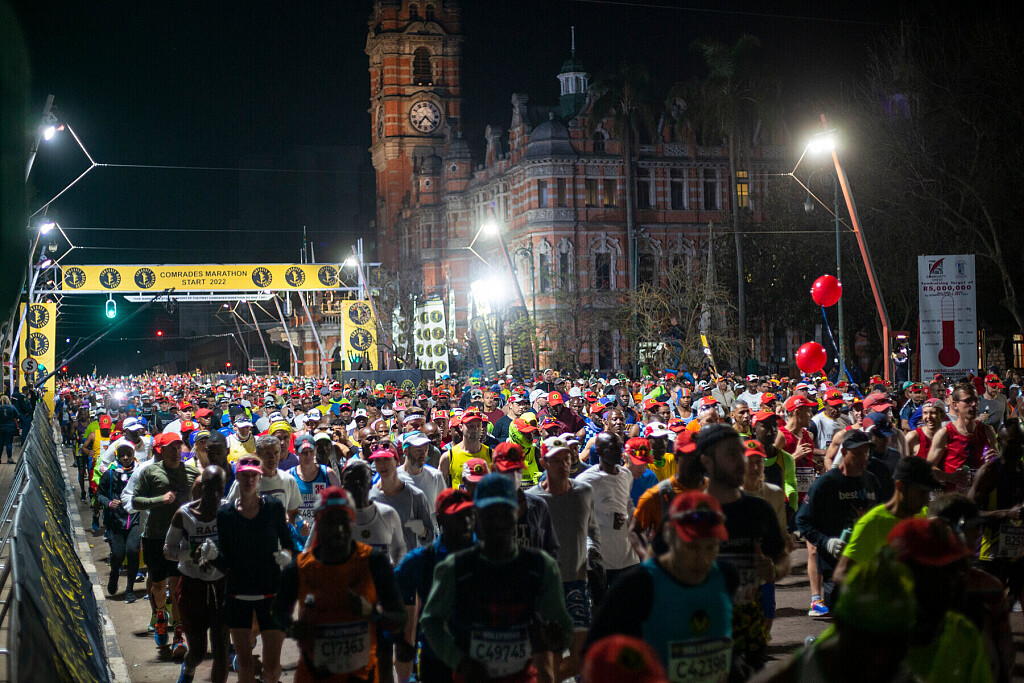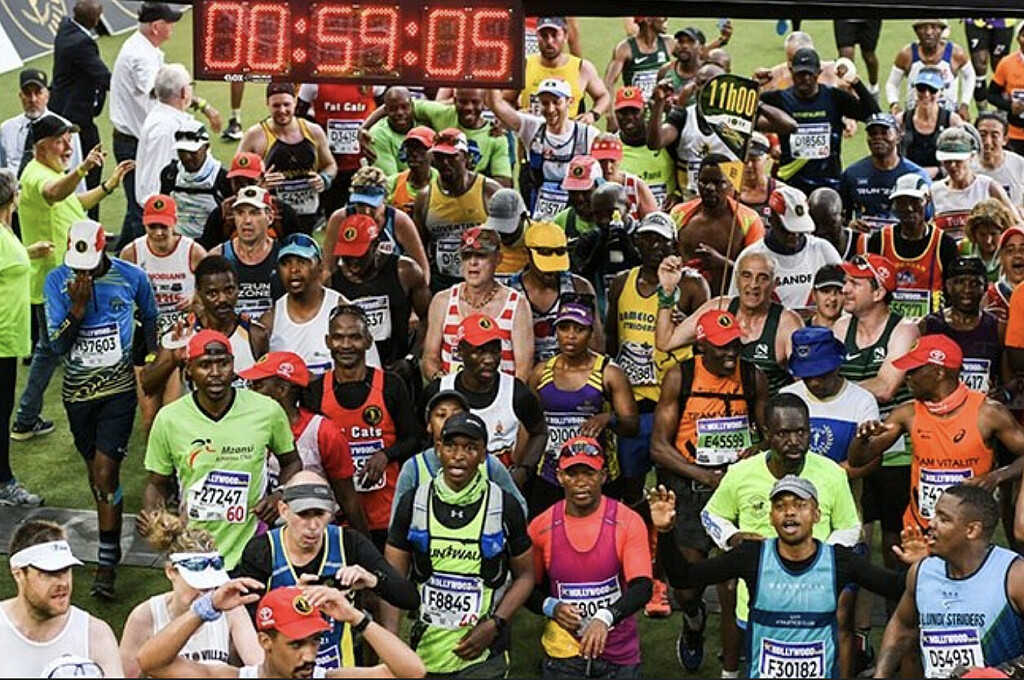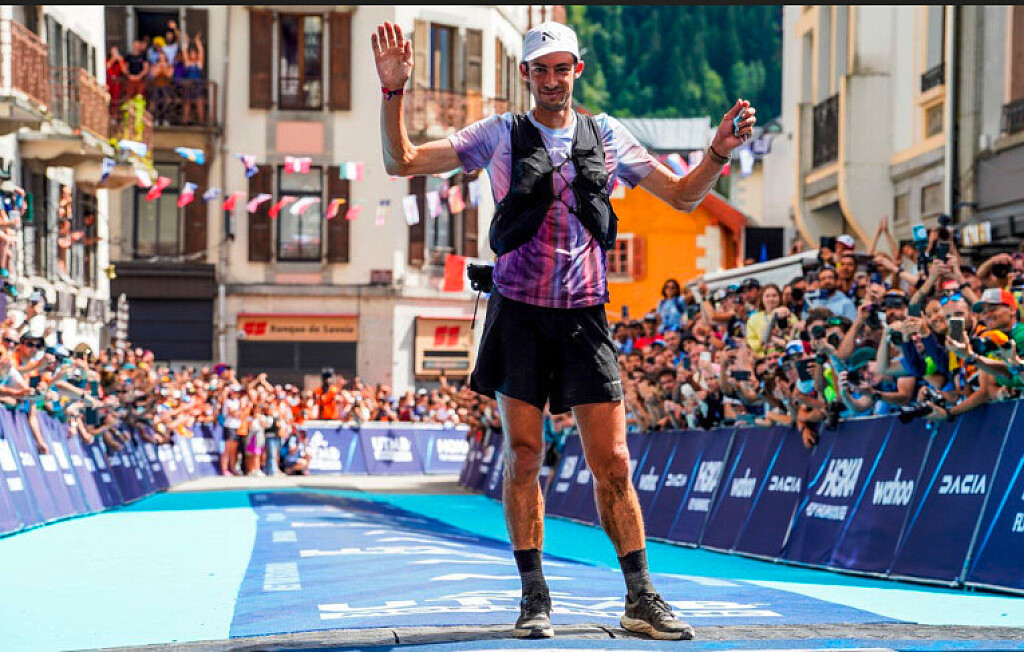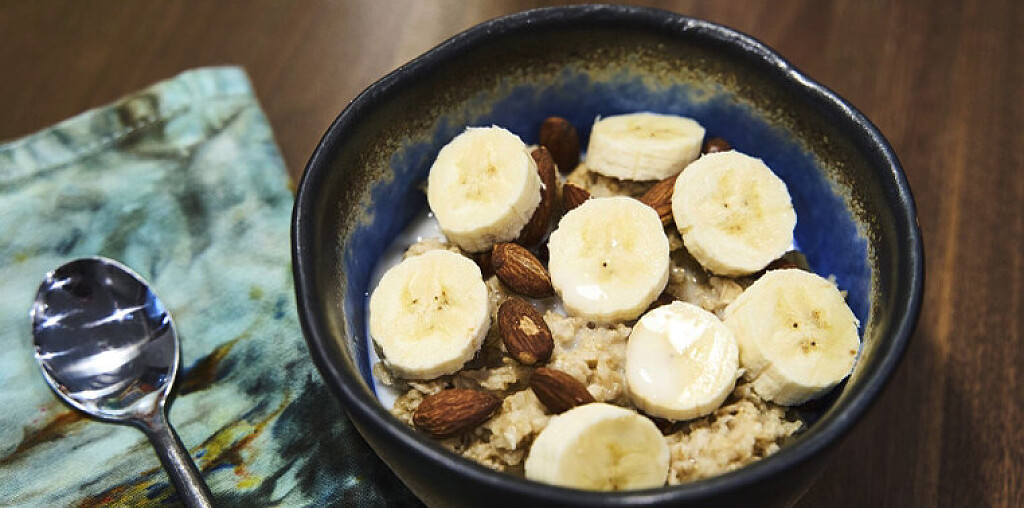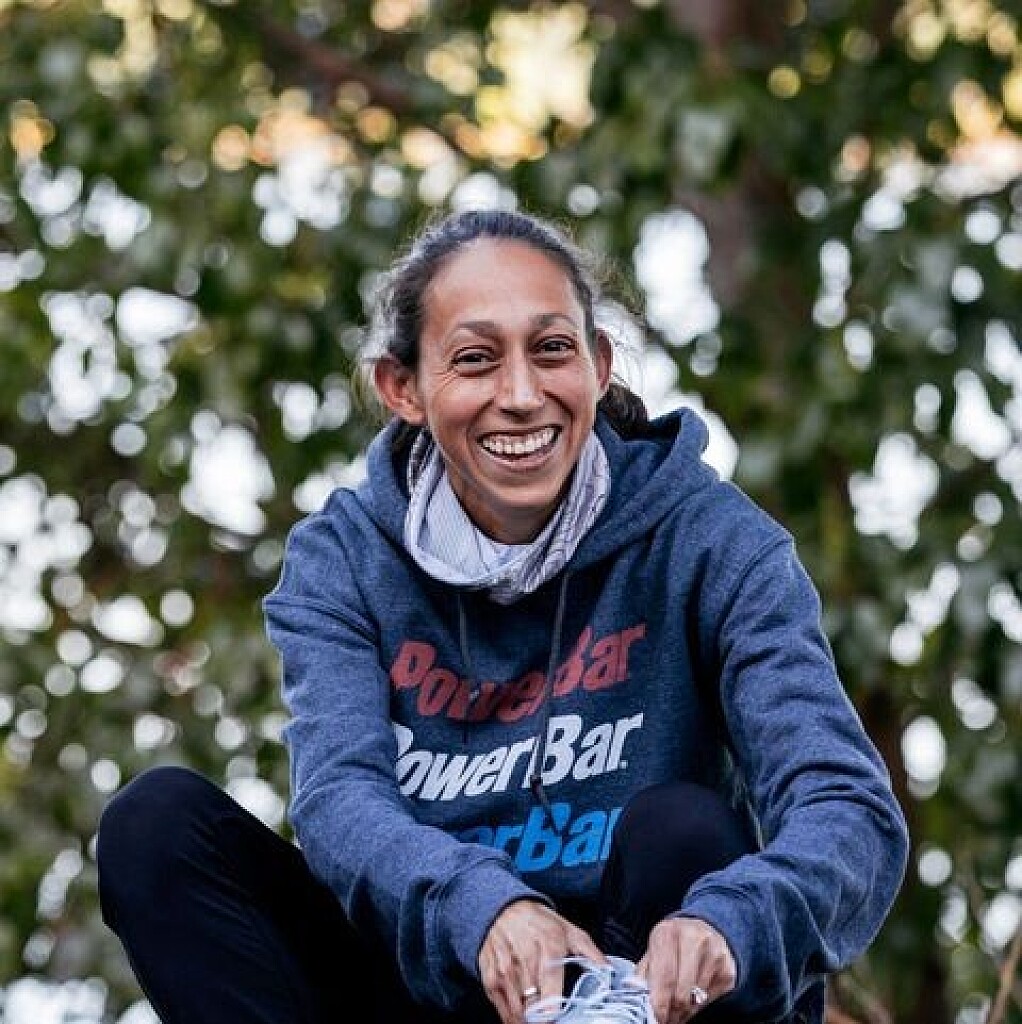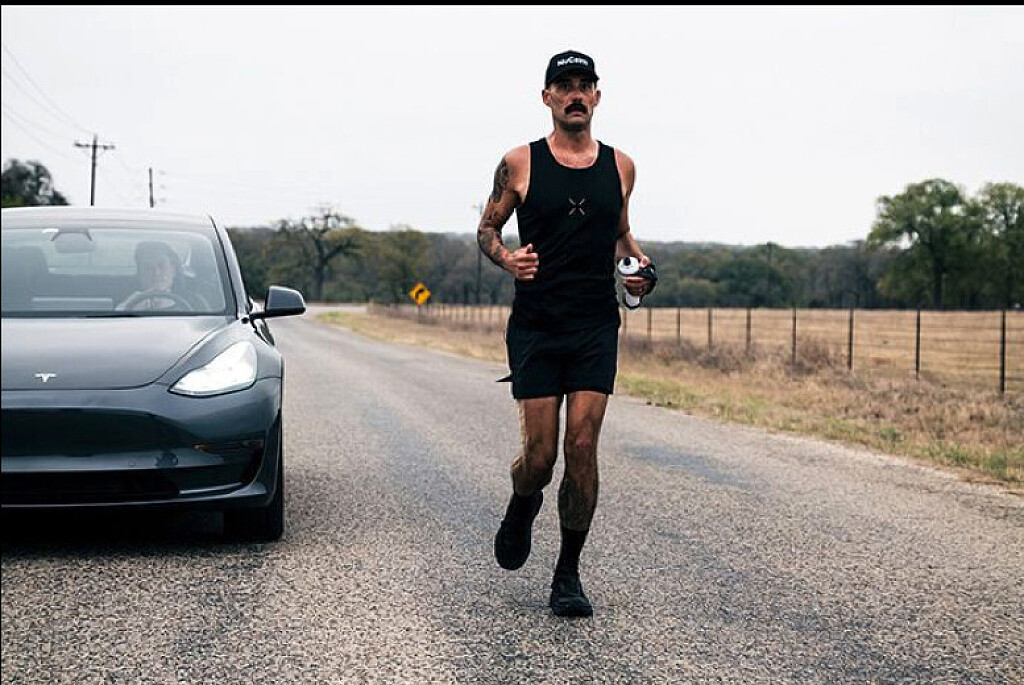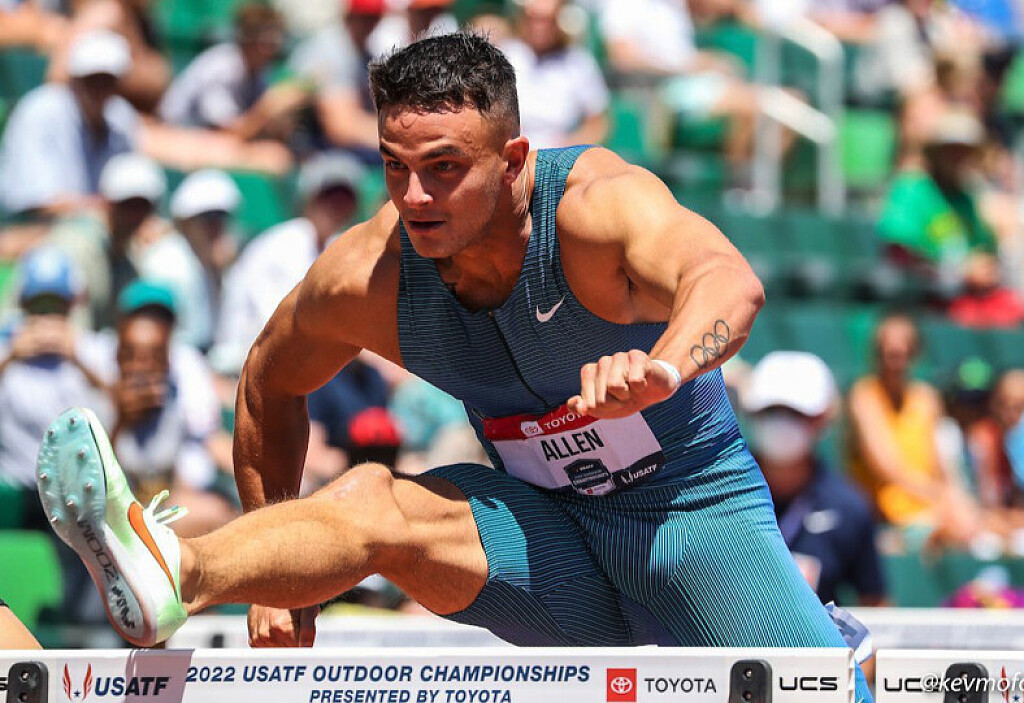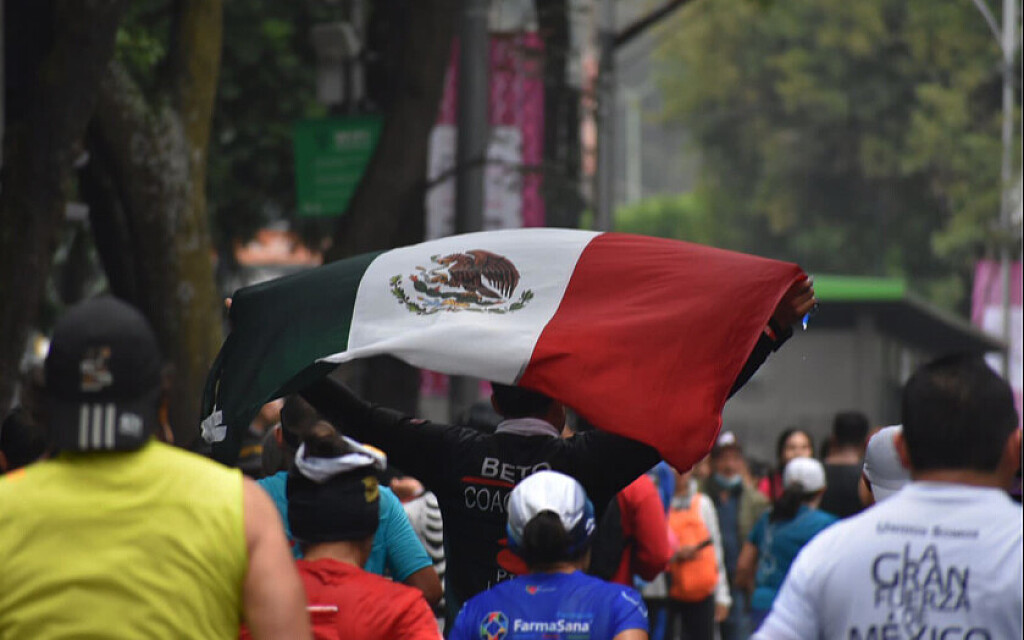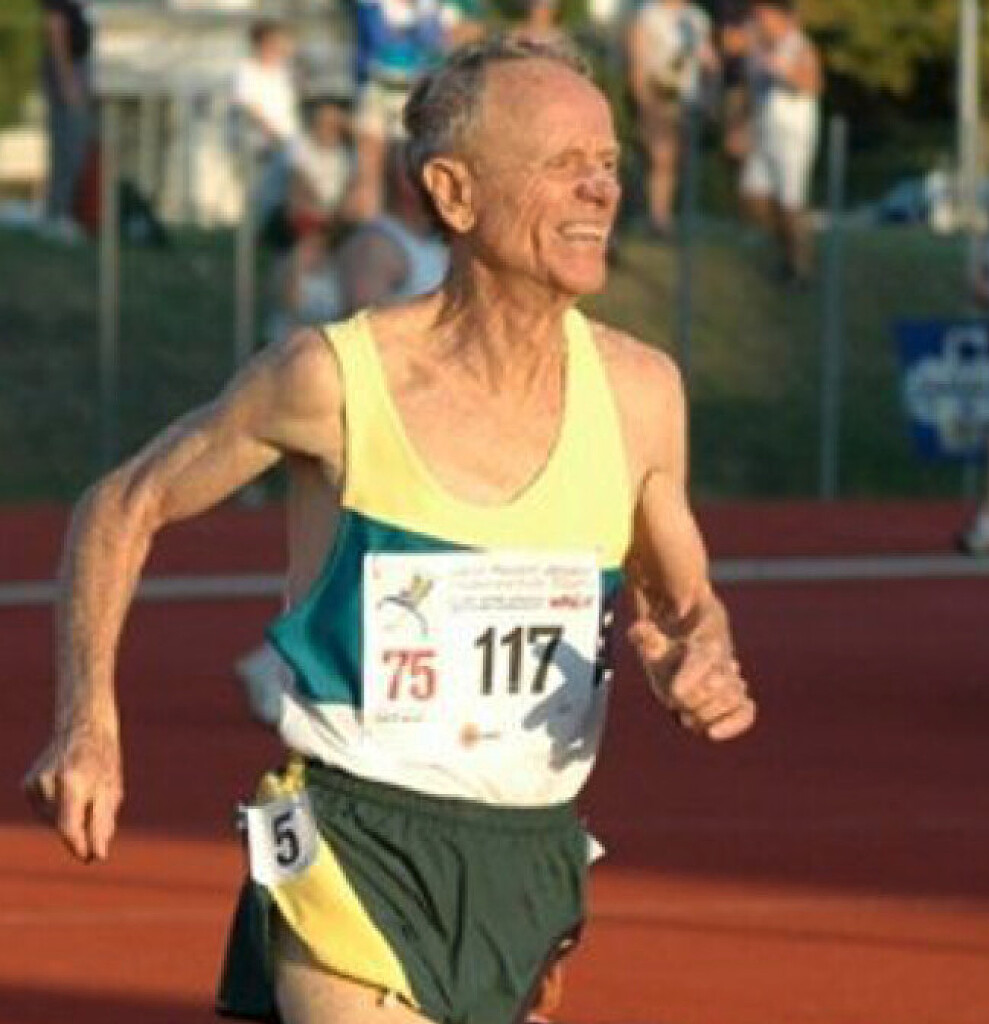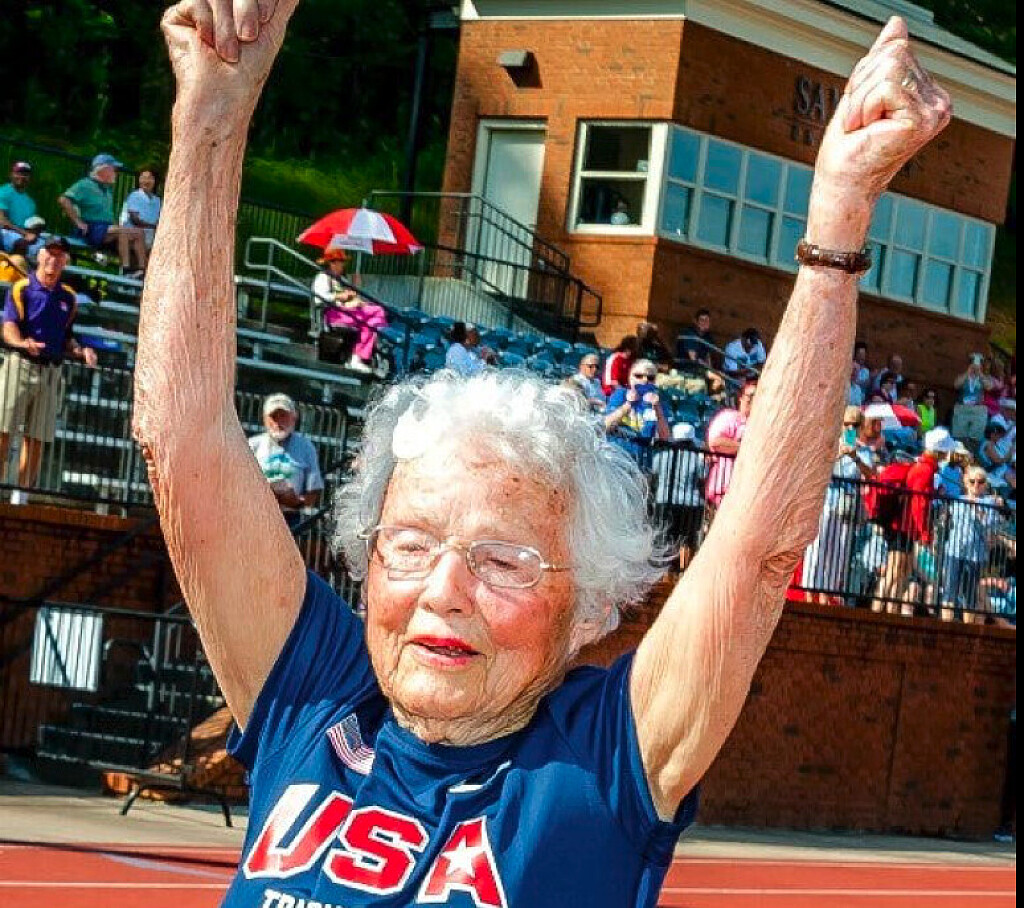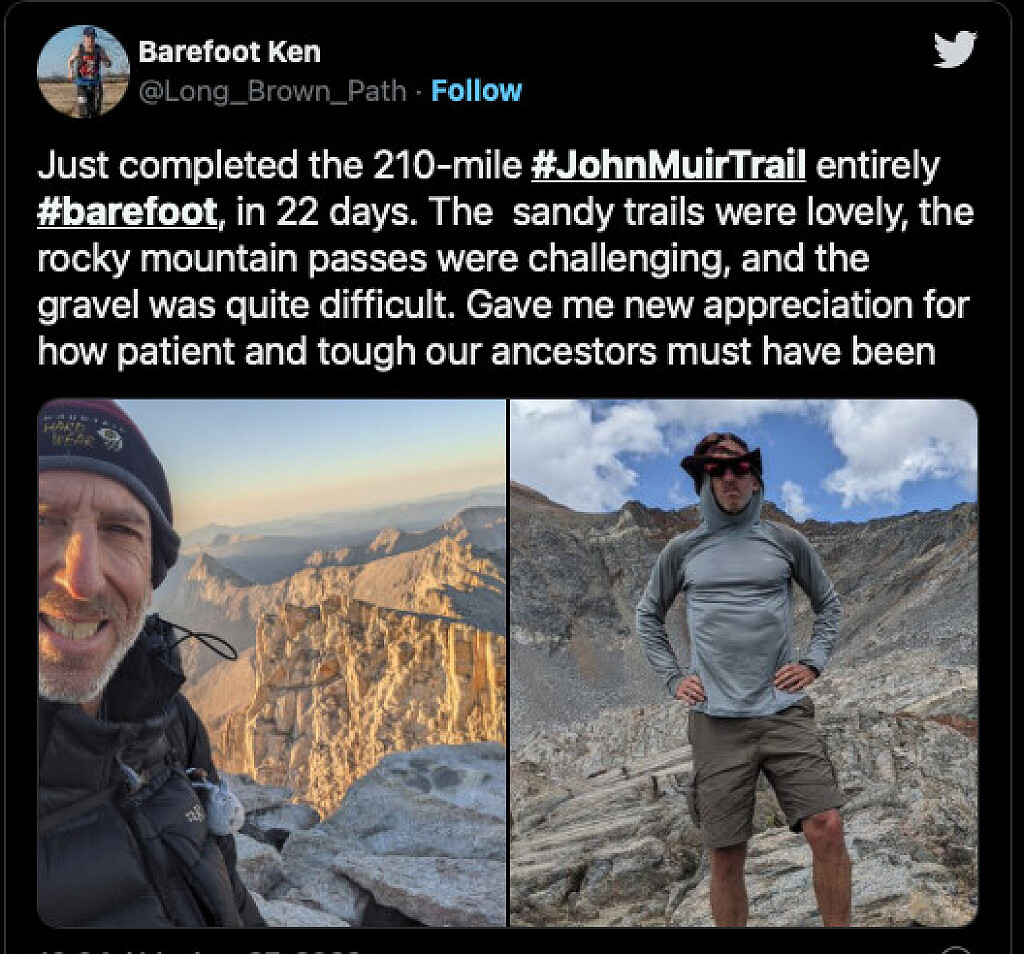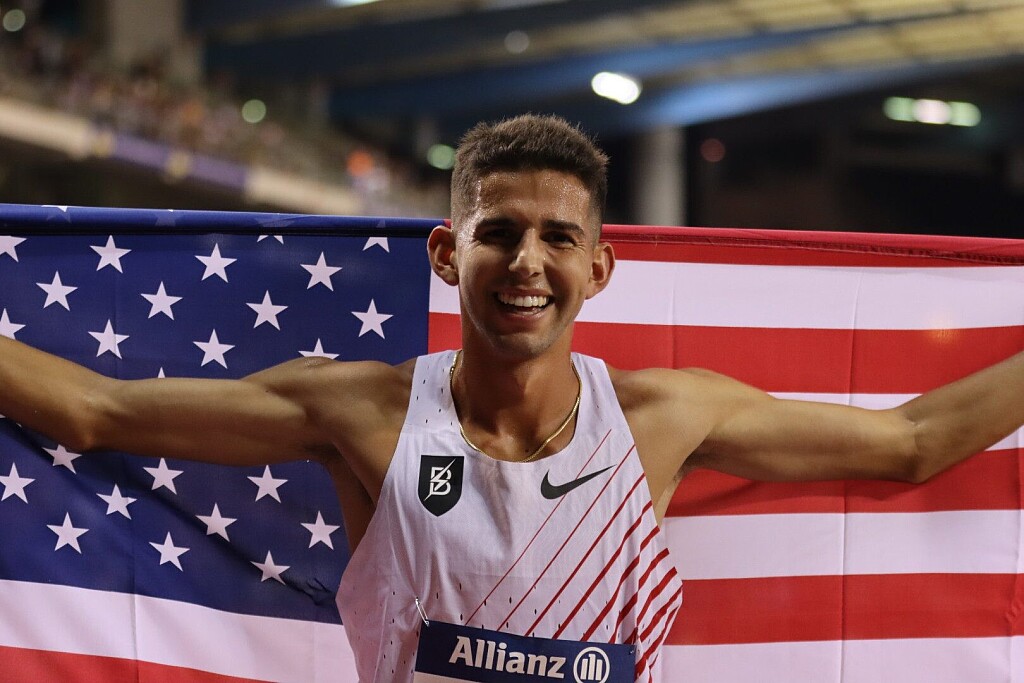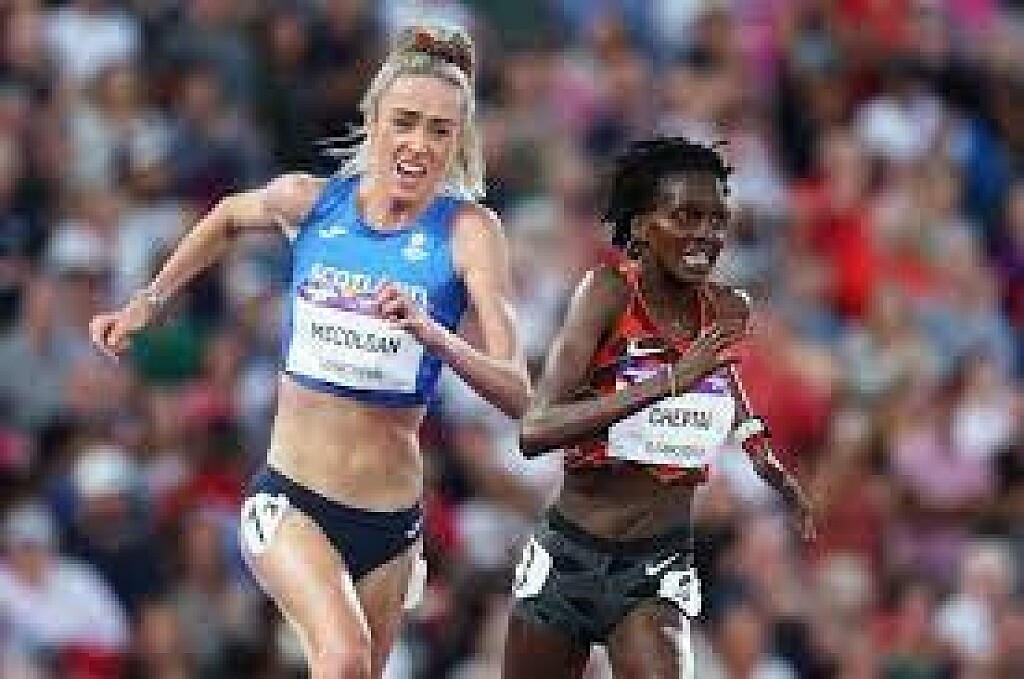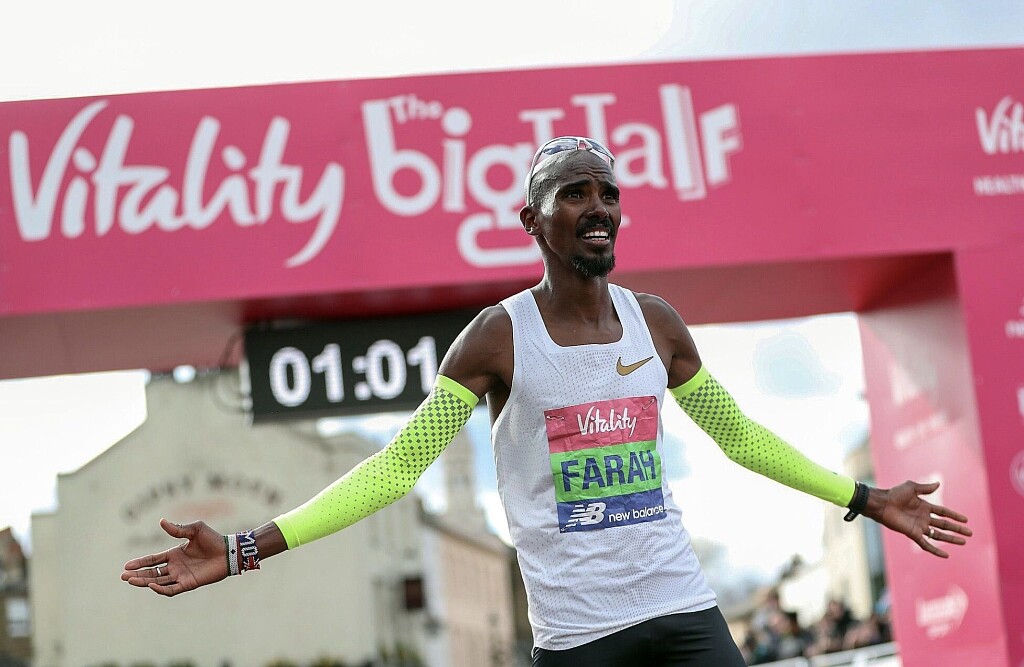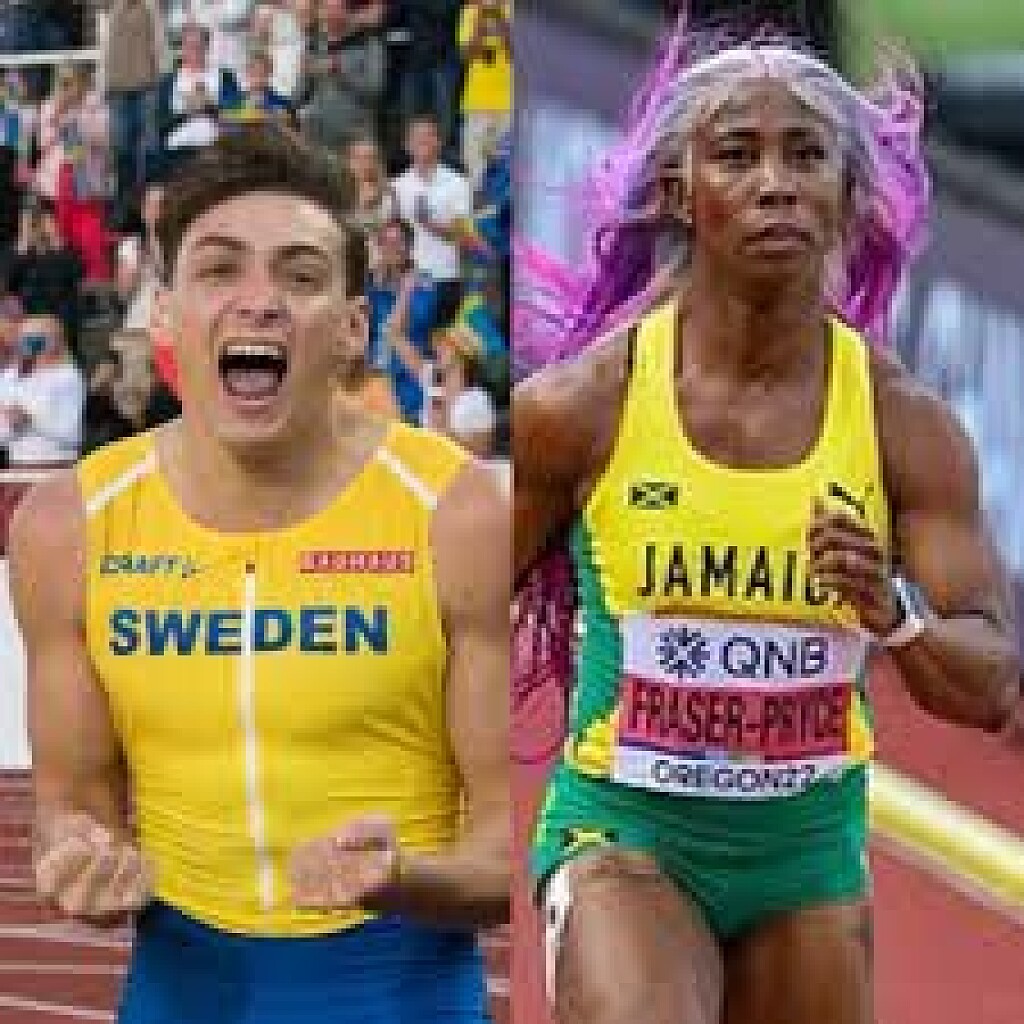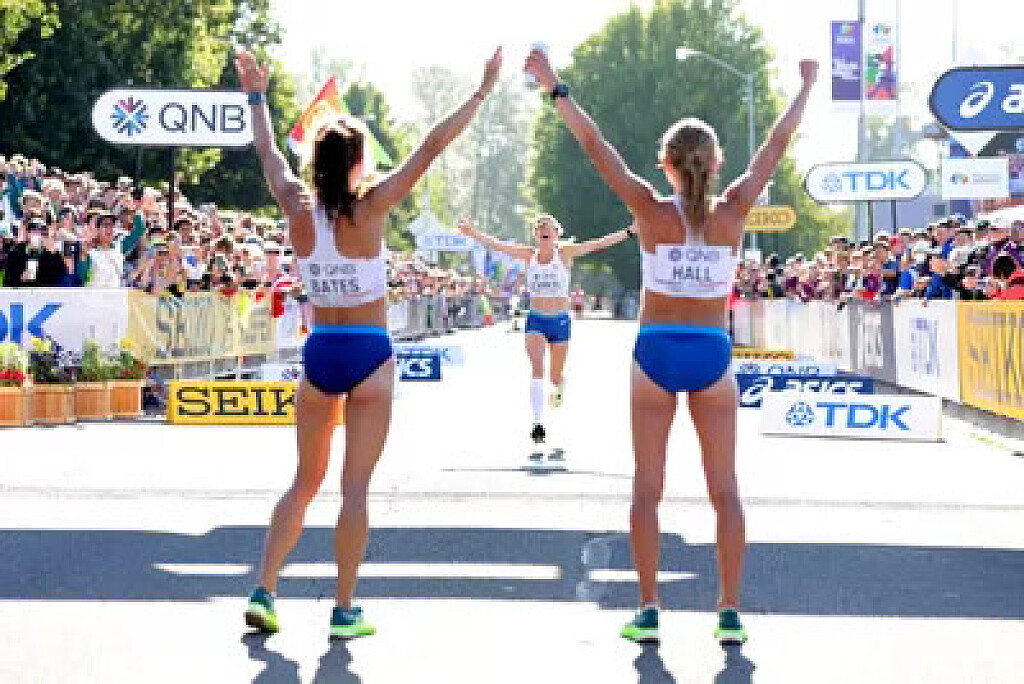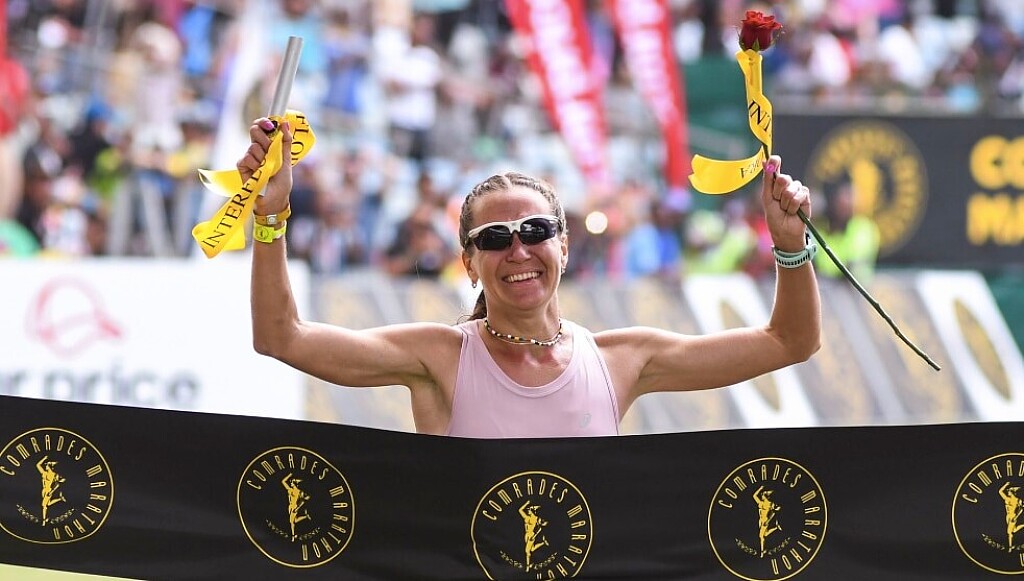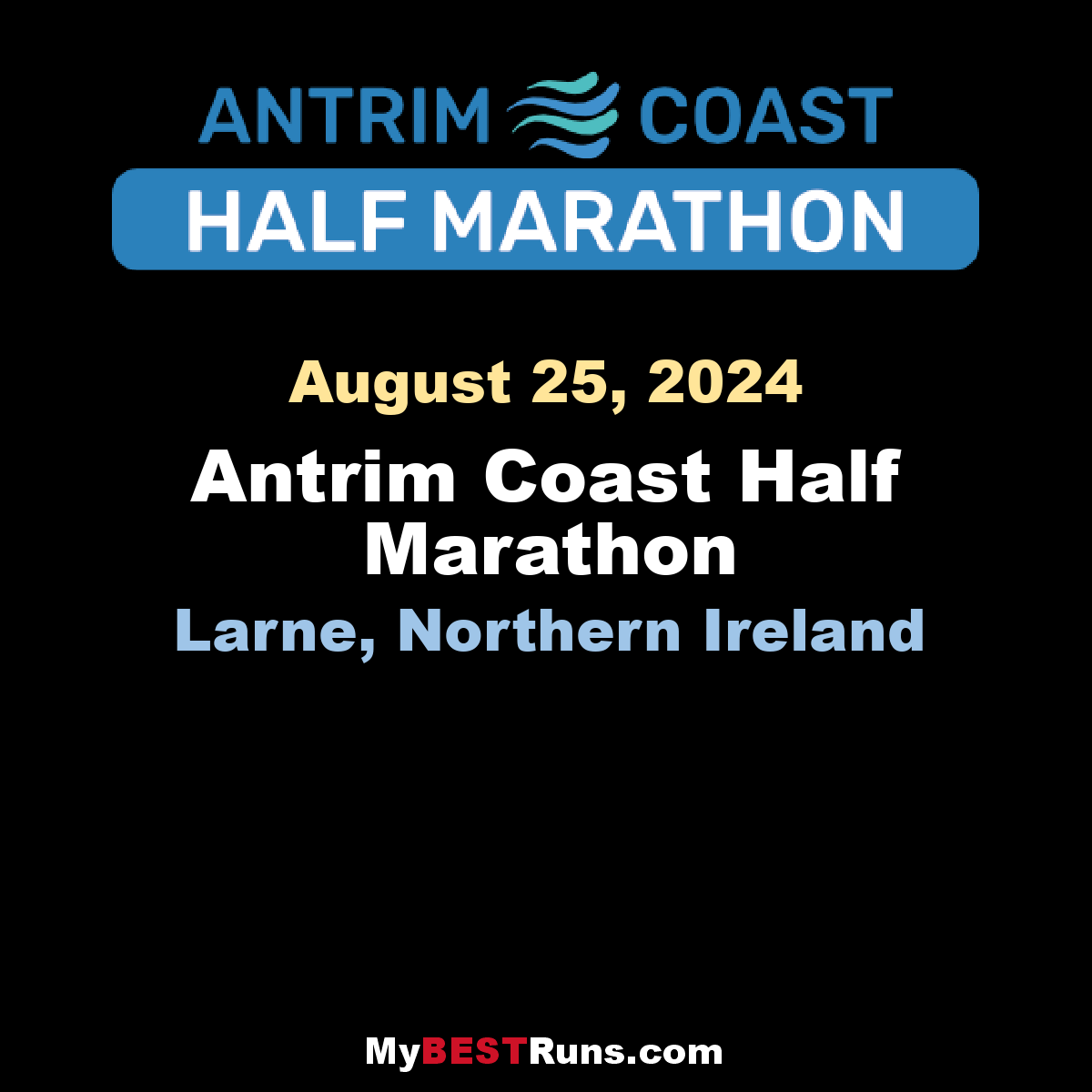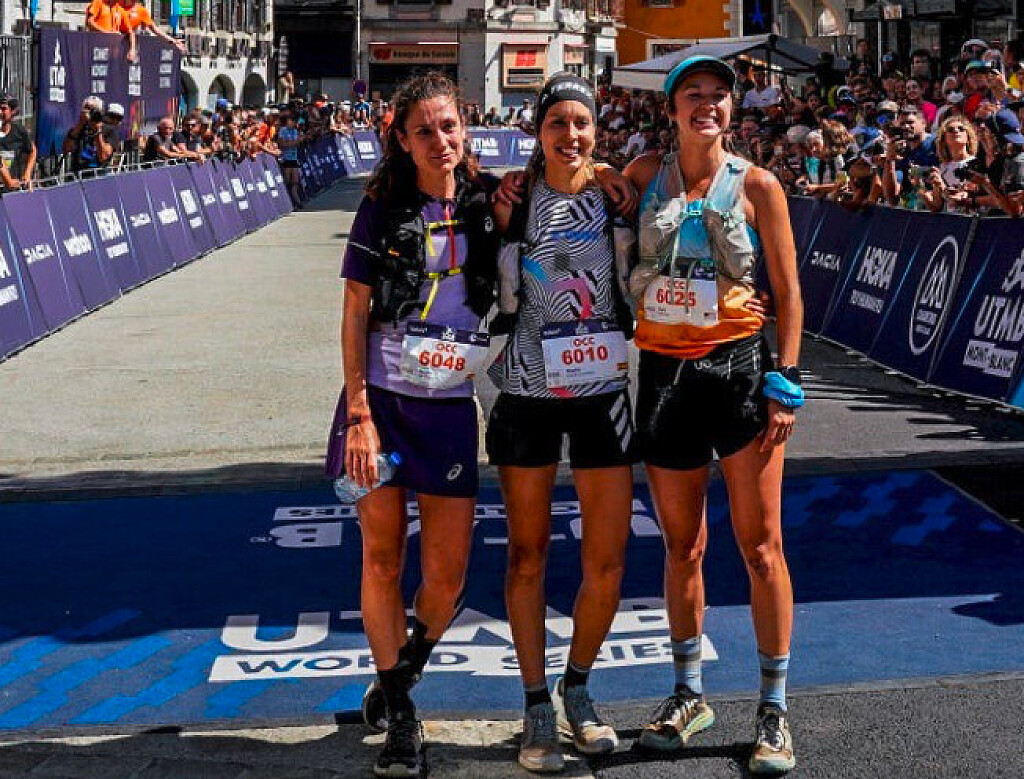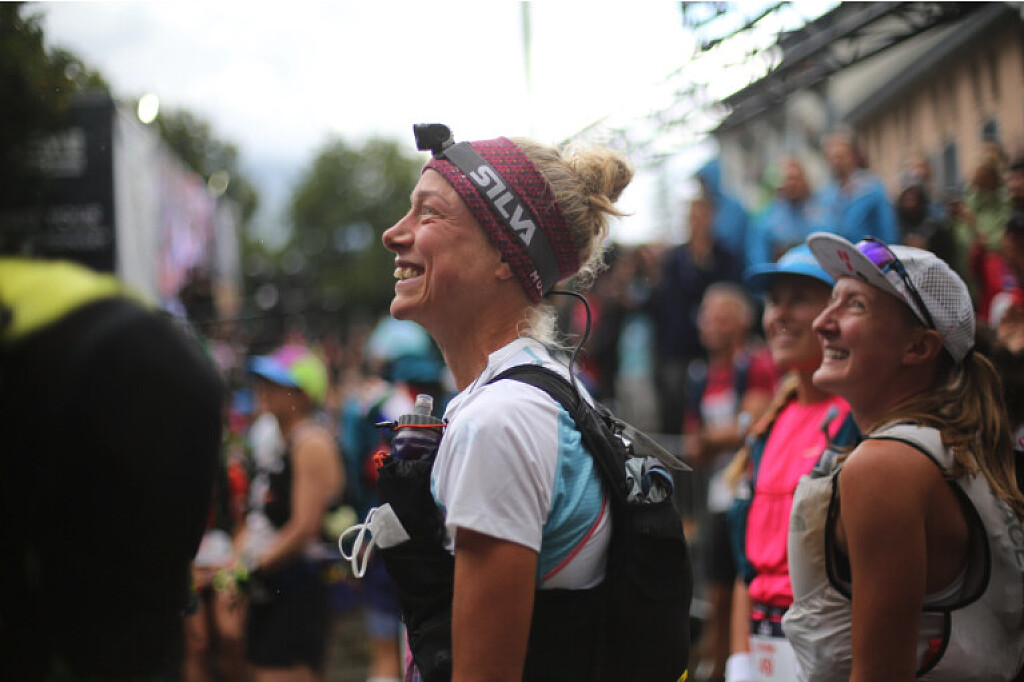Running News Daily
Running News Daily is edited by Bob Anderson in Mountain View, California USA and team in Thika Kenya, La Piedad Mexico, Bend Oregon, Chandler Arizona and Monforte da Beira Portugal. Send your news items to bob@mybestruns.com Advertising opportunities available. Over one million readers and growing. Train the Kenyan Way at KATA Running Retreat Kenya. (Kenyan Athletics Training Academy) in Thika Kenya. Opening in june 2024 KATA Running retreat Portugal. Learn more about Bob Anderson, MBR publisher and KATA director/owner, take a look at A Long Run the movie covering Bob's 50 race challenge.
Index to Daily Posts · Sign Up For Updates · Run The World Feed
Kiera D’amato wins the women’s 20k in a record time in her new haven debut
Keira D’Amato sprinted across the finish line. She threw up her arms in celebration as her body ripped through the banner at the line.
The crowd cheered as the announcer declared her time of one hour, four minutes and 59 seconds a course record for the 20k race.
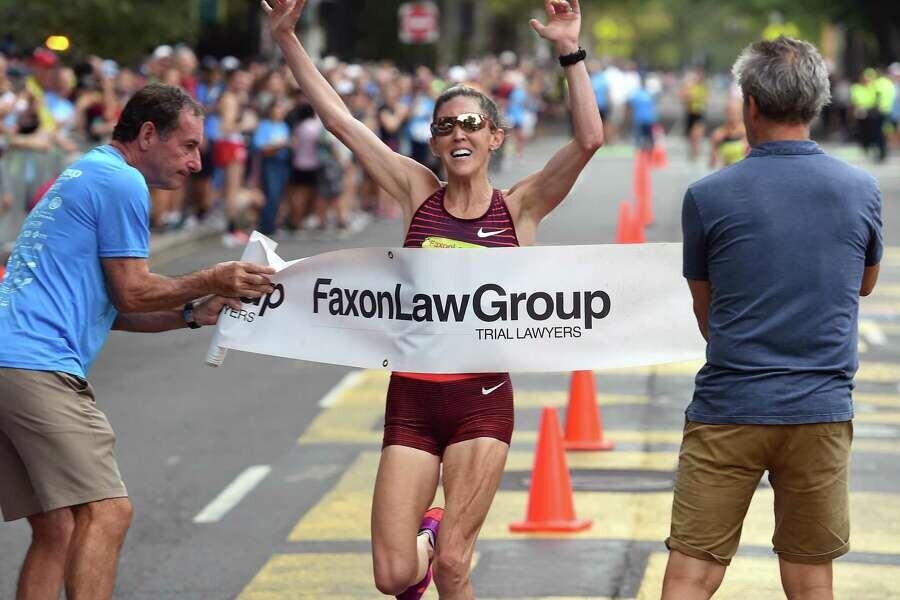
D’Amato looked left and found her mom, Liane, on the sideline holding a poster designed by D’Amato’s 6-year-old daughter, Quin. She ran over to her mom and embraced her in a hug.
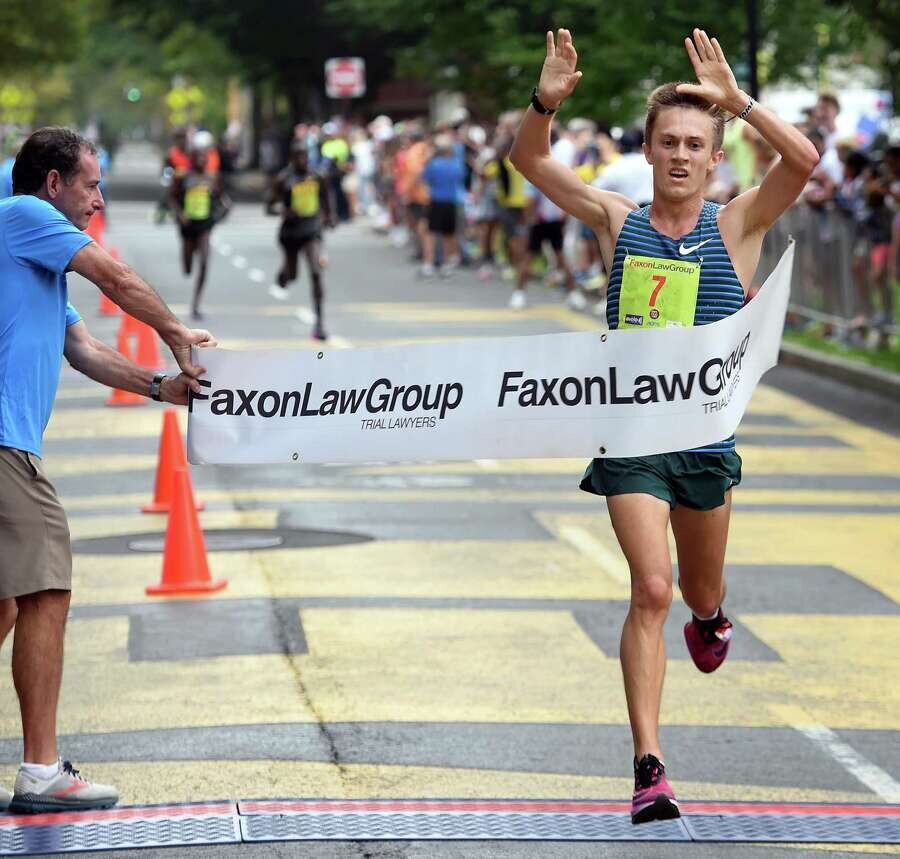
The 37-year-old walked away from running once before, yet she returned to the sport for moments like these.
“I kinda felt like running broke my heart and it wasn’t healed yet. But it was something in getting married and marrying into the D’Amato family, they’re a whole bunch of runners, that I learned how to love running again,” D’Amato said. “It’s with that love that I’m able to do things like this and I feel just so grateful to come out here and be with all these runners today.”
D’Amato won the USATF 20k National Championship Monday morning at the 45th annual Faxon Law New Haven Road Race by beating the course record from 1998 (Colleen De Reuck, 1:07:53). Emily Sisson, who finished behind D’Amato, also beat the former record, finishing Monday in 1:04:35. Monday was D’Amato’s debut in New Haven.
This year’s New Haven Road Race was limited to 4,500 runners across five different events, including the men’s and women’s 20k championship, a half marathon and a 5k.
Also having a standout debut in the 20k Championship was men’s winner Conner Mantz, who finished in 59:08. Mantz was followed by longtime Faxon Law competitor Leonard Korir in 59:13.
“It was a challenging race today,” said Korir, who’s raced in every Faxon Law New Haven Road Race since 2016. “Of course, I wanted to win, nobody wants to be second, but you know what, getting second is also good so I’m happy with that.”
D’Amato, from Midlothian, Va., and Sisson wasted no time separating themselves from the pack to start the women’s 20k. The two stayed together and crossed the Mile 3 mark at 15:31. Three miles later, there was a 300-meter-plus difference between them and the next women’s runner.
Sisson said the two traded off leading each mile until D’Amato began to pull away at Mile 8.
“I was like I’d rather win it than lose so I put a move in, and I could feel her hesitate a little bit so that gave me a lot of energy thinking like if I could just put in a couple more moves, like a quick, hard move, maybe I can take this,” D’Amato said. “It’s exciting, but it’s also terrifying to be in the front, like especially with somebody like Emily right behind you.
“Because I was like if I slow down at all, she’s gonna overtake me so it really kept me honest and kept me fighting through and I found more today than I even knew I had because of her, so I’m appreciative for sure.”
(09/05/2022) ⚡AMPNew Haven Road Race
Home of the Men’s & Women’s USATF 20K National Championship.The New Haven Road Race has again been selected to host the U.S. Men’s & Women’s 20K National Championship. The event expects to feature a number of past champions and U.S. Olympians.The New Haven Road Race is the LONGEST RUNNING USATF NATIONAL CHAMPIONSHIP! The race has been selected as Runner’s World...
more...Hellen Obiri to defend Great North Run title, Peres Jepchirchir in the mix
Defending champion Hellen Obiri and Olympic marathon champion Peres Jepchirchir will be in the women’s lineup for the Great North Run slated for September 11 in the streets of Newcastle.
Obiri won last year’s edition in 1:07:42. She is a two-time world 5000m champion and a two-time Olympic 5000m silver medalist. Obiri has a personal best time of 1:04:22 which she ran at the Ras Al Khaimah Half Marathon in February.
Jepchirchir, who will be making her debut, has a personal best time of 1:05.06 which she ran at the 2017 Ras Al Khaimah Half Marathon. She placed first during the World Athletics Half Marathon Championships in 2016 and 2020 in respective times of 1:07:31 and 1:05:16. Jepchirchir is also a former world half marathon record holder.
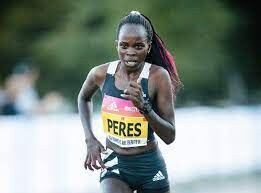
The Kenyan duo will be competing against the Ethiopian duo of Hiwot Gebrekidan and former Olympic 10,000m champion Almaz Ayana. Gebrekidan and Ayana have personal best times of 1:06:47 and 1:07:12 respectively.
Gebrekidan is the winner of the 2016 Copenhagen Half Marathon. She is also a former World Under-20 3000m silver medalist. Ayana won in the 2017 edition of the New Delhi Half Marathon. She is also a former world 10,000m record holder when she broke China’s Wang Junxia record during the 2016 Rio Olympics.
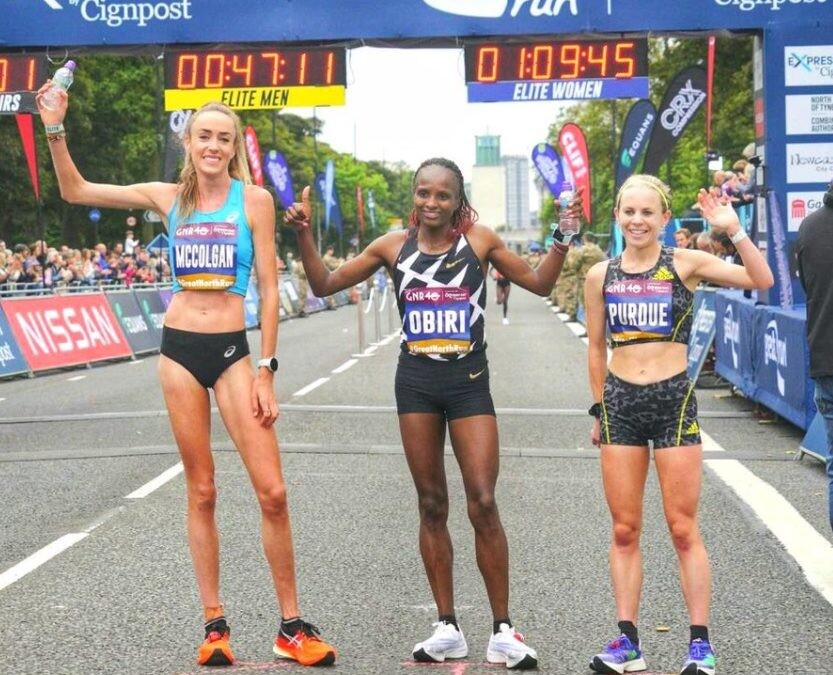
Charlotte Purdue and Jess Piasecki, both from Great Britain will also be in the race. Purdue placed third during last year’s edition of the Great North Run. She has a personal best time of 1:08:23 which she ran at the 2020 Kagawa Marugame International Half Marathon in Japan.
Piasecki has a personal best time of 1:07:20 which she ran at this year’s Santa Pola Half Marathon in Spain. She is also the winner of the 2019 Usti Half Marathon in Czech Republic. She will also be making her Great North Run half marathon debut.
(09/05/2022) ⚡AMPby Abigael Wuafula
Great North Run
Great North Run founder Brendan Foster believes Britain is ready to welcome the world with open arms after the launch of the event's most ambitious plan to date. The Great World Run campaign seeks to recruit one runner from every country in the United Nations – 193 in total – to take part in the iconic half marathon in...
more...Commonwealth Games relay champion Nwokocha given provisional doping ban
Nzubechi Grace Nwokocha, who was part of Nigeria's women's 4x100 metres relay team that dramatically won gold on the line at the Birmingham 2022 Commonwealth Games, has been provisionally suspended by the Athletics Integrity Unit (AIU) for testing positive for a banned substance.
Nwokocha infamously dipped to the line to beat the hosts England on the anchor leg to put her team - also consisting of Tobi Amusan, Favour Ofili and Rosemary Chukwuma - top of the podium.
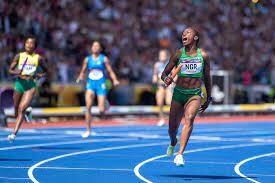
The 21-year-old tested positive for ostarine and ligandrol, according to the AIU.
It could lead to England being promoted to gold in the relay and Jamaica moved into silver.

Australia would be promoted to bronze if Nigeria are disqualified.
Ostarine is an anabolic steroid that is not approved for human use or consumption in the United States, the country where Nwokocha has trained while at university.
Ligandrol is used to increase energy, improve athletic performance and increase muscle growth.
Testing positive for prohibited substances carries a penalty of up to four years, meaning the Nigerian could miss the Paris 2024 Olympic Games and the Victoria 2026 Commonwealth Games if found guilty.
At the Tokyo 2020 Olympics, Nwokocha made the semi-finals of the women's 100m and 200m, reaching the same stage in both races at this year's 2022 World Athletics Championships in Eugene.
The Nigerian was fifth at Birmingham 2022 in the women's 100m final too.
Nwokocha also finished sixth this year in the National Collegiate Athletic Association (NCAA) 100m and 200m finals.
She is not the first prominent Nigerian to face a ban, with Olympic, world and Commonwealth champion Blessing Okagbare given a 10-year ban earlier this year for multiple cases of doping, as well as refusing to comply with the investigation.
Failures in Nigerian anti-doping left several athletes to miss the Tokyo 2020 Olympics, as they were deemed to have not been tested enough prior to the Games.
(09/05/2022) ⚡AMPby Michael Houston
Bahamian athlete Sprinter Shavez Hart killed in Abaco
The track and field community of The Bahamas was hit hard over the weekend as it lost one of its own to a senseless act on his home island of Abaco in The Bahamas.
According to a police report, Shavez ‘Sparky’ Hart, one of the best all-around sprinters in Bahamian history, was gunned down shortly after 2 a.m. on Saturday morning near a business establishment situated in Mount Hope, North Abaco.
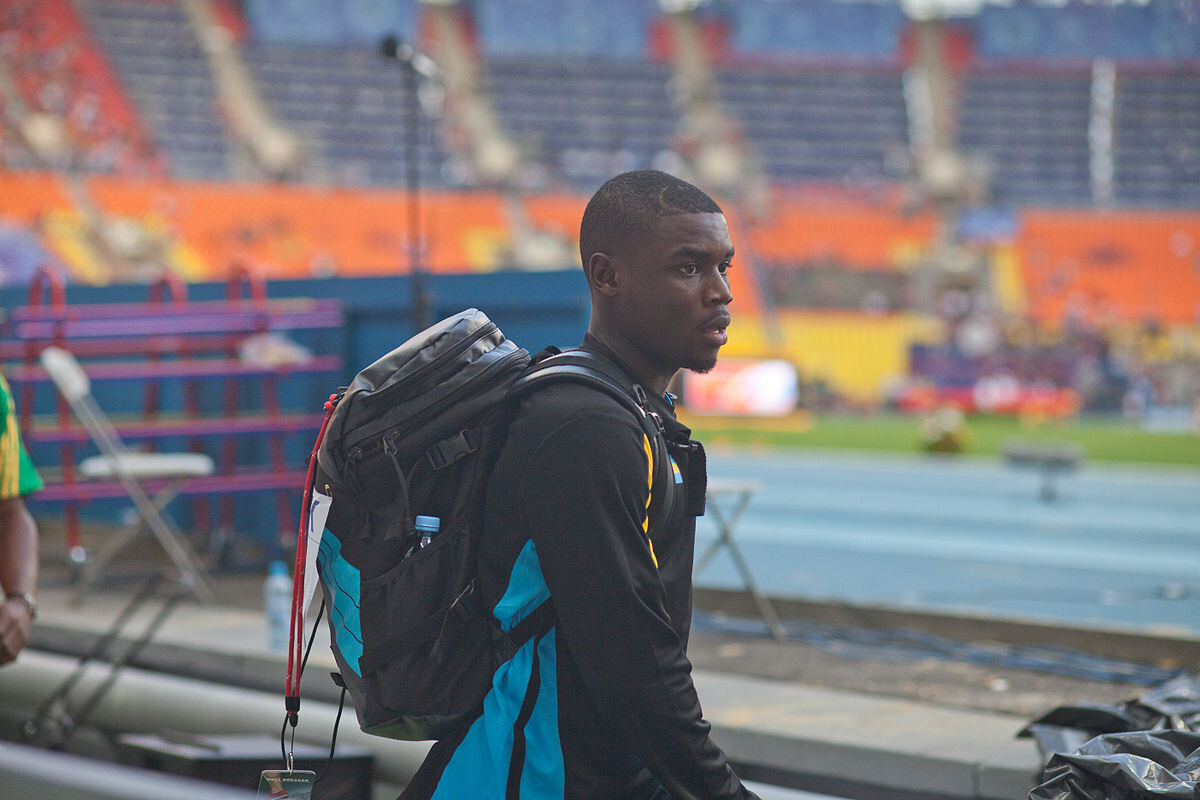
Hart, just three days short of his 30th birthday, represented The Bahamas at all levels of track and field, reaching as high as the world championships and the Olympic Games. He had personal best times of 10.10 seconds and 20.23 seconds in the 100 and 200 meters (m) respectively, and was a formidable 400m runner as well, thereby setting his mark as one of the best 100-200-400 combo runners in Bahamian history. Indoors, he had personal best times of 6.60 seconds in the 60m and 20.57 seconds in the 200m.
Hart was more known for his accomplishments in the short sprints, but it’s actually in the 400m, as a part of a relay squad, in which he achieved his most prestigious medal. Stepping in with two of The Bahamas’ ‘Golden Knights’, Chris ‘The Fireman’ Brown and Michael Mathieu, Hart won a silver medal in the men’s 4x400m relay at the 16th International Association of Athletics Federations (IAAF) World Indoor Championships in March 2016 in Portland, Oregon, United States. Hart teamed up with Brown, Mathieu and Alonzo Russell, and they ran a national record time of 3:04.75 for the silver medal.
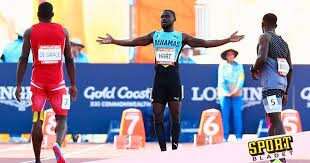
Hart never really reached his full potential on the senior side at global meets, but his times have him listed in the top five in Bahamian history in the short sprints. He is at number four in the 100m and tied for fifth with another of the ‘Golden Knights’, Demetrius Pinder, in the 200m.
According to the police report, a group of men were involved in a physical altercation in the parking lot of a local night club on North Abaco early Saturday morning. One of the men left, returned with a firearm and discharged the weapon, shooting Hart in the chest. EMS (Emergency Medical Services) attended to the victim and found no signs of life. He was later transported to the Marsh Harbour Clinic where he was seen and examined by a doctor and pronounced dead. The report continued, stating that the suspect in this matter was later arrested and taken into police custody, and that investigations are continuing.
Shavez’s mother said her son was trying to defuse an altercation between two men when he was caught in the middle and shot. It was reported that the subject attempted to shoot another man and ended up shooting Hart.
“He was such a good son – very quiet and always helpful,” said his mother Shammaine Hart. “He did a lot of work in the community and was always trying to give back. I will certainly miss him.”
Hart was well-loved in local track and field circles.
Speaking from Europe where she is busy running on the circuit, Anthonique Strachan who represents the athletes locally, and who was just elected as a Member-at-Large for the North American, Central American and Caribbean Athletic Association (NACAC) Athletes’ Commission, said she is devastated by the news.
“This is just too much. Shavez was the sweetest, most kind-hearted person you would ever meet. He was dedicated in everything he did and he was a guy who wore his heart on his sleeve even though he showed minimal emotions,” said Strachan. “I’m still very shocked. I wish the best for his son and his family and will continue to pray for them during this most difficult time. His son, who I believe hasn’t turned one yet, will never really get to experience his father – just knowing what is told to him. He will never get to see the great person that his dad was, and how driven and dedicated his father was in everything that he put his mind to – from school, to sports to becoming an entrepreneur.
“It’s very hard to grasp that something like this happened. Condolences to his mom, his dad, his son and his entire family. This is so heart-wrenching and so sickening. There are a lot of innocent people being killed and I hope the government does something to put a serious clamp on the gun violence that is happening in the country.”
Strachan said she last spoke to Hart via phone during the NACAC Championships in Freeport, Grand Bahama, in August, and he vowed to attend the event for the weekend but it never materialized. She said in speaking to the athletes, they have decided to make a donation to the family, setting up a GoFundMe account.
NACAC President and former BAAA President Mike Sands said he was saddened by the news of Hart’s unfortunate and unexpected demise.
“He was a great athlete who competed with true grit and determination. It was always a pleasure being in his presence,” said Sands. “He was a very humble and a mannerly young man who always greeted you with a smile. My condolences goes out to his immediate family and the wider track and field family. Let fond memories of ‘Sparky’ comfort us all during this difficult period. I also take this opportunity to urge everyone and our young men, in particular, to seek conflict resolution rather than violence that all too often ends tragically.”
(09/05/2022) ⚡AMPby Sheldon Longley
Marathon workouts for the time-crunched runner
Try one of these sub-60-minute workouts to polish off your marathon training. Contrary to popular belief, marathon training doesn’t have to take over your life; efficient prep for a speedy marathon can be accomplished in less than an hour. Combine one of these sessions with some easy running days and a slightly longer run, and you’re set for the week.
Race Pace Repeats
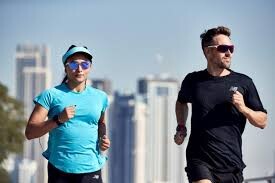
This interval session is a favorite of renowned coach Luke Humphrey, author of Hansons Marathon Method, who ran a similar workout in his college days. He recommends it to his runners working on time-crunched training schedules. As you improve, Humphrey recommends reducing recovery time to only one minute.
Warm up with 10 minutes easy running
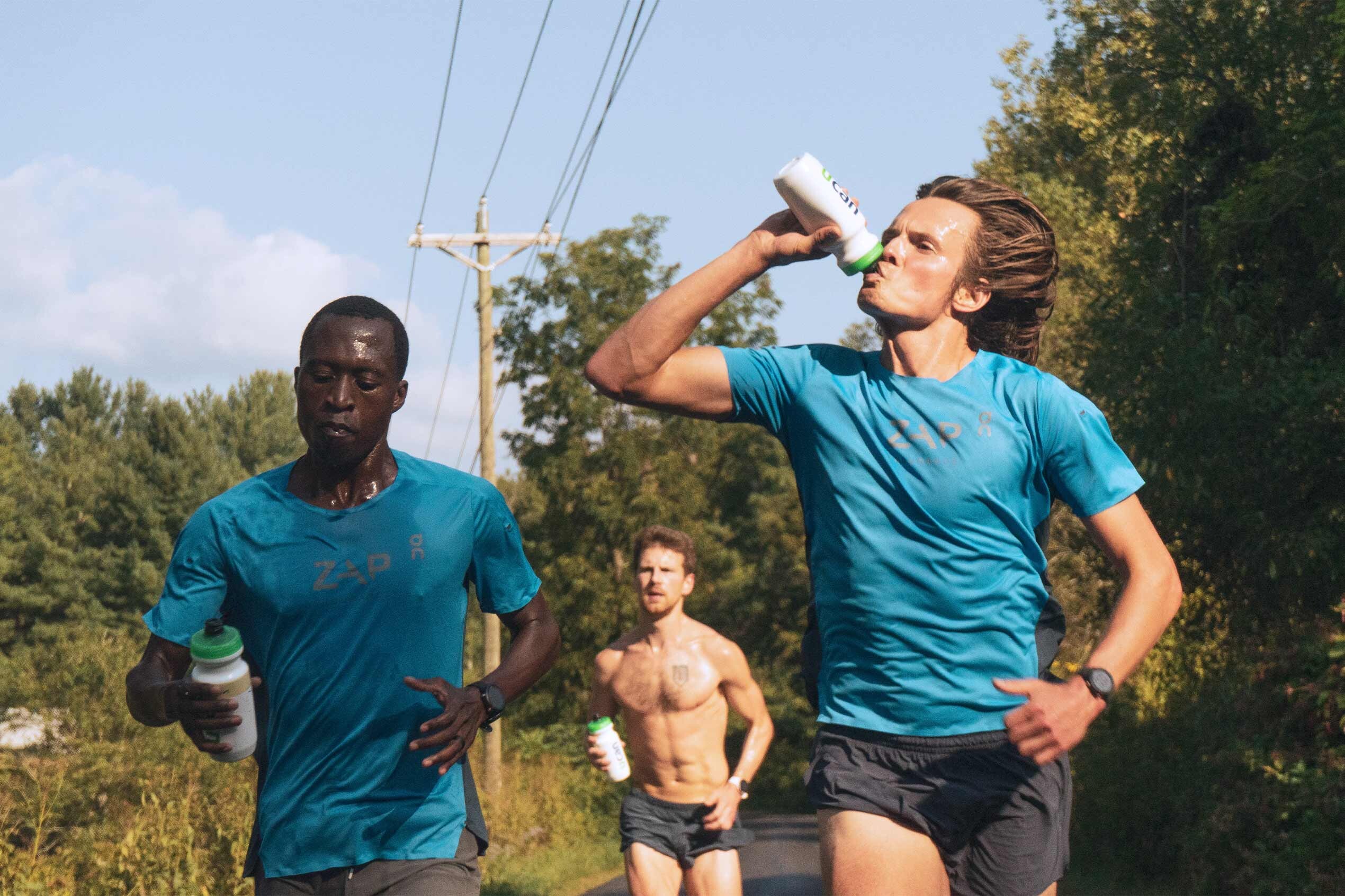
Run five minutes at marathon pace, with two minutes easy recovery, repeat five times
Cool down with five minutes of easy running
Threshold Intervals
This interval workout pushes your aerobic threshold–the limit at which your body can work before lactic acid begins building up. Designed to keep your heart rate up for long enough to build strength without causing exhaustion, threshold intervals will make your goal race pace feel easier.
Warm up with ten minutes easy running
Run two minutes at 80 per cent effort, two minutes recovery at an easy pace, repeat eight times
Cool down with five minutes easy running
Progression run for strength
This is a great workout to run if the race you’re training for has a hilly course. The 12 minutes of faster running at the end of the workout challenges both your legs and lungs, improving overall efficiency.
Warm up with eight minutes of easy running
Run 15 minutes at goal marathon race pace
Run 12 minutes at a hard pace (try your goal 10K race pace)
Cool down with eight minutes of easy running
Follow any hard workout with easy running or a recovery day, and make sure to hydrate well.
(09/05/2022) ⚡AMPby Running Magazine
Eilish McColgan storms to course-record-smashing win at The Big Half in London
Eilish McColgan has done it again. At The Big Half 21.1K in London on Sunday, McColgan determinedly chased down victory in 67 minutes, 34 seconds, knocking over two minutes off of Charlotte Purdue‘s course record of 69 minutes, 51 seconds. McColgan was followed by Purdue in 70:15 and Samantha Harrison in 70:22.
Scotland’s McColgan, who withdrew on Friday from a much-anticipated 2022 London Marathon debut due to a condition called rebound hypoglycemia, left fans with no doubt as to her running ability. Her victory caps off a remarkable season for the athlete, including Commonwealth Games gold at 10,000m and a new British half-marathon record of 67:26.
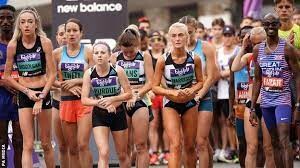
The 2023 London Marathon returns to its regular timing in April, so McColgan will not have to wait an entire year for her London Marathon debut. “It is disappointing and if it was up to me I would probably try and batter on, muscle through, but I know that is my heart speaking. The sensible decision is to get everything right for April,” she told press.
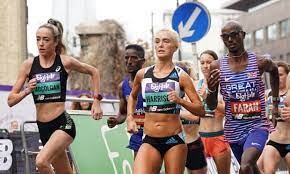
Legendary British athlete Sir Mo Farah ran to his third win at The Big Half in 61 minutes, 49 seconds, in what was only his second race of the season. In May, Farah lost a 10,000m race to amateur runner Ellis Cross, sparking rumours of retirement.
He announced his intention to return to the TCS London Marathon in July, and quelled some of the talk around his career with Sunday’s performance, breaking away from the pack with three miles to go. Farah was followed by Jack Rowe in 62:04 and defending champion Jake Smith in 62:10.
(09/05/2022) ⚡AMP
by Keeley Milne
The Vitality Big Half
Created by London Marathon Events Ltd, in partnership with Sported,The Vitality Big Half is a community running festival, taking place in London in March. This one-day event offers a host of running distances, from a challenging half marathon to a free one-mile course, as well as a family-friendly festival of food, music and activities. What’s happening? Take part with friends...
more...IRELAND SHINES AT WORLD MASTERS MOUNTAIN RUNNING CHAMPIONSHIPS
Saturday's (Sept 3) weather may have been overcast in Clonmel but Irish athletes blazed the Comeragh Mountain trails to take an impressive haul of medals at the 21st World Masters Mountain Running Championships.
With a population of just 5.1 million, Ireland produces more than its fair share of strong mountain runners versus much larger countries who sent teams to this world championship for athletes ages 35 to 79. Irish mountain runners took home eight of eighteen available team gold medals and four individual gold medals.
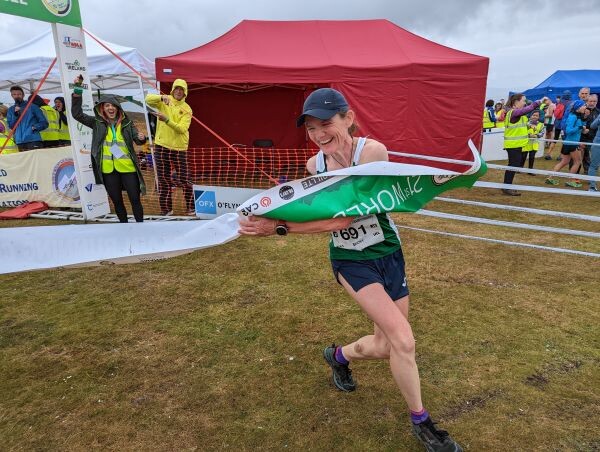
The fastest times of the day were recorded by Thomas Roach (GBR - M40) in 42:00 and Victoria Wilkinson (GBR - W40) in 53:17 on the 10.6km long course with 602 meters of climbing. On the 8.4km short course with 500 meters of climbing it was Franco Torresani (ITA - M60) in 42:09 and Nicoletta Fearari (ITA - W55) in 50:50 who ran the fastest times.
Another performance of note was that of co-race director and course designer Tom Blackburn (IRL) who won a bronze medal in the male 55-59 age group running 44:37, just 20 seconds behind the winner in his age group.Races kicked off in age group waves starting at 10:00 AM under perfect weather conditions for runners; overcast, light breeze and temperatures in the high 50s (F) slowly rising into the low 60s (F).
Only a brief period of light drizzle would interrupt this pattern until the final wave at 1:45 PM.Running on the short course, the W75 race was won by Barbara Prymakowska (POL) in 1:16:40. The W70 gold medal went to Margret Gottnauer (GER) in 1:00:56. The first Irish gold went to Pauline Moran (IRL) who won the W65 age group in 55:50.
Ana Mori Aguado (ESP) won the W60 class in 52:18. Representing a strong Italian contingent, Nicoletta Ferrari (ITA) won gold in the W55 class in 50:50; the fastest women's short course time.Also running the short course, James Patterson (GBR) took gold in the M75 age group in 58:12. Adolfo Accaliai (ITA) led an Italian podium sweep of the M70 age group in 48:49.
The first Irish men's gold medal of the day went to Martin McDonald (IRL) in the M65 class in 48:27. Franco Torresani (ITA) won the M60 class in 42:09. Over 60 runners finished the M55 men's race but it was Tom Tipping (GBR) who bested them all in 44:17.
(09/04/2022) ⚡AMPby Richard Bolt
Mo Farah warms up for London Marathon with his third victory in the Big Half
Sir Mo Farah enjoyed a timely return to form ahead of next month’s London Marathon with a third victory in the Big Half.
The four-time Olympic champion suffered a shock loss to club runner Ellis Cross at the Vitality 10k in London in May to spark further talk of retirement.
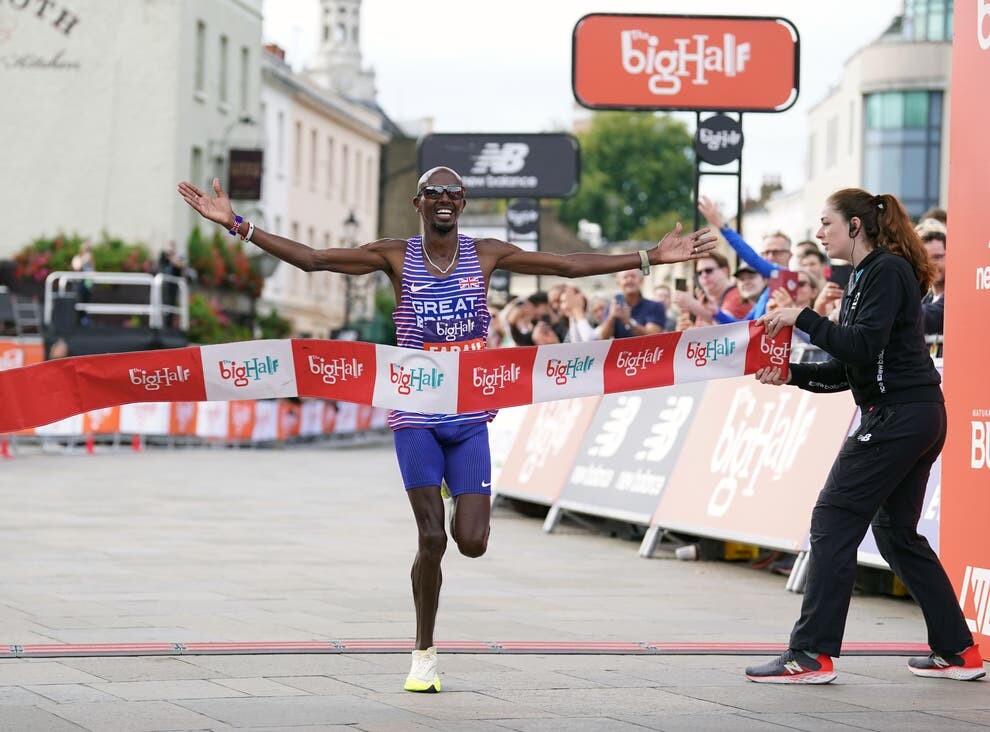
Farah helped silence some of the external noise with an impressive run on this occasion in the capital and crossed the finish line in Greenwich with a time of 61 minutes and 49 seconds after storming clear of his nearest rivals during the last three miles of the 13.1-mile course.
It was only the 39-year-old’s third-fastest run in the Big Half but still enough to edge out Jack Rowe and defending champion Jake Smith, who finished second and third respectively.
Eilish McColgan won the women’s elite race in record time.
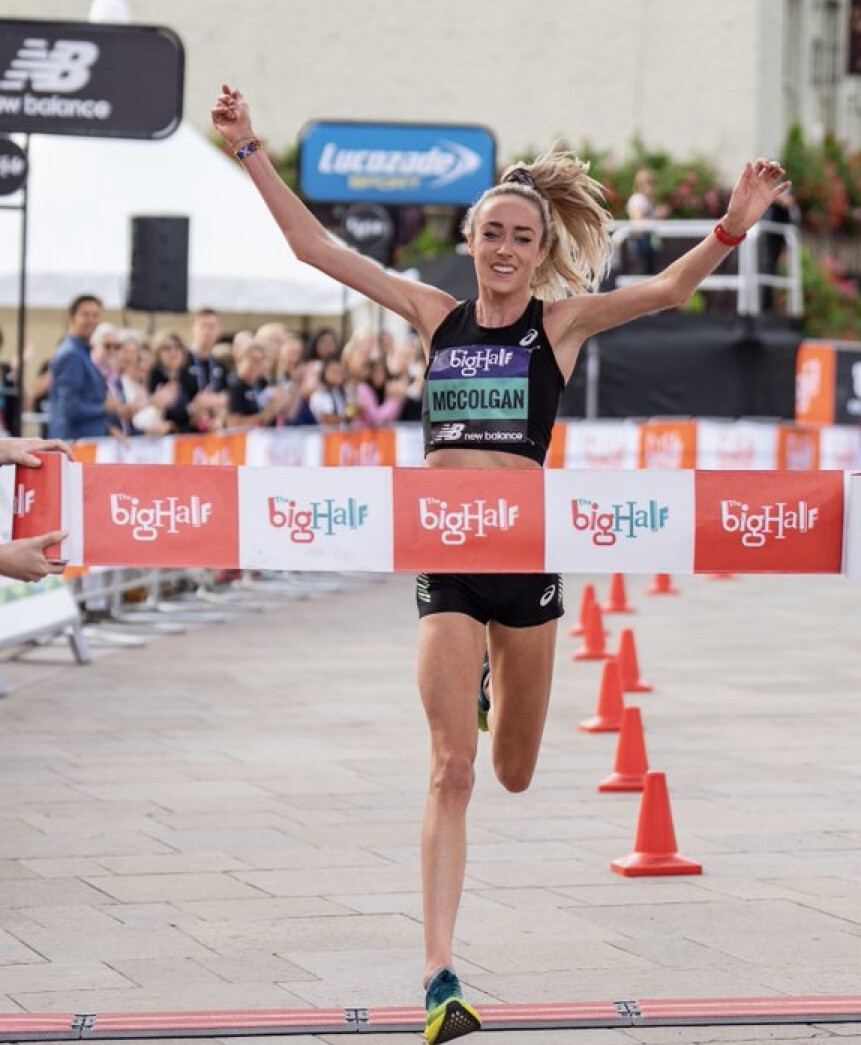
Scotland’s Commonwealth Games gold medallist Eilish McColgan claimed victory in the elite women’s race with a record time of 67.34 minutes but unlike Farah she will not be competing in the London Marathon after it was announced on Friday.
Eilish posted, "67:34. Course Record
"An atmosphere running the streets of London! Happy to take the win and knock over 2mins off the course record.
"Tough running solo over the last half of the race but it was more of a challenge not to smile with everyone cheering us along."
Farah told BBC sport, “Today wasn’t easy but most important is the win and it is nice to be back."
“It is really nice to see my family here and so many people come out. It is family-friendly but most importantly for me, it is the streets of London and just the support and atmosphere, it is brilliant and makes you want to come back every year again and again.
“The key thing for me today was to try and win, no matter what happened.
“It was to play around with things, pick up my drink and all practice ahead of the London Marathon.
“I’m excited, I’m looking forward to it. The last seven weeks it has been good, I’ve got consistent training going, so I’m happy with where I am. The next step is this afternoon I’ll fly out and get ready for the next four weeks, get my head down and see what I can do.
Farah was competing for just the second time in 2022 and eager to bounce back from his disappointment in May.
After being part of a five-man group for the first half of the London event, the multiple gold-medal winner used his experience to pull away after refuelling at the 11-mile mark.
His winning margin was slower than his 2018 and 2019 victories but provided the British athlete with a confidence booster ahead of taking on next month’s London Marathon.
Fellow Olympian McColgan will not be competing in October’s 26.2-mile race having been hit by a reaction to taking on fuel during long practice runs.
The issue has been identified as rebound hypoglycemia, a common occurrence among endurance athletes which leads to reduced blood sugar levels and means there is not enough glucose in the blood to meet the body’s demands.
But McColgan stuck to water on Sunday and bettered Charlotte Purdue’s time of 69.51 minutes last year to show she will be a force to be reckoned with if she can compete as planned in the 2023 London Marathon.
(09/04/2022) ⚡AMPThe Vitality Big Half
Created by London Marathon Events Ltd, in partnership with Sported,The Vitality Big Half is a community running festival, taking place in London in March. This one-day event offers a host of running distances, from a challenging half marathon to a free one-mile course, as well as a family-friendly festival of food, music and activities. What’s happening? Take part with friends...
more...‘We Are Here Because of Him’: The Runner Who Defied Apartheid
In the dying days of South Africa’s apartheid regime, pioneering Black runners helped transform the Comrades Marathon into the race it is today, one that reflects the country around it.
On a balmy Sunday morning in late August, Kgadimonyane Hoseah Tjale stood below a stadium full of roaring fans on the finish line of the Comrades ultramarathon, clutching a small air horn.
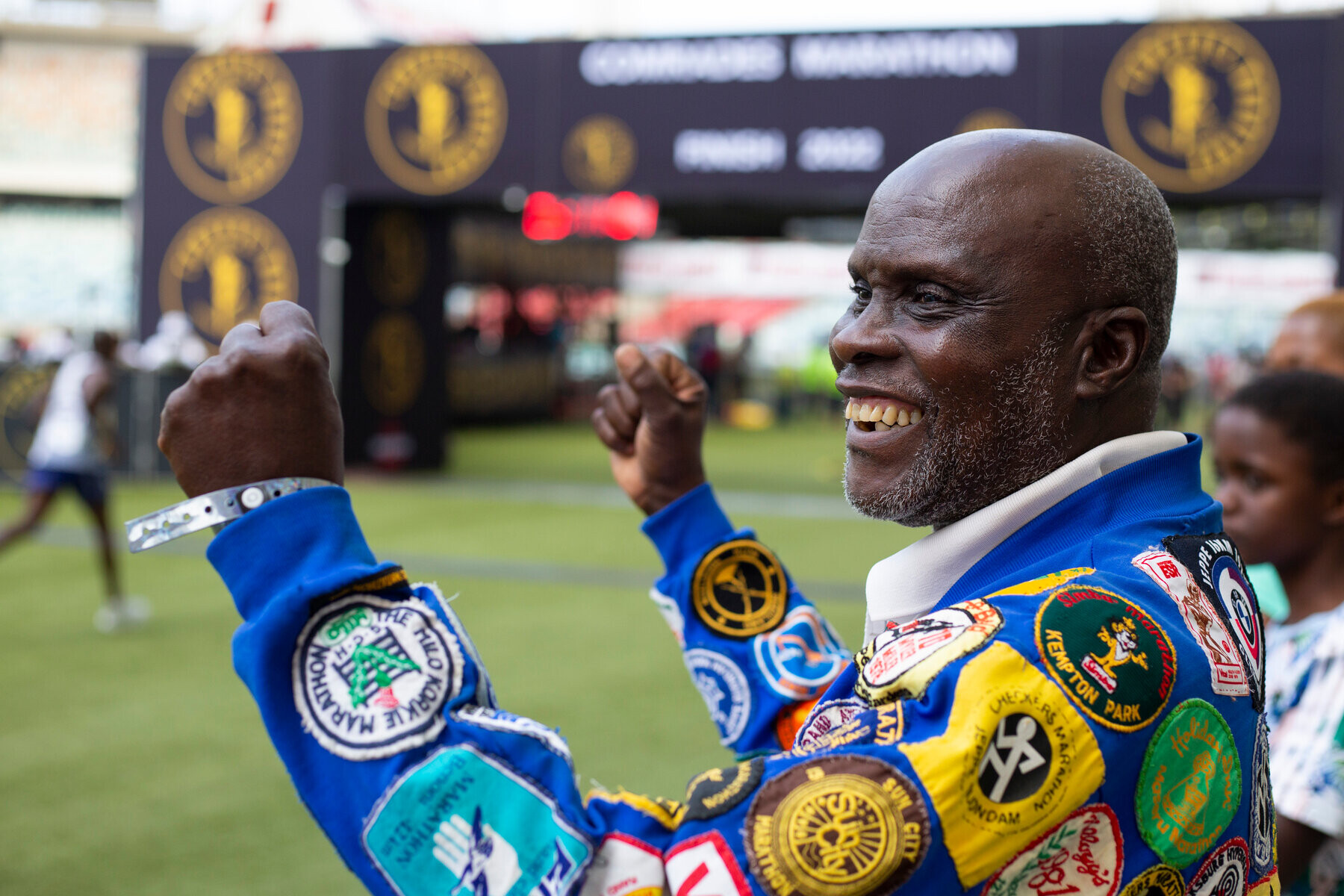
He had been here before. In the 1980s and early 1990s, Tjale racked up four podium finishes at the Comrades, a 56-mile race between the South African cities of Pietermaritzburg and Durban. Today, it is the largest ultramarathon in the world, attracting a field of up to 20,000 runners, throngs of spectators and millions of live television viewers.
The story of how the Comrades became the race it is today is bound up in the story of Tjale and other pioneering Black runners of his generation. In the dying days of South Africa’s apartheid regime, they helped transform the race from a poky, amateur affair into an enormous event that looks much like the country around it.
They did so from one of the most uneven playing fields in the modern world.
Back at the race for the first time in 29 years, Tjale marveled as the top finishers sprinted past him. In his days, nearly every top runner was white. Now, all the top men were Black, wearing the jerseys of big corporate running clubs that paid for them to attend training camps. The 2022 men’s race winner, a university security guard named Tete Dijana, earned around $42,000 in prize money and bonuses. It was equivalent to about a decade of his salary.
“There was none of that in our times,” said Tjale, a retired delivery driver who was living in a shack north of Johannesburg when he ran his final Comrades race in 1993, when the race did not offer a cash prize.
(First photo) The start of the Comrades Marathon at the Pietermaritzburg City Hall. Credit...Rogan Ward for The New York Times
Tjale had been invited back by the Comrades’ organizers to sound a horn marking the cutoff for a special medal given to runners who finish in less than six hours. In the car from the airport two days before, Tjale asked one of them why they had invited him.
Tjale had been invited back by the Comrades’ organizers to sound a horn marking the cutoff for a special medal given to runners who finish in less than six hours. In the car from the airport two days before, Tjale asked one of them why they had invited him. He’d never won the race, after all.
But for Comrades runners, the reason was obvious.
“We are here because of him,” said Freddie Wilson, a runner from Johannesburg, as he waited to take a photograph with Tjale at the race expo. His voice shook with emotion.
Like many Black South Africans, Wilson grew up watching Tjale on TV. His family didn’t have a television, but on Comrades Sunday they would crowd with others in their neighborhood into the lounge of a family who did and spend the entire day watching the race.
Wearing a bucket hat and running with a distinctive, lopsided gait, Tjale was a revelation in the front pack. From inside a country whose government was purpose-built to stifle the ambitions of Black South Africans, here was a Black man doing something audaciously ambitious, for the whole country to see.
(Third photo) Spectators running with Tjale in a Comrades Marathon during the 1980s.Credit...The Comrades Marathon Association
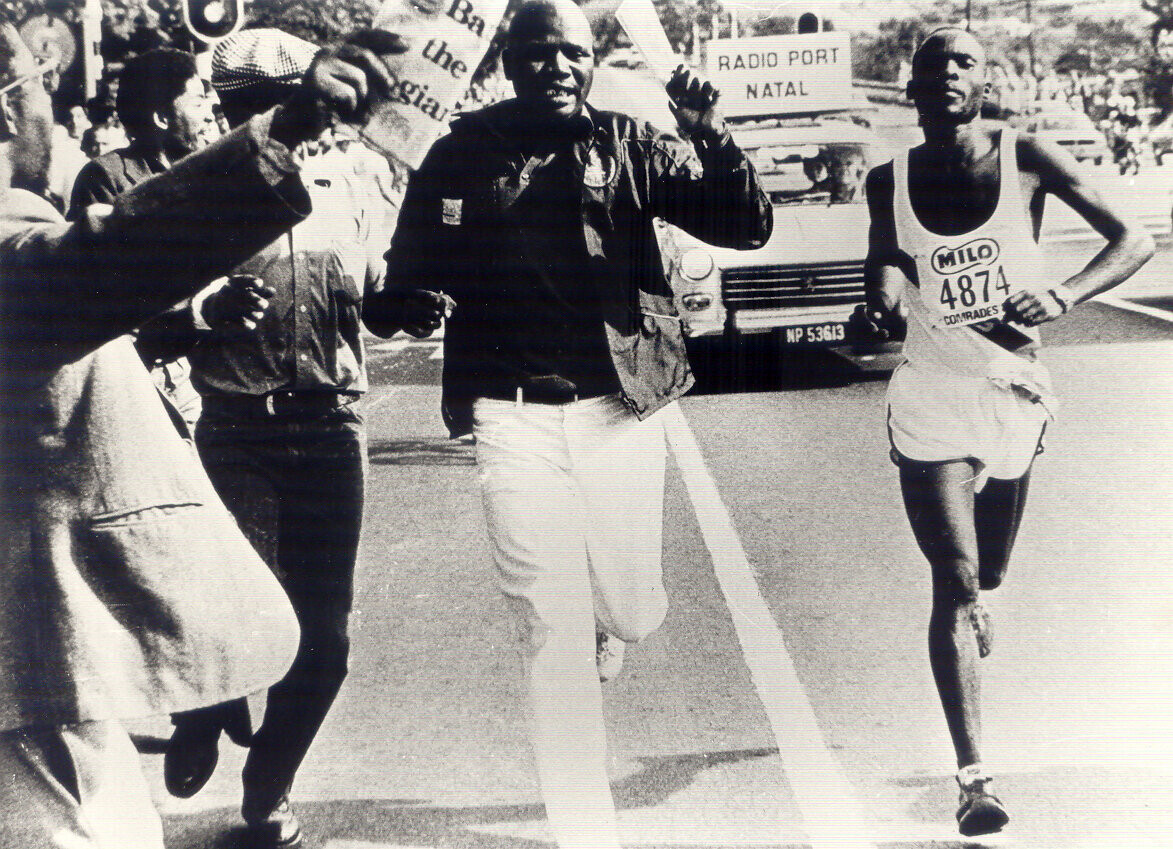
“He was our great,” Sello Mokone, who has run the Comrades 18 times, said. “The moment we saw a Black guy doing this, we knew we could do it too.”
At his peak, Tjale could run 56 miles at a pace of just over six minutes a mile. He racked up dozens of wins at ultramarathons, including at South Africa’s other famous ultra, the 35-mile Two Oceans. Twice, he almost defeated the Comrades’ white folk hero, a floppy-haired blond man named Bruce Fordyce, who won the race nine times between 1981 and 1990.
Bob de la Motte, a white runner who finished second to Fordyce three times, said that Tjale “was the better athlete.”
But while Fordyce focused full-time on the Comrades, living off money from speaking gigs and corporate sponsorships, Tjale worked as a delivery driver, running 15 miles from the crowded workers’ hostel where he lived to his job. On weekends, he ran every local race he could find, from 10 kilometers to 100 kilometers (6.2 miles to 62.1 miles), for prize money to supplement his income.
“He was lucky,” Tjale said of their rivalry.
Tjale grew up in the 1960s in a rural area near the city of Polokwane, formerly known as Pietersburg. He dropped out of school after eighth grade. A few years later, he moved to Johannesburg to work as a live-in gardener for a white family. There, he clipped hedges during the day and washed the family’s dishes after dinner. In between, sometimes, he went for a jog.
In the late 1970s, his running caught the attention of his employer, who helped him buy a pair of sneakers and join a running club. He began entering races, and soon, winning.
It was an auspicious moment to take up distance running. At the time, South Africa was subject to widespread international sports boycotts, which kept the country out of most major events. The nation was desperate to get back in, and in the mid-1970s, the apartheid government announced it would desegregate a minor sport, running.
Amid a global boom in running, entries at races like the Comrades began to tick upward. And South Africa’s single state-run TV station began broadcasting the Comrades live in the early 1980s. Millions watched Black runners like Tjale and white competitors like Fordyce share bottles of water and sling their arms over one another at the finish line.
“In the Comrades, everyone needed help at some point, and people always gave it,” said Poobie Naidoo, another elite South African distance runner from the 1980s, who is of Indian heritage.
But the moment runners like Tjale and Naidoo stepped off the course, they returned to an apartheid reality. In 1979, not long after his first Comrades, Tjale was arrested on his way to work for not having documents showing he was allowed to be in a white part of the city. He spent a night in jail.
“On the road was the only place I sometimes felt like apartheid wasn’t there,” Tjale said.
In 1989, both Tjale and Fordyce participated in a 100-kilometer world championship. Because of the timing, Fordyce skipped the Comrades, and Tjale ran it on tired legs. Another runner, Sam Tshabalala, became the race’s first Black champion. Tjale, meanwhile, ran his final Comrades in 1993, quietly finishing 51st.
In 2016, Tjale, a reserved man with an easy laugh, retired to a 20-acre farm he bought near Polokwane. It was one of the first times since he married in the 1970s that he and his wife had been able to live together, and they spent quiet evenings on their couch cracking jokes and watching soap operas.
He didn’t think much more of the Comrades, besides occasionally turning down invites to events the race hosted. “I was done with that thing,” he said simply.
But this year, a Comrades Marathon Association board member named Isaac Ngwenya called with a plea. Would Tjale come and let himself be honored. He agreed and last weekend boarded a plane for Durban.
Tjale arrived to a race radically transformed from the one he left. At the Comrades expo, thousands of runners — most of them Black — milled around, trading training stories. The night before the race, more than 300 people slept in the Pietermaritzburg Y.M.C.A., where race organizers put up entrants who could not afford accommodation.
“It’s something I can show my son, and myself — that I did this thing,” said Cynthia Smith, a security guard, as she stretched out on her foam mattress.
On the start line at Pietermaritzburg City Hall the next morning, more than 13,000 runners sang an old migrant laborers’ song called Shosholoza, whose title means “go forward.” The gun popped, and they surged into the winter morning.
“It’s like living your entire life in a single day,” Tommy Neitski, a 42-time finisher, said of the race’s mass appeal. It’s also like seeing all of South Africa in a day, on a course that winds its way past shacks and boutique hotels, sugar cane fields and gritty industrial towns.
Tjale arrived at the finish line at Durban’s Moses Mabhida Stadium to sound the six-hour horn. Waiting in a V.I.P. lounge, he ran into Jetman Msuthu-Siyephu, winner of the 1992 race. They spent the morning trading memories.
As the day wore on, the two men watched the salt-streaked runners pour in by the thousands, dissolving in joy and exhaustion as they stumbled over the finish line. Tjale couldn’t stop smiling.
“When we go,” he said to Msuthu-Siyephu, “we will have left something for this world.”
(09/04/2022) ⚡AMPby Ryan Lenora Brown (New York Times)
Comrades Marathon
Arguably the greatest ultra marathon in the world where athletes come from all over the world to combine muscle and mental strength to conquer the approx 90kilometers between the cities of Pietermaritzburg and Durban, the event owes its beginnings to the vision of one man, World War I veteran Vic Clapham. A soldier, a dreamer, who had campaigned in East...
more...Groundbreaking New Study on Pregnancy and Performance
On the morning of August 27, Allison Baca was greeted by a foreboding gloom at the trailhead beneath 13,229-foot Mount Audubon, in Colorado. She decided to give her objective a shot anyway, planning to turn around if the weather went from gloom to doom.
With her partner Tony, she had blocked off this date on the calendar weeks in advance as her chance to spend all morning in the mountains, chasing history on the iconic Pawnee-Buchanan Loop above Boulder. Those free mornings were extra special. Free time has been much harder to find on the calendar since she became a mom last year.

On March 26, 2021, she gave birth to her first child, Mateo. The 17 months since then have been a journey, full of ups and downs that only a parent can truly understand (as a soon-to-be first-time dad, I have watched enough preparing-for-baby videos to understand that I won't understand the chaos until I live it).
Something about that journey made Allison even more unstoppable on the trails. So she went into the mountains with confidence . . . and also some time constraints.
Pawnee-Buchanan is a 27-mile route with 7,000 feet of climbing over technical mountain terrain. Ever since Anton Krupicka first reset what was possible in 2010 by running 4:50, Boulder trail runners have taken their cracks at the route, with plenty of cracked ankles and broken spirits to show for it. The women's record stood at 5:34, set by stellar athlete Emily Caldwell. Challenging that time would require speed and technical proficiency. But most of all, it would require strength. Luckily, over the previous 17 months, Allison had honed a new skill that she'd be taking with her: Mom Strength.
Over the 27 miles, she fought through vicious wind gusts in remote wilderness, with enough ups and downs to ruin any quad muscle. Her final time? An astounding 5 hours and 5 minutes. Allison beat her goals and made history. "It was exciting to finish the loop and realize that I was able to run faster than I had ever imagined starting the day!" she said.
When asked about how pregnancy and motherhood changed her as an athlete leading up to the performance, she paused. In that pause, I sensed a weight that someone can only feel when they have lived through the shit, for better and for worse, and are trying to summarize something messy into something neat.
"Motherhood has given me more of an identity outside of running," Allison said. "Sports used to be my identity, and they still are a part of my identity, but they are not everything. If a run doesn't go well, I used to dwell on it. Now there isn't time to dwell-I need to bring my best mom-self through the front door after good or bad runs. My life feels more well-rounded, and it can be exhausting. But I think it helps my running."
The journey was full of that uncertain chaos, and very few parenting journeys are as tidy as they can seem from the outside. For Allison, it all led to a mind-blowing FKT performance, and I think there's a strong argument that it's one of the best "FKTs of the Year" in the whole world. We can't be sure what propelled her to such a historic performance-it's some combination of talent, toughness, training, and intangibles.
But based on a study that was just released, I think we can draw one certain conclusion about at least one of those intangibles. For some athletes, Mom Strength can be a superpower even when it comes with some mom exhaustion.
Study Overview
The study was published online ahead of print in August 2022 in the Medicine & Science in Sports & Exercise Journal, reviewing training and performance trajectories of 42 elite runners during and after pregnancy. The author list was a who's who of top researchers: Francine Darroch, Amy Schneeberg, Ryan Brodie, Zachary Ferraro, Dylan Wykes, Sarita Hira, Audrey Giles, Kristi Adamo, and Trent Stellingwerff. The superstar team tackled a big, thorny topic that is usually full of whispers and innuendo, rather than data.
Leaving the world of anecdotes and wishful thinking behind, what does pregnancy actually do to athletes?
Let's get straight to the fascinating finding: athletes "who intended to return to high-level competition did so at a statistically similar level of performance in the 1 to 3-year period post-pregnancy." But there's something even more exciting. A whopping 46% of these elite athletes improved performances post-pregnancy.
A baby does not mean an athlete has to press stop and rewind. Those little poop machines sometimes just require a brief slow-down, followed by fast-forwarding to the best part of the show. It's complicated, though, and everyone is different.
In interpreting the study, I'll try to highlight just how different it shows that every journey can be, even if those complications might not make the headlines.
Study Context
The study was such a massive leap into the unknown because it was the first of its kind. As the authors said, "we are unaware of any previous study with significant participant numbers that has systematically and statistically investigated directly published quantitative performance outcomes before and after pregnancy."
A 2019 study in BMJ Open Sport and Exercise Medicine had completed a pregnancy questionnaire and interview with 34 elite athletes and compared that to a control group, finding no differences in pregnancy outcomes or returns to full activity. That study didn't look at long-term training or performance levels, so the 2022 study is really talking about venturing into a new research frontier.
To explore that frontier, the research team set some constraints. They would be gathering data on an athlete's first pregnancy only. In addition, the participants would be elite athletes, with times equivalent to a 2:46 marathon or faster in events 1,500 meters and up. The participants received a 139-question survey on training during and after pregnancy, completed with data from their training logs. 35 of the 42 athletes had performance times from the 1 to 3 years before birth on the World Athletics website, and those times were compared with postpartum results.
What a cool study design! By focusing on elite athletes, the researchers set up a tough hurdle to jump. Participants had already been striving to optimize their performances, so how does pregnancy affect optimization? It seems suboptimal to have a body's processes taken over by an ever-growing parasite for 10 months, right? Wrong, of course. The study results demonstrated the complexities of long-term performance, since many of the athletes actually got faster than before.
Study Findings
First, 57% of athletes reported conceiving during a period of decreased training load, with 24% intentionally decreasing training around conception. That may show that some athletes think that elite training is less conducive to conception, or that athletes focus on family planning during a break from competition.
Second, during pregnancy, athletes decreased training load from pre-pregnancy levels. They ran significantly fewer sessions, dropping from 9 per week to 5 per week, and the proportion of intensity decreased. Running volume decreased to 64-73% of pre-pregnancy in the first trimester, 49-54% in the second trimester, and 29-36% in third trimester, with more cross training toward the end of pregnancy than the beginning. Running paces slowed significantly, up to 23% in the third trimester. But athletes still averaged significantly more training than recommended by international exercise guidelines for pregnant people.
Third, after pregnancy, participants averaged 6 weeks off running and 3 weeks off cross training. They returned to 80% of pre-pregnancy loads at 14 weeks postpartum. The error bars on those numbers were large, showing substantial inter-individual variability.
After pregnancy, athletes raced less, dropping from 7.2 races per year to 2.8 races per year in the year after pregnancy, increasing to 4.4 races per year in the 3 to 5 years postpartum. But what's so exciting is what they did with those races.
Performance Findings
60% of the participants planned to return to pre-pregnancy levels or greater. This cohort saw no change in performance levels. Most exciting of all, "Nearly half of the athletes (46%) had better IAAF performance scores in the 1- to-2 years post-pregnancy than during the two years before birth."
While those numbers are exciting and hopeful, they are a bit more complex than they might seem at first glance. What about the 54% of athletes who didn't improve in the 2 years after pregnancy, despite intending to? What about the stories that aren't leading off running articles like this one? That's where the discussion gets a bit more complicated.
Pregnancy and Performance
In the discussions around pregnancy and training, I think we often seek simple narratives. I'm looking squarely in the mirror when I say that.
To start this article, I framed pregnancy as a potential superpower, which it clearly is not for everyone. While there are examples of athletes coming back stronger than ever, like Allison, there are many stories of athletes that really struggle to train during and after pregnancy. Some of those athletes never reach the same levels again, and those stories need to be told too.
As the authors say, "the limited data do not appear to support pregnancy as ergogenic for any physiological variables." Thus, the process of pregnancy alone is unlikely to be a performance enhancer. But as the study found, it can coincide with improvements in performance in many athletes, even elite athletes that were already pushing their training limits.
Headline: WOW, that is so exciting and hopeful!
Subheading: HOWEVER, it's often so scary and uncertain.
The hopeful data need to be understood in conjunction with the negative outcomes, too. I have been fortunate to coach many athletes through and beyond pregnancy, including Allison. I was excited to tell Allison's story because she is, well, a badass, and it can be motivating to have these uplifting models of Mom Strength. This study showed that intention to return at higher levels than before pregnancy was a key element in actually returning and exceeding to those levels, so I want to support a system of all-caps BELIEF that lets an athlete know it's possible.
But it won't happen for everyone. If 46% of athletes had better performance scores in the 2 years post-pregnancy than 2 years pre-birth, that means 54% did not. Those 54% may go much faster at Year-3 or Year-5 or Year-10, and I imagine each of those data points on both sides of the improvement curve involve stories of joy and sadness that are rarely told publicly.
This study showed that intention to return at higher levels than before pregnancy was a key element in actually returning and exceeding to those levels, so I want to support a system of all-caps BELIEF that lets an athlete know it's possible.
The authors highlight the complexity and those stories. "Our results may reflect a shift in the broader athletics culture and wider acceptance that individuals continue to compete at an elite level, and some possibly at a higher level than they did pre-pregnancy."
An athlete like Megan doesn't neatly fit into this study. Yes, she's elite. But she hasn't been able to train through pregnancy. Yes, she hasn't gotten injured. But it's tough to get injured when reading at the creek, outside of papercuts. And yes, she intends to come back stronger and faster than ever. But it's not a choice.
If anyone can do it, though, it's Megan. This study adds a few cups to the hope bucket, for her and other athletes going through the pregnancy process. That is so exciting! And it still doesn't change the fact that many of the stories around pregnancy won't be as neat and simple as the caption of this article implies.
I know one thing for sure: Megan is the strongest person I have ever met. Whether she runs faster in the future or not, well, that's out of her control, though I think she and other athletes can be full of realistic, pragmatic hope.
Either way, I am popping some popcorn for the show ahead. Megan is so damn strong. Now just imagine what she can accomplish in life with Mom Strength.
"Taken together, these findings indicate that childbirth can be a positive part of an elite athlete's career; the forced break may have both mental and physical benefits. Additionally, our own previous research has shown that a focus on motherhood and shifting priorities may alleviate some of the stress placed on performance outcomes particularly when athletes have strong social support and childcare."
Included in those few sentences are likely thousands of stories that the researchers know about, but aren't fit to print in an academic journal. Allison's journey has been scary and non-linear at times, and her specific stories are not mine to tell. The same goes for most journeys during and beyond pregnancy.
Some athletes get faster. Some get slower. Some love the evolving process of balancing motherhood and athletics. Some cry themselves to sleep from the weight of it all. Some bodies and brains thrive, others live through tough times that only a few loved ones might ever know about. Most mix all of those feelings and fears together at one time or another.
The Uncertainty
All of those stories are equally valid. I wrote this article now because my wife/co-coach Megan is 30 weeks pregnant with our first child. She's one of the best athletes in the world, with 5 national championships and dozens of course records that boggle the mind. But a couple months before conception, she felt chest pain that turned out to be a heart condition. She has barely exercised during pregnancy, her 20-mile runs replaced by daily trips to the creek where we read books and nature bathe. It has been a simultaneously beautiful and scary process so far, and I imagine that's not going to stop anytime soon.
(09/04/2022) ⚡AMPby Trail Runner Magazine
Dutch athlete blames positive doping test on cheap chicken
Dutch athlete Solomon Bockarie tested positive for the growth hormone GHRP-2 during an out-of-competition check in early July, the sprinter announced. He insists that he wasn’t doping. His spokesperson Robbin Pieterman speculates that the hormone ended up in his system through cheap chicken he ate, NOS reports.
“I don’t know how this product got into my body,” Bockarie said to the broadcaster. “I only know one thing for sure. And that is that I have not used doping. If anyone is vehemently against using banned stimulants, it’s me.”
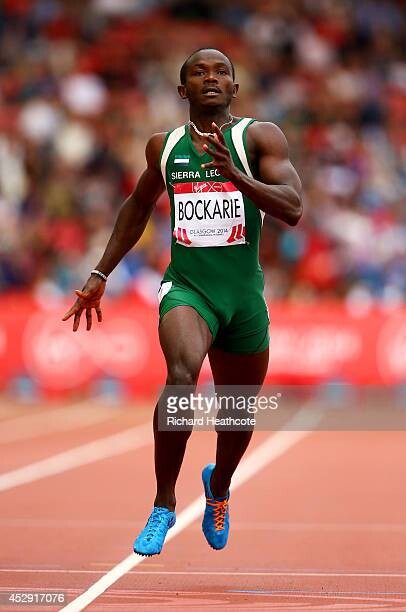
According to Pieterman, Bockarie tested positive after eating chicken he bought at the market in The Hague. “It could be that this chicken had been treated with hormones and that he got this hormone in his body from eating this chicken,” Pieterman said. “Fortunately, Solomon still has pieces of this chicken at home. We will try to have it examined to show that the hormone entered Solomon’s body through this route.”
“I have a lot of questions about this check and the results,” said Bockarie. “Let me emphasize that an athlete is at all times responsible for the substances found in his body. But in this case, so much is unclear that I would like some clarification.”
Vincent Egbers of the Doping Authority refused to comment on the matter. “We are waiting for the athlete’s formal response first,” he said to NOS.
Bockarie was part of the Dutch team at the Olympic Games in Rio 2016 and Tokyo 2020.
(09/04/2022) ⚡AMPSecond death confirmation rocks 2022 Comrades: 'Two deaths are two too many'
The Comrades Marathon has been rocked by another tragedy of a participant who died while participating in Sunday's down-run.
47-year-old Phakamile Ntshiza, who ran for the Pretoria-based Adventist Athletic Club, died suddenly while on the course to Durban.
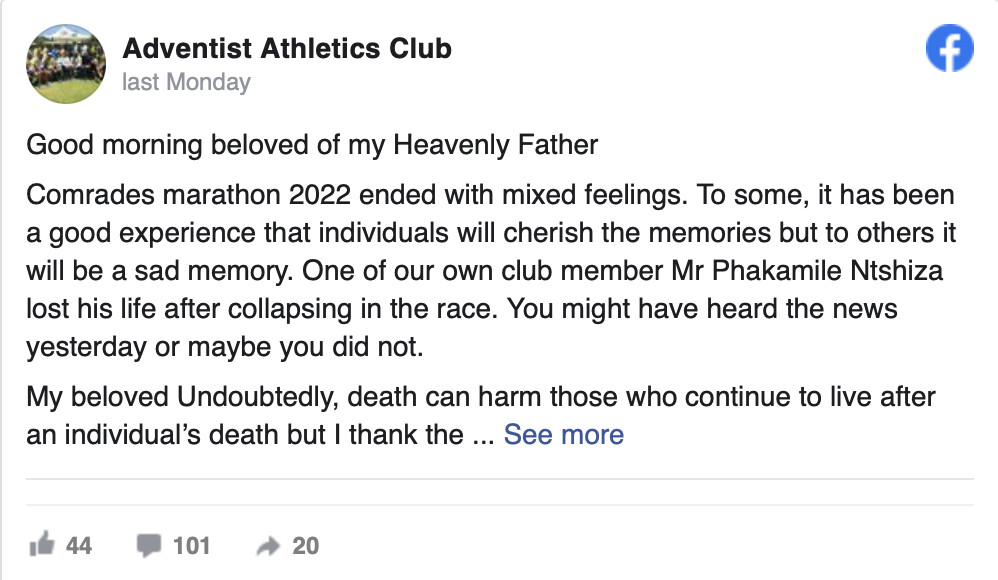
He collapsed shortly before reaching Drummond - the half-way point of the race - and was declared dead when the Netcare medical team arrived on the scene.
This follows news earlier in the day that Mzamo Mthembu of the Hollywoodbets Athletics Club died in a Westville hospital on Sunday after collapsing just before Pinetown.
Comrades race director Rowyn James confirmed both deaths to Sport24 on Monday.
"When our Netcare team had arrived at the scene, the athlete was declared dead," James said of Ntshiza's death.
"The chairperson of the Comrades Marathon Association has been in contact with both families.
"Comrades is a family. We have had over 400 000 people run the race since its inception over 100 years ago, and we are all family.
"Two deaths are two too many, and our thoughts and condolences are with the families of the runners who lost their lives."
James added that a total of 74 runners had been transported to hospital – 41 to St Augustine's and 33 to Netcare Umhlanga – after Comrades shut its medical facilities at 20:00 on Sunday night.
Of those, two remain in ICU presently. One is still on a ventilator.
"We’re wishing them both a speedy recovery," added James.
(09/04/2022) ⚡AMPKilian Jornet Isn't The G.O.A.T. of Trail Running Just Because He Wins Big Races
After Kilian Jornet won the Ultra-Trail du Mont-Blanc (UTMB) for a record-tying fourth time on August 27, it was easy to assume that running 100 miles is something that comes easy to him.
It doesn't, but it would be easy to think that because, well, it sure looked that way.
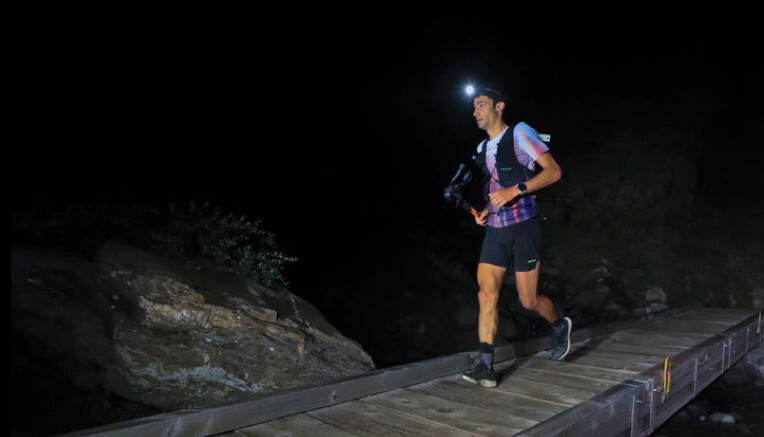

While the 34-year-old who hails from the Catalan region of Spain has long ago established himself as the G.O.A.T. of ultra-distance trail running in the mountains, he's as human as each of the other 2,300 runners who toed the line at this year's UTMB. Like his fellow competitors, Jornet felt fatigue in his legs from grinding through the 171.5km (106.5-mile) course and its 33,000 feet of elevation gain. He said he had difficulty breathing when he ran too fast or climbed too abruptly, likely the lingering effects of having just overcome Covid-19 earlier in the month.
And, like everyone else, he had to fight off low moments of mental torment, and maybe even a tiny trace of self-doubt-remember, he's human-as American rival Jim Walmsley opened up a big lead on him over the Grand Col Ferret as the course passed from Italy to Switzerland.
But what sets Jornet apart, and what has always distinguished him as an athlete, is a unique combination of physical ability, smart racing strategy and a deep connection to the mountains that allows him to move joyfully, patiently and, at times, seemingly with relative ease amid the physical anguish that comes with running such a grueling race.
But make no mistake, he suffered enroute to winning UTMB in a course-record 19 hours, 49 minutes, even if he made it look easy overcoming Walmsley and dispatching competent French contender Mathieu Blanchard.
"Since the start there has not been a single moment in which I didn't suffer," Jornet said after the race. "I knew that I needed to keep my intensity under a certain threshold where it can be heavy for the lungs, but it was no problem. But muscularly it was very hard from the start of the race."
Jornet is human, even if it took a debilitating illness to show it. But as he turned in yet another masterwork performance on the world's biggest stage, Jornet gave glimpses of what has made him so otherworldly for so long. Perhaps surprisingly, superior physicality is only a small part of it.Patience and Respect
Having already won UTMB three times and Hardrock a record-tying five times-most recently just six weeks earlier-Jornet had nothing to prove in Chamonix. In fact, if he had never toed the line or for that matter retires from competition, his legacy of epic race victories and Fastest Known Time (FKT) records on some of the most difficult trails and biggest mountains around the world would stand the test of time.
But that brings up another element that makes Jornet great is that he has always run as if he had nothing to prove. Sure, he's a competitive athlete, but his focus seems to be more about immersing in the zest of competition and the life-affirming bliss he's always felt in the mountains.
For Jornet, the destination truly is the journey, not the outcome. That adventure-oriented focus was something he learned in his youth growing up in the high-alpine environment of the Cap de Rec mountain refuge in the Spanish Pyrenees, where his dad was a mountain guide and his mom was a ski instructor. He climbed his first peak at age 3 and started competing in ski mountaineering races at 12.
Along the way, he developed a grounded sense of presence in the mountains that has allowed him to remain calm and bide his time in ultra-distance races-especially more rugged mountain races like UTMB and Hardrock. Instead of going all-out from the front, he typically follows a more fluid strategy of just staying in contact with the lead group and letting the race play out a bit as the terrain dictates before becoming hyper-competitive.
Contrast that to Walmsley, who has been hellbent on becoming the first American man to win the race with a front-running mentality, countryman Zach Miller, who returned after injuries and Covid-19 kept him away from continuing the same pursuit for three years, and the hard-charging Blanchard, who was eager to steal the show and make a name for himself in front of a supportive mostly French crowd after a robust third-place finish in 2021.
Even when Jornet was younger, he ran with maturity and wisdom beyond his years, always earnestly clinging to the premise that the experience of racing-and sharing it with his competitors, not to mention spectators and volunteers when possible-is always more important than the actual race itself.
When Walmsley built a big lead with a strong power-hiking surge up the Grand Col Ferret, Jornet was seemingly content, at that moment, to ease through the highest point of the course, chatting at times with volunteers, fans and videographers in French, Spanish or English as he had done at times earlier in the race. In previous UTMB races, he's burst ahead on the switchbacks up Grand Col Ferret and other steep climbs on that course, only to stop on top and wait for his competitors to catch up while gazing at the stars or picking mushrooms with children.
"At Hardrock this year, when I saw him on top of Grant Swamp Pass, he stopped in the middle of the race just to chat with me because we hadn't seen each other in a while," Miller says. "That's just the way Kilian is."A Versatile Mountain Athlete
Jornet has a much more diverse set of athletic skills and abilities than most ultrarunners. In addition to winning ultras, Jornet was a multiple world champion in ski mountaineering and SkyRunning in his twenties. He also set a host of new speed ascent marks and roundtrips on Mt. Kilimanjaro (Tanzania), Aconcagua (Argentina), Mont Blanc (France) and the Matterhorn (Switzerland). Although he missed in his attempt to set a new FKT on 29,032-foot Mt. Everest in 2017, he actually summited the world's highest mountain twice in six days without supplemental oxygen.
When he was a few years younger, he set a new record on the 171-mile Tahoe Rim Trail in California and Nevada and posted the fastest-ever time up the steep, rocky 1.3-mile Mt. Sanitas Trail in Boulder, Colorado.
"Kilian is a beast," says Francois D'Haene, the other four-time UTMB winner who last year became the first to win Hardrock and UTMB in the same summer. "When it comes to Vertical K races and distances from 40K to 100K, I think there is no competition between us. He's faster than me and stronger than me, especially on technical terrain."
Aside from long-and-rugged Hardrock and UTMB, Jornet won the shorter and much faster 42km Zegama Alpine Marathon in Spain and placed fourth in the 31km Sierre-Zinal village-to-village race in Switzerland in August. A lot of it has to do with the fact that he still trains in much of the same fashion as he did as a kid, often focusing more on fun, hard, playful days of adventure on foot or on skis as much as he does structured high-performance workouts.
"Kilian is unique in the range that he can cover," Miller says. "As a runner, his ability to switch back and forth from something like Zegama to Hardrock to Sierre-Zinal to UTMB is just incredible. And because of that ability, I think he's a bit of a mad scientist when it comes to training. He kind of turns himself into a guinea pig and trains in ways other guys might not be willing to for fear of overtraining."
All of that translated into Jornet's ability to win this year's UTMB despite trailing Walmsley by about 15 minutes at the 126km aid station at Champex. When the surging Blanchard caught him and quickly left the aid station, Jornet's competitiveness and mountain practicality started to fire up. They passed Walmsley and gapped him and then ran stride for stride over the ensuing 2,300-foot climb from the village of Trient down into the ski town of Valloricine.
Finally, after leaving the 153km aid station at the same moment as Blanchard, Jornet surged on a gently sloped 4km section of trail to the base of the final 2,600-foot climb up Tte aux Vents. Blanchard got a first-hand view of the master at work and all he could do was watch him run away to victory and hold on for second place.
"Running from Champex with Mathieu, I knew I was stronger going up but that he was catching on the downhills," said Jornet, who has lived in Norway for the past several years with his wife, Emelie Forsberg, and their two young children. "Once we got to Valloricine, the strategy was to push very hard up the final climb to Tte aux Vents and then manage the lead. I had about an 8-minute lead and I was feeling comfortable with it, but in a ultra race you never know, many things can happen."A Transcendent Athlete
At some point a conversation about Jornet should transcend trail running and include the similarities he shares with other great athletes who have had a similarly dominant presence in other sports. And yes, that means Tom Brady, Michael Jordan, Lindsay Vonn, Eddie Merckx, Michael Phelps, Ann Trason, Lynn Hill, Kelly Slater and Eliud Kipchoge.
Why not? Like each of those all-time athletes, Jornet has consistently risen to the occasion at the biggest moments of his career, not only because he physically outclasses the competition, but also because his intellectual prowess as an athlete and his ability to outthink, outwit and outlast them. It's not that he wins everything-although he's won the vast majority of his races since winning UTMB as a 20-year-old in 2008-it's more that he's been competing at the highest level for 15 years and hasn't regressed and has rarely had bad days.
In 2017, he had a rough go of it in the UTMB and finished second to D'Haene and in 2018 he dropped out after inflammation and pain caused by a pre-race bee sting made it difficult to keep running.
"Even his bad races he performs well, and I think that's what makes Kilian special," says Walmsley, who finished fourth at UTMB this year. "Whether it's a bad moment or a bad race, he's always still competing at a really high level. I have raced him twice at UTMB and both times I have thought I have found a crack, but I haven't been able to hold onto it."
Until recently, Jornet might have been viewed solely for his athletic. But with his bold move this year to break away from longtime sponsor Salomon and begin a new environmentally friendly trail running shoe brand called NNormal (with Spanish footwear brand Camper), he's not only begun to hone his entrepreneurial spirit in the world of business but also to make an impact as the environmental steward he's always been.
It's a path only a handful of high-level outdoor athletes achieved success at after making their mark in their sport disciplines, most notably Yvon Chouinard, a climber, surfer and kayaker who founded Patagonia in 1970.
Jornet ran all of his races this year in the same model of NNormal shoes that will be available at running shops and online this fall. It's a uniquely designed shoe that's balanced under the midfoot to promote midfoot and forefoot running gaits, but with enough cushioning to run with a heel-striking stride, especially on downhill sections of a trail. A thin polyurethane plate provides protection from rocks and some energy return, while a proprietary version of a Vibram Litebase Megagrip outsole serves up secure traction.
That all might sound pretty standard, but Jornet really wants his NNormal shoes to stand out for their durability. He and his colleagues have gone to great lengths to source long-lasting components, but they've also designed the shoe to be deconstructed so it will be easy to re-sole, repair or recycle it after hundreds of miles of wear and tear. It's all part of NNormal's No Trace philosophy that is all aimed at transparently designing gear with the smallest carbon footprint possible.
"There are a lot of good guys in the sport, but in [my] mind, Kilian is the king of the sport," says Miller, who was the fifth finisher at UTMB this year. "He sets the tone for the entire sport and [is] a great representative of the sport."
(09/03/2022) ⚡AMPby Trail Runner Magazine
Practicing Your Fuel Stops Should Be a Part of Your Marathon Training Plan—Here’s Why
Focus on nutrition on long run days so you can conquer the miles—without hitting the wall or running to the bathroom.
You train for speed, endurance, and strength before toeing the starting line at a race, gradually building up your distance and pace to make sure you’re ready to take on the miles. But sports dietitians confirm that most runners overlook one vital focus area during training—that is, your gut.

“Your digestive tract isn’t used to running and taking in food at the same time. The constant up-and-down motion of running coupled with the blood flowing away from the gut and toward the working muscles usually results in a wonky stomach,” says marathoner Natalie Rizzo, MS, RD, dietitian and founder of Greenletes in New York City. “But that doesn’t need to be the case. Just like you need to train your muscles to run, you need to train your gut to accept the fuel it needs.”
The more you practice, the better your gut will be able to handle the energy it needs, says Angie Asche, MS, RD, CSSD, a Lincoln, Nebraska-based dietitian and owner of Eleat Sports Nutrition. For any training run longer than an hour, consider giving your race-day nutrition strategy a trial run. That means eating the breakfast you would have on race day and consuming the fueling products you’ll have midrun at structured intervals throughout your miles. Practicing your plan should then help you fine-tune your fueling come race day.
Because we all have different body sizes (and, as a result, energy needs) as well as gastrointestinal (GI) tracts, the best fueling strategy looks different for each person. However, a study published in 2021 in Nutrients and a review published in 2017 in Current Opinion in Gastroenterology recommend that if you notice an upset stomach or diarrhea while running, steer clear of the following items for the two hours prior to and during a run:
Dairy products
Meat
Caffeine
Sugar alcohols and artificial sweeteners
Foods with a higher proportion of fat or protein than carbs
Anything with 5 grams or more of fiber
How to Prepare Your Digestion for Race Day
Pregame with care
Aim for at least 1 gram of carbs per kilogram of body weight in your prerace meal. (For a 180-pound runner, that’s about 82 grams of carbs.) If you have time, the goal is to eat three to four hours before a race lasting two hours or more, aiming for 3 to 4 grams of carbs per kilogram of body weight.
If you have only two hours to eat before heading to the start, go for 2 grams per kilogram of body weight. To help a 180-pound person reach their carb goal in the hours leading up to a race, Megan Robinson, MS, RD, CSSD, sports dietitian in Paoli, Pennsylvania, suggests having a large bagel with nut butter, and a fruit smoothie (made with a large banana, 1 cup of berries, and 1 cup of almond milk) three hours before your run. Then one to two hours prior to the start, consider having a sports drink containing 60 grams of carbs plus 2 ounces of pretzels.
Time it right
Aim for about 30 to 60 grams of carbohydrates for every hour of running after the first 60 minutes. Consider splitting those carbs up so you have a snack at 30-minute intervals. (For reference, 20 ounces of a sports drink, one gel, or one medium banana offers about 30 grams of carbs.)
“That said, the best way to train your gut is to start with a smaller amount of fuel and build up to the amount your body needs,” Rizzo says. “Use long training runs to start with that smaller amount, like 8 ounces of a sports drink, half of a gel, or half of a banana. Once your stomach can tolerate the smaller amount, add in more fuel.” To gradually build up your fuel intake, try to double your midrun snack every two weeks until you reach your end goal.
Stay hydrated
To reduce the risk for an upset stomach, acid reflux, or diarrhea, drink enough water to prevent dehydration, especially with chews or gels. “These all contain a large amount of carbs for their size, and if you do not consume water while ingesting them, it can lead to stomach cramping,” Robinson says. That’s because water moves out of the body and into the intestines to dilute the sugar, and without more H2O, you can get dehydrated or GI distress. As a general guideline, aim for 4 to 8 ounces of water every 15 minutes.
Tune in to what’s not working
Your body will make it clear if your gut isn’t having a good time. Gas, bloating, side stitches, diarrhea, nausea, and upset stomach can all indicate danger. If your stomach feels okay, but you notice that you’re bonking, crank up the carbs before running. “Some runners we work with aim for 4 grams per kilogram body weight four hours prerace,” Asche adds. You can start with that 1 gram of carbs per kilogram of body weight prerace (and make sure to get enough midrun fuel) and see how your final kick feels, adding in more carbs as necessary.
Feed your good gut bacteria
On rest days and on days with short runs, aim to eat gut health-promoting items. “Fermented foods, like yogurt, kefir, miso, sauerkraut, and pickles, are rich in probiotics that help build a healthy gut,” Rizzo says. Fiber can also aid in preventing constipation. Just scale up both fiber and probiotic intake slowly in order to avoid GI distress.
4 Gut-Friendly Fuel Options
While the best fit for your fuel is individualized, those who struggle with GI issues tend to have the best luck with sports supplements that have two types of sugar, like glucose and fructose, rather than just one. “Each type of sugar uses a different receptor in the bloodstream, so the body can absorb both of them quickly without causing any GI issues,” says Rizzo.
If you prefer whole-food options, try orange slices, dried cherries, or dried figs, all of which contain at least two natural sugars. For a packaged product, consider these dual-sugar selections:
(09/03/2022) ⚡AMPby Runner’s World
How much protein do runners need?, If you aren't already monitoring your protein intake, it's a good idea to start
Protein is a big discussion in gym and weightlifting culture, but it’s a less-prevalent conversation among runners. This is something that needs to change, though, as runners should focus on their protein intake just as much as any other athlete. You may not require as much protein as a strength- or power-focused athlete, but the need for protein is still paramount for your health and success as a runner.
The idea of tracking your protein consumption may seem daunting or tedious for some, but don’t worry, we’re here to tell you just how much you need in your daily diet.
How much protein do you need?

Ashley Ludlow is a dietitian and runner, and she says runners need to consume way more protein than average, non-active adults. It is often recommended that adults consume 0.36 grams of protein per pound of body weight, but studies have shown that this is too low for many people. There’s no set number offered by Ludlow, but she says runners should aim to hit between 0.5 and 0.9 grams of protein per pound of body weight every day.
But how do you determine if you’re on the lower or higher end of this spectrum? Ludlow says it really depends on how much and how far you run. If you’re only training a few hours a week, you can stick to the lower end. However, if you’re putting in high mileage and lots of hours every week, you’re going to want to get close to eating your body weight in grams of protein. This means that if you weigh 145 pounds, you should aim to hit around 130 grams of protein ever day.

“The more energy you burn off in exercise, the more protein you need to ensure that your body doesn’t break down your muscles to fuel your workouts,” says Ludlow. Of course, every runner is different, and this practice may not work for you. If you try it out and things feel off, it could be a good idea to visit a dietitian to figure out what will work for you and help you thrive as an athlete.
Easy ways to get enough protein
Upping your protein intake doesn’t have to mean you’re eating steak every night or forcing down a glass of raw eggs like in Rocky. There are so many easy (and tasty) ways to get the protein you need. Try adding a protein shake to your diet in the morning or after runs and other workouts. These are good with just water, but if you’re looking to get more out of the shake, you can add nut butter, milk, yogurt and anything else you like. Those few added ingredients are great sources of protein themselves, meaning that your already protein-dense smoothie will be even more filling.
If you want something you can snack on throughout the day, grab some nuts or a box of protein bars. One ounce of almonds (around 20 nuts) is six grams of protein, so if you graze them (or any other nut) throughout the day, you’ll get a great boost in your protein intake. As for protein bars, there are so many different brands and flavours out there. Shop around, test a few and find the one (or ones) you like best. The amount of protein varies by the brand and bar, but you can get a great shot of it from any type you buy. Plus, it makes for a quick and easy snack when you’re running out the door for work or to meet your friends for a workout.
Of course, if you’re looking to increase your protein consumption, shakes can only go so far. Adding high-protein items to your lunches and dinners will certainly help you reach your recommended daily intake.
For runners who eat meat, a large pork chop (36 grams of protein in a 230-gram chop), a slice of fish (22 grams of protein in a 110-gram piece) or a steak (62 grams of protein in a standard 250-gram steak) are all great ways to up your protein. For plant-based athletes, lentils (18 grams of protein per cooked cup), beans (15 grams per cup) and quinoa (9 grams per cup) are all great options to fill out your meals.
(09/03/2022) ⚡AMPby Ben Snider-McGrath
Tips for Running a Marathon and Half-Marathon from World Record holder Des Linden
Running a marathon is not easy. First, you must train your body and your training. It takes months to prepare your body physically, mentally, and nutritionally. And you must train your training with planning, preparation, and consistency. If you can follow these principles, you will be successful. You don’t want to be undertrained or underprepared; that is how strains, pains, and injuries happen.
But don’t take it from me. Des Linden is the expert. Marathoner, Des Linden, was an American woman to break the 33-year dry spell for an American to win the Boston Marathon, finishing it in 2:39:55. Also, last year, she was the first woman to run a 50K under three hours in 2:59:54.
Here are Des Linden’s insider tips to help you improve your marathon. Of course, you don’t have to follow her process entirely, but you can incorporate some or all the things she does that create success for her.
Pace Your Training
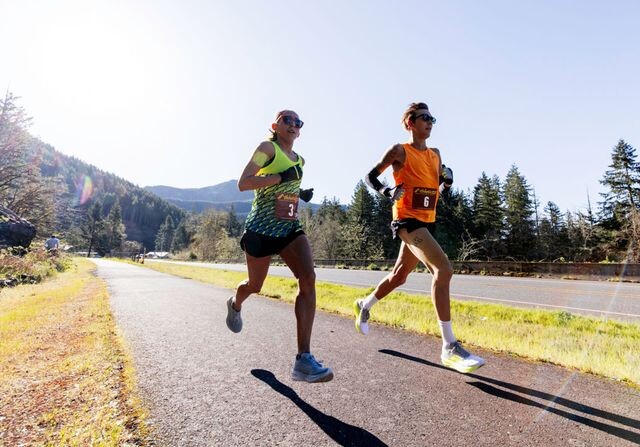
When it comes to running and training for a marathon, there is no quick way. You train, rest, recover, and then your body adapts. Forcing in extra miles is overtraining and not going to make up for missed training days. The body does not work like that. Des says you must be consistent with your training. Training too hard or too much can be disastrous, especially in the middle of your training phase. Consistency is the key. So, don’t up the mileage for your next run if you miss a day.
Be Patient with Running
Distance running is different from running just a few miles or sprinting. First, des says you must love running and the training that comes with it. If you don’t love it, you will force your body to do it. That is bad for you mentally. Physically, the body needs consistent training and time to adapt and improve. She also says there are no quick ways to get better, “You just have to show up.”
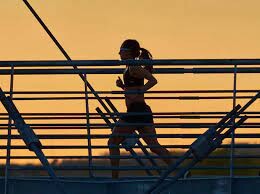
You Need Calories
Des says runners are famous for not eating enough to fuel their run. You must eat the right foods for energy. She says good nutrition will keep you strong and healthy and prevent setbacks. It is terrible for your body when you are out on a run, and your body struggles with energy. Not enough calories mean the training will force your body. But she also stresses eating poor nutritional food is better than an empty tank.
Nevertheless, try to eat natural, wholesome foods like vegetables, nuts, and fruits. Des says simplicity works best. Just make sure you get fueled up.
Learn How to Re-Fuel
Post nutrition for your run is essential and the basis of how your energy will replenish. Des says eating 15 to 20 minutes after your workout is critical. Eating a meal right after training is hard, so you must prepare. The most important thing to consume is a protein shake to start repairing muscles immediately. Along with protein, eat carbohydrates that absorb quickly to boost your energy levels. So, drinking a protein shake and eating carbs like bananas are simple and easy ways to refuel and recover.
Des says her stomach is still not ready to digest a full meal after her run. So, she says she will increase her protein when her stomach has recovered, which can take longer than an hour. Then, she plans her bigger sit-down meal of about 15 to 25 grams of protein. But, to refuel properly, you must understand digestion.
Experiment with Your Nutrition
There are so many different foods to eat and supplements to use. But not all foods are created equal and have the same effect for each person. Des says you must test different foods before running and know which ones work best for you. Experimenting and trial and error are your best ways. She says she has tested many foods to develop her nutritional plan over the years. For example, she says she can eat anything during easy runs. But before long training runs or races, she chooses simple foods to avoid the risk of longer digestion, which has the possibility of upsetting her stomach. An upset stomach equals slower runs.
The Key to Speed is Relaxation
Des says you must find the balance between pushing and forcing yourself. If you push yourself, you can stay more relaxed. And, if your force yourself, you create tension that will work against you running faster and longer. Also, the more relaxed you are, the more energy you conserve. If you are tense, it will eat up your energy. And you need that energy when mile 20 arrives to pick up the speed a bit.
For Aspiring Runners
Des says just be patient because running a marathon is a process. On day one, you will think and feel how hard it was to run. And that difficulty will continue for ten days. She mentions that you will want to and feel like quitting, but you must get over that hump. Over the hump is when your routine begins. Des states that getting in shape is hard, but it is awesome once you are in shape. Don’t throw yourself into it; ease into it so you will stick with it. Too much too hard, and you will quit.
Once Des crosses the finish line, her recovery begins. After every marathon, she does not train for two weeks to recover. After that, however, she will get into the pool to do passive recovery. Des says taking two weeks off is essential to heal her body and get excited to train for the next race.
“Sometimes you chase results, and you lose sight of the bigger picture. You need to step back and get back to enjoying the process of running versus chasing down a win.” – Des Linden
(09/03/2022) ⚡AMPby Jason Kelly
This Ultrarunner Outlasted a Fully Charged Tesla
Bobbie Balenger ran a staggering 242 miles in three days, covering more distance than an electric vehicle on a single charge.
Endurance runner Robbie Balenger set a world record last year when he completed 16 laps of the Central Park Loop Challenge, running a total of 100 miles in the course of a single day. His most recent ultrarunning accomplishment—attempting to run further than a Tesla electric car on a single charge—is the subject of a new documentary from Ten Thousand, as part of their ongoing Feats of Strength series.
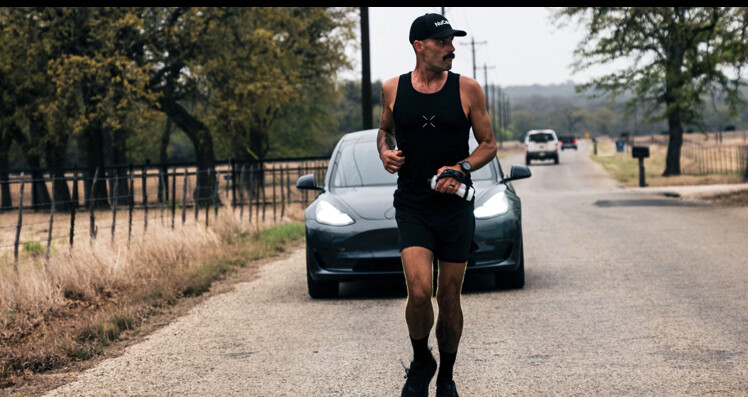
Firstly, the Tesla sets off from the same starting point where Balenger will begin his run, and is driven across the state of Texas until its battery is depleted, which occurs after 242 miles. Balenger then assigns himself 72 hours to surpass that distance on foot, a feat which he expects to be as challenging mentally as it will be physically.
It's just between my two ears, that battle," he says. "And that battle can get pretty lonely." However, he embraces the unpleasant aspects of the experience, like the physical discomfort, fatigue, and soreness which persist and only get worse as he covers more distance.
"I say that running is the inverse of a drug," he continues. "With drugs, you feel really good while you're doing it, then you feel like shit afterwards. With running, especially when you get into it, you feel like shit while you're doing it then you get to feel great afterwards."
At the halfway mark of 121 miles, Balenger pauses for an hour and 50 minutes of rest. He is then joined for the second stretch by a number of other endurance athletes, including Ironman triathlete Nick Bare and distance runner Hellah Sidibe, who run alongside him while offering encouragement.
46 hours in, at 5:30 a.m., Balenger takes another 50-minute nap before heading into his third and final day of running. "One of the things that draws me to these things is you are so aware of yourself and being alive while doing it," he says. "Through the pain, all of it, every sense is heightened."
After 76 hours 54 minutes, Balenger has run a total distance of 242.01 miles, outlasting the Tesla in terms of distance even if he went over his original time target of 72 hours. Ultimately, he says he is grateful to all of the people who helped him on his journey, and proud of himself and what he has accomplished.
"The bigger picture in life is just follow-through," he says. "You break through these versions of yourself, and tear it away and come out a new person, which I think happens for everyone as we evolve through chapters in life, but what's interesting is ones that happen so quickly... There's very few experiences in life where you look back three days later and you're like, I do not recognize that person."
(09/03/2022) ⚡AMPOlympic hurdler Devon Allen cut from Philadelphia Eagles roster
It has been a summer to forget for American champion hurdler Devon Allen. A dual-sport athlete, Allen balances separate careers as a track star and professional football player. Unfortunately, both of these endeavours have taken tough hits in the past couple of months. At the 2022 World Athletics Championships in Eugene, Oregon, in July, Allen was disqualified in the 110m hurdle final, and on Tuesday, he was cut from the NFL’s Philadelphia Eagles.
In 2021, Allen had an incredible season on the track. He won multiple races and charged to a fourth-place finish in the 110mH at the Tokyo Olympics, which marked his second appearance at the Games (he finished fifth in 2016). In April of this year, things got even better as he signed a three-year deal with the Eagles. (Allen was a wide receiver at the University of Oregon, where he also ran track, but hadn’t returned to the field since his final year of college in 2016.)


Just a few months after signing with the Eagles, Allen ran a world-leading PB of 12.84 seconds, and looked poised to medal at the world championships, which were being held at his alma mater in Oregon. He flew through the heats and semi-finals at Eugene’s Hayward Field, but when he got to the final, he was called for a false start and subsequently disqualified. Grant Holloway, Allen’s compatriot, proceeded to take the gold in 13.03.
There was a lot of controversy surrounding Allen’s DQ, as he left the blocks just a single thousandth of a second too soon (a difference undetectable to the naked eye). The starting blocks are equipped with electronic sensors to monitor each runner’s reaction time; the minimum allowable reaction time is 0.1 seconds, and Allen’s posted time was 0.099. It was the smallest of margins to ruin a star athlete’s dreams of a gold medal on home soil, but the officials had no choice but to accept the information provided by the sensors and disqualify Allen.
Now, just a month after that crushing blow, Allen has been cut from Philadelphia’s 53-man roster. He spent the previous month at the team’s training camp, which included a game against the Cleveland Browns in which Allen caught a 55-yard touchdown. His pre-season performances weren’t enough to earn him an official spot on the roster, though, and he will have to hope to be given a spot on Philadelphia’s practice squad.
(09/03/2022) ⚡AMPby Running Magazine
Police identify the man who poured rum into Mexico City Marathon water cups
In a wild video posted to social media, a man who does not appear on camera recorded himself as he poured white rum into sports drinks at a water station set up for participants at the Mexico City Marathon last Sunday. On Wednesday, the director of the Mexico City Institute of Sport, Javier Hidalgo Ponce, announced that police have identified the drink-spiker, who will likely face prosecution for attempted poisoning.
According to reports, the man was intoxicated, and spiked the drinks around 6 a.m. after leaving a nightclub. It is apparent in the video that he aimed to get the marathon runners drunk.

The water station was located near the halfway point on the course, when runners would have covered more than 21 km, and the consumption of undiluted alcohol combined with exertion could be dangerous. No runners drank the spiked drinks, since race volunteers who worked at the water station realized in time what had happened, and dumped out the alcohol.
Ponce blamed the incident on the Mexico City mayor’s office for allowing nightclubs to close so late.
More than 19,000 runners participated in Sunday’s marathon. Kenya’s Edwin Kiptoo won the men’s event, completing the course in 2:10, and Ethiopia’s Amane Beriso won the women’s race in a course record time of 2:25
(09/03/2022) ⚡AMPby Running Magazine
90-year-old man sets new 1500m world record
At a masters athletics meet in Western Australia on Thursday, Perth runner David Carr set a men’s 90+ 1,500m world record (the metric mile) of 7:32.95, breaking the previous record by five seconds. Carr’s world record-setting time equates to a speed of 12 km/h and a pace of around five minutes per kilometre.
Carr, who celebrated his 90th birthday in June, has now broken five 90+ world records this summer: the 1,500m, 3,000m (16:20.96), 5,000m (29:47.83), 10,000m (62:48.93) and 2,000m steeplechase (12:50.43).
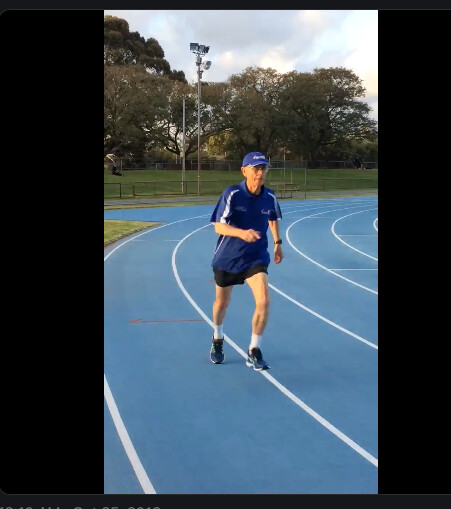
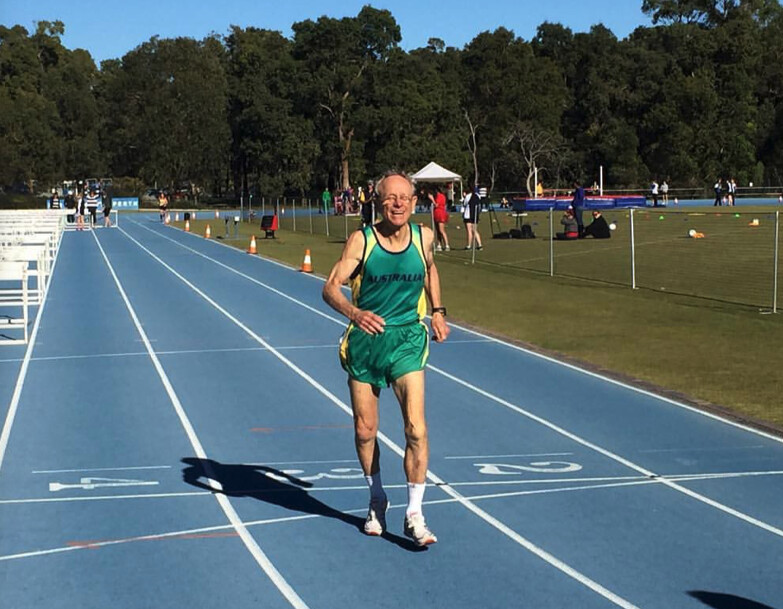
The previous 1,500m record, of 7:37.05, was held by Toshio Kamehama of Japan, set at the Japan Masters Championships in 2015.
According to an online age-graded running calculator, Carr’s graded time is faster than Hicham El Guerrouj’s 1,500m world record of 3:26.00. His age-graded result would be 3:16.00, which is remarkable.
Carr has been involved with athletics since 1948; he competed during his service in the Australian Navy and his time as a teacher. In 1974, he began competing in the masters division and went to his first Masters World Championship in 1980, since then he has won a healthy number of gold medals in middle distance events.
The Australian has had several attempts at the 90+ 400m and 800m record, but has come up short. Both the 400m and 800m 90+ records are held by Canada’s Earl Fee, (400m – 1:29.15, 800m – 3:34.93).
(09/03/2022) ⚡AMPby Running Magazine
Seven Pearls of Wisdom From a 103-Year-Old World Record Runner
Julia Hawkins insists we should all try new things. She would know—she started running at 100 and became an age-group ace by 101.
Julia is still running at age 106 as of 2022.
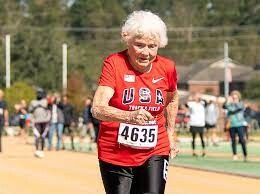
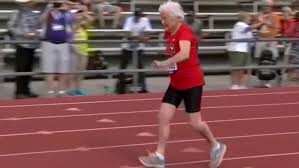
Julia “Hurricane” Hawkins is still taking the running world by storm.
In 2017, at age 101, Hawkins set the world record for her age group in the 100-meter dash at the USA Track & Field Outdoors Masters Championships. She completed the distance in a blazing 40.12 seconds, instantly catapulting herself to running stardom.
Now 103, this great-grandmother from Baton Rouge, Louisiana, is busy preparing for the National Senior Games. This biennial competition—open to runners ages 50 and older—is scheduled for June 14-25, in Albuquerque, New Mexico. Hawkins will throw the shot put and race the 50-meter dash, 100-meter dash, and potentially the 200-meter dash.
“As you get older you don’t usually break your own record. I’ll give it my best, I’ll tell you that,” said Hawkins about her upcoming opportunity to make history – again. In addition to the 100-meter world record, Hawkins holds the centenarian world record in the 60-meter dash (24.75 seconds) and shot put.
Throughout her 103 years on Earth, Hawkins has amassed a wealth of life knowledge, which she’s been kind enough to share with Women’s Running. Take a cue and a little bit of inspiration from these seven pearls of wisdom:
“I try to do as many new things as I can. I never say no to an invitation. I like to go to plays and musicals and church and all kinds of places,” Hawkins said.
Her enthusiasm for new experiences ultimately led Hawkins to start running—at the age of 100.
“I thought it would be neat to do the 100-meter dash when I turned 100. My first year I did the 50-meter dash to see how that would go, and I fell in love with it,” said Hawkins, whose children signed her up for the 100-meter dash, following her first qualifying 50-meter run.
“When you get old you should have a lot of passions. Passions keep you going. They make you want to live and want to do,” Hawkins said. “Get out there and make new friends and do something new every day.”
She also enjoys reading (Chariots of Fire is her top pick for runners), bird watching, and tending to her garden filled with bonsai trees.
In fact, while in her garden, she first suspected that she might have a talent for running. “I knew I could run because I’m always in the yard working, and when the phone rings, I go running inside to answer it,” Hawkins said.
She was born during World War I and grew up in much simpler times—no cell phones, internet, or television. She has learned to appreciate the little things in life.
“I’ve given books to a lot of my friends about magic moments—things that you get every day that you might miss. Sunrises, sunsets, hummingbirds, shooting stars, music, and friends’ comments,” Hawkins said. “All of those things that just touch you so much, just seeing, hearing and feeling it… I hope most people our age have more magic moments than senior moments.”
Her initiation to adventure came at a young age. When she was a baby, her family traveled by boat down the Mississippi River, from Chicago to Louisiana.
Her adventures have also taken her abroad. Right out of college, Hawkins taught four grades in a one-room school on a Honduran banana plantation.
“It was quite an adventure—I loved it. I went horseback riding, played golf, went in the jungle, and came home with a monkey,” said Hawkins, whose pet monkey was quite mischievous.
“He would let the clothes off of the clothesline and take shingles off the roof. He would jump on people’s heads and scare them to death. But he was cute and everyone loved him.”
Hawkins knows a thing or two about building a strong family unit. She was married to her college sweetheart, Murray Hawkins, for 70 years before he passed away in 2013, at the age of 95.
“He was in Pearl Harbor, working as a physicist to demagnetize ships, when it was bombed. He was out there that day getting ready [to demagnetize a ship] when they heard the first bomb land,” Hawkins said. “So we were married by telephone. He was afraid if he was gone too long, I might change my mind. But when I make it up, I make it up.”
Their four children—ages 71, 78, 68, and 66—are a huge part of her life and travel to most of her races.
“They always go with me and encourage me. None of them are runners, a lot of them are bikers, but they are all active. My daughter may be doing the swim relay this year at the Senior Games in Albuquerque,” said Hawkins, who is excited about the opportunity to compete alongside her daughter.
Even before she started running, Hawkins led an active lifestyle. She has bicycled all of her life, averaging about 5-10 miles each day. She is no stranger to the National Senior Games either. Hawkins, who primarily competed in the 5K and 10K bike races, amassed six gold medals over the course of 10 years of competitions.
Hawkins credits her good health in old age to maintaining an active lifestyle and keeping her weight down. But, she occasionally allows herself to splurge.
“Here in Louisiana we have such wonderful fish and oysters and shrimp and crabs. And I like all of them, and they are all better fried than any other way,” she said. “Every now and then I’ll splurge and do something like that.”
Even several years into her running fame, she is still shocked at what she has achieved.
“It absolutely floors me. I can’t believe. I just feel like… how did this happen to me?” Hawkins said. “They tell me that I’m an inspiration to others. That’s one thing that keeps me going. If I can be an inspiration to people and keep them a little more healthy and active, I’m proud to do it.”
(09/03/2022) ⚡AMPby Outside
American ultrarunner completes barefoot trek of California's John Muir Trail
American ultrarunner Kenneth Posner completed a 22-day trek along California’s 210-mile (337K) John Muir Trail (JMT) on Saturday. While Posner didn’t run the route, he is an avid trail runner and ultrarunner, and he almost exclusively runs barefoot. He didn’t take to the JMT to break any official records (the various fastest known time records for the JMT hover around two to four days), but rather for a personal challenge: to hike the entire trail without shoes.
Completing a trail completely barefoot may seem like a random goal to many people, but for Posner, it has been a years-long battle. As he explains in his blog, he made his first barefoot JMT attempt in 2020. “Barefoot is simple,” he writes. “Natural. Intense. Every step is an adventure.” That initial shot at the JMT resulted in Posner completing about 240K of it without any footwear. For the other 100 or so kilometres, he was forced to don shoes. “The terrain [on the JMT] was more difficult than I expected.”
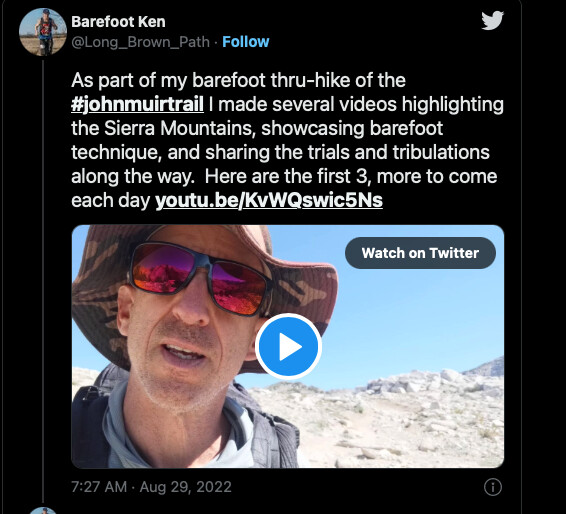
In 2021, he returned to the California trail, certain that he could finish the whole thing without resorting to shoes. Once again, though, he succumbed to the difficult terrain of the JMT, and he had to give in and put on shoes. Since then, he has been working toward the same goal, and this year, he managed to pull it off.
He set off on the JMT in early August, heading south from Yosemite National Park. The trek took him through mountainous terrain all the way to Kings Canyon National Park, where he finally reached the end of the JMT.
“Just completed the 210-mile #JohnMuirTrail entirely #barefoot, in 22 days,” Posner tweeted. “The sandy trails were lovely, the rocky mountain passes were challenging, and the gravel was quite difficult. Gave me new appreciation for how patient and tough our ancestors must have been.”
(09/03/2022) ⚡AMPby Running Magazine
Grant Fisher sets new America 5000m record
In the latest installment in one of the greatest seasons ever by an American distance runner, Grant Fisher ran 12:46.96 at the Memorial Van Damme Diamond League meet in Brussels on Friday to smash Bernard Lagat’s 11-year-old American 5,000-meter record of 12:53.60. Fisher was also in contention for his first Diamond League victory with 150 meters to go but had to settle for second as Kenya’s Jacob Krop, the Worlds silver medallist, pulled away to win in a world leading 12:45.71 (#6 all-time).
Fisher had near-perfect conditions to break the record. The temperature (low-70s) and wind (6 mph) were fine and wavelight technology was in play, but the most important ingredient was a trio of opponents committed to pushing the pace once the pacemakers dropped: Ethiopia’s Yomif Kejelcha and Kenyans Krop and Daniel Ebenyo.
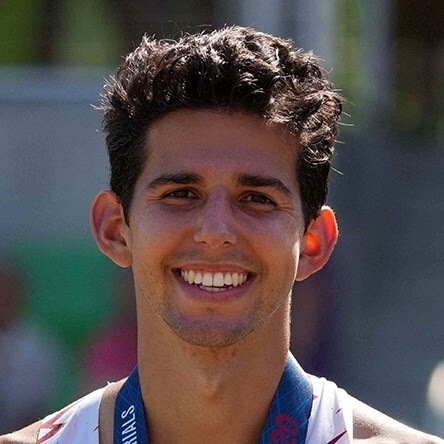
Kejelcha hit 3k in the lead at 7:41.74 (12:49 pace), by which point the four leaders had begun to separate. The gap between those four and the rest of the pack would only continue to grow as Krop took the lead with 1700 meters to go and kept his foot on the gas. Fisher, seeing Krop’s eagerness, was content to sit at the back of the group of four and get towed along to a fast time.
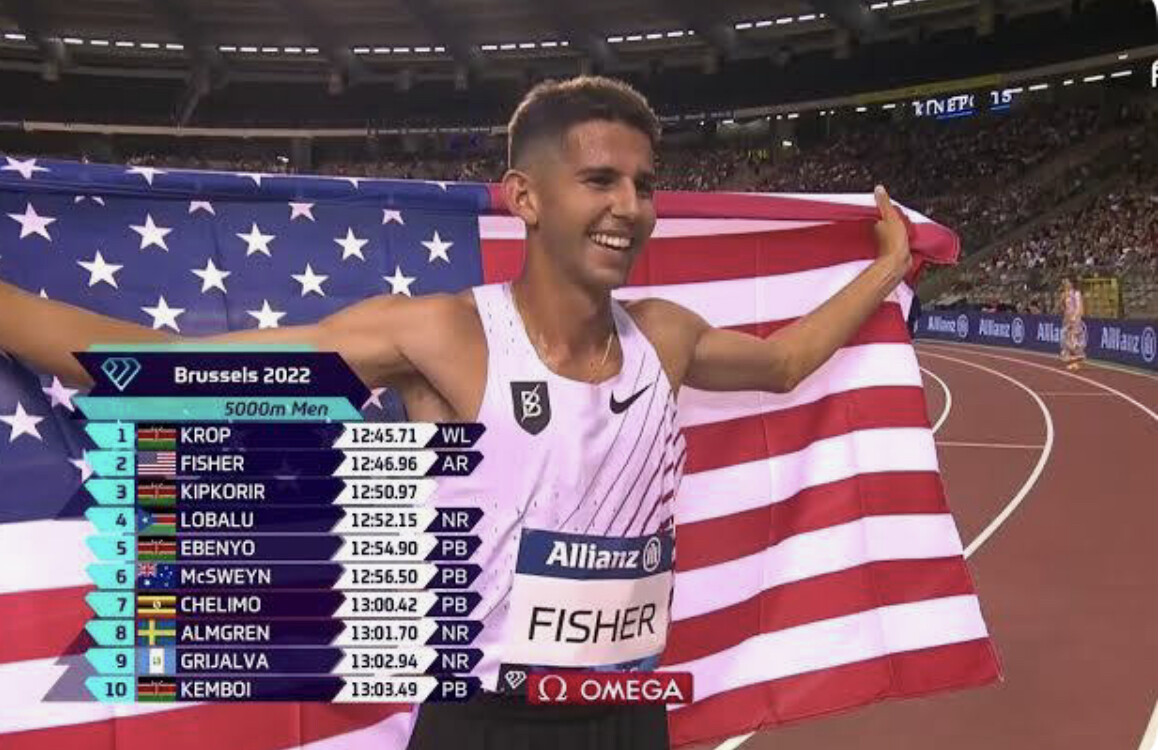
Just before three laps to go, Fisher went past a fading Kejelcha (who would end up dropping out) and moved into third. With a little bit more than 500 to go, a gap started to open up between Krop and Ebenyo and Fisher showed he had more in him as he went past Ebenyo and latched on to Krop. It was now a two-man affair.
Krop was keeping the pace scorching hot as the 4th to last lap was 61.43, the 3rd to last was 61.52 and the penultimate lap was 61.37. At the bell (11:47.9), it was clear Lagat’s American record was history. How fast could they go and who was going to emerge as the winner?
Fisher was ready to put up a fight but he was looking like a car with its engine maxxed out while Krop still looked incredibly smooth. Ultimately Krop broke Fisher with 100m to go to cap a 57.75 final lap (unofficially we had it 29.68, 28.06).
Fisher sprinted it in to finish just behind and break Bowerman Track Club Moh Ahmed’s 12:47.20 North American record in addition to obliterating Lagat’s AR. After running 12:53.73 for 5,000 indoors in February, 26:33.84 for 10,000 in March, and 7:28.48 for 3,000 in August, Fisher’s 12:46.96 tonight gives him four American records in a 2022 season that will go down as a year for the ages in the annals of American distance running.
(09/02/2022) ⚡AMPby Let’s Run
Scotland's Eilish McColgan withdraws from London Marathon debut
Scotland's Commonwealth Games 10,000m champion Eilish McColgan has withdrawn from next month's London Marathon because of a medical issue.
The 31-year-old has been having reactions to taking on fuel during long practice runs.
The issue has been identified as rebound hypoglycemia, which affects endurance athletes and leads to reduced blood sugar levels.

McColgan is now hoping to make her debut in next year's London Marathon.
McColgan's mother Liz won the London Marathon in 1996. This year's race takes place on Sunday, 2 October.
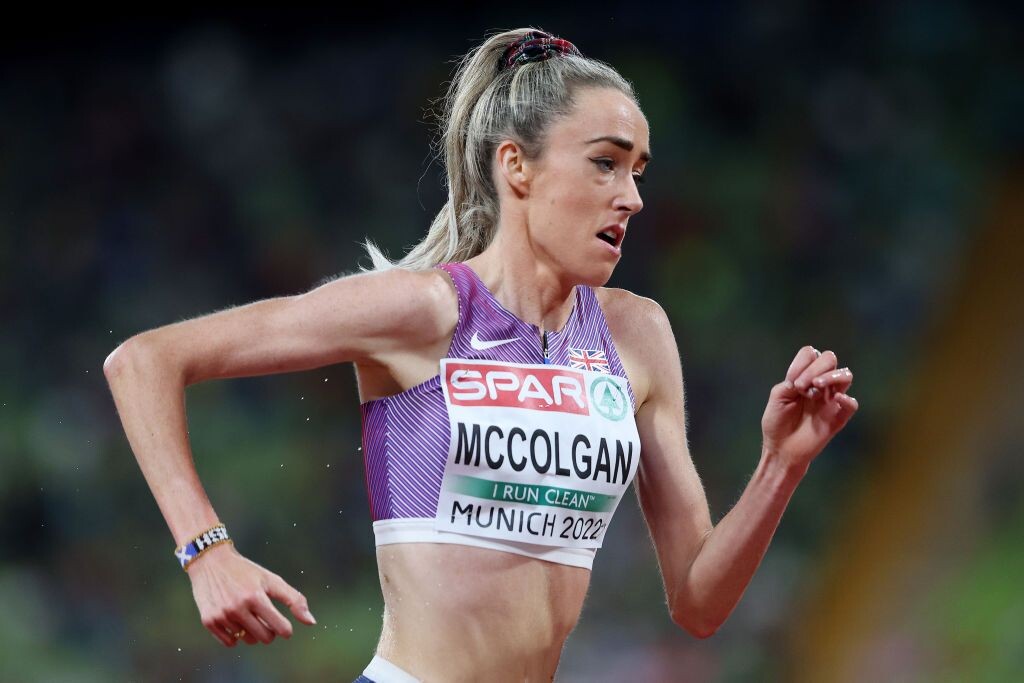
"When I do race my first marathon I want to be in the very best condition," said McColgan, who is racing in The Big Half in London on Sunday.
"When we started preparing for London earlier this year, it was clear something wasn't right on my long runs.
"Refuelling in a marathon is such an important part of the race to get right, so I have been practising this during my long runs and very quickly I've been experiencing spells of dizziness that have really affected me.
"I was relieved to learn it is not uncommon in athletes. I'm grateful to have a really supportive team around me who are working to find a fuelling solution for this issue and I'm confident that we will have done so in time for me to prepare properly for the 2023 London Marathon."
(09/02/2022) ⚡AMPby Athletics
TCS London Marathon
The London Marathon was first run on March 29, 1981 and has been held in the spring of every year since 2010. It is sponsored by Virgin Money and was founded by the former Olympic champion and journalist Chris Brasher and Welsh athlete John Disley. It is organized by Hugh Brasher (son of Chris) as Race Director and Nick Bitel...
more...Mo Farah and Eilish McColgan will lead 16,000 strong field at The Big Half
The Big Half – London’s community half marathon – returns on Sunday (September 4) with an exciting mix of world-class racing, fundraising and community celebrations.
Leading the elite fields will be recently crowned Commonwealth Games 10,000m champion Eilish McColgan, multiple Olympic and World Championships gold medalist Sir Mo Farah, and Paralympic star David Weir.

Strong domestic fields
McColgan will be up against the reigning The Big Half champion Charlotte Purdue in the elite women’s race. A exciting domestic field also includes European Championship and Commonwealth Games performers Samantha Harrison and Calli Thackery with Olympian Steph Twell and Welsh star Clara Evans expected to make it a very competitive race.
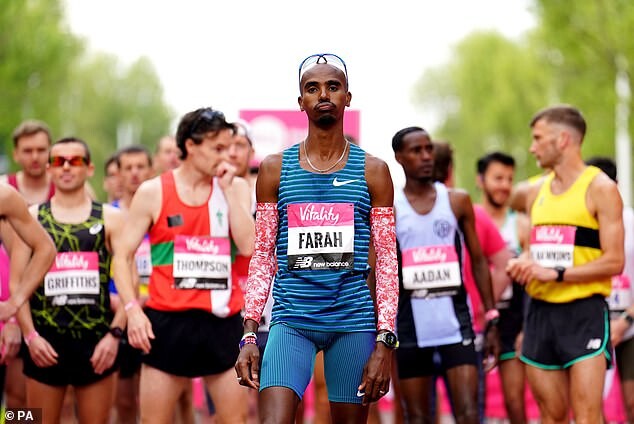
In the men’s race while two former winners, Jake Smith and Chris Thompson, will be among those challenging Farah in the elite men’s race. They will be joined by the winner of the 2022 Vitality 10000m, Jack Rowe, 2016 Rio Olympian Ross Millington and straight off the back of a 17th place finish at the European Champs mararthon Phil Sesemann.
Commonwealth Games marathon champion JohnBoy Smith will renew rivalries with Weir in the elite men’s wheelchair race, while Commonwealth Games marathon silver medalist Eden Rainbow-Cooper is the one to watch in the elite women’s wheelchair race.
The wheelchair races will start at 08:25 and the elite men and women plus the masses will get under way at 08:30. The action will be shown live across the BBC from 08:10 to 10:30 on BBC iPlayer, the Red Button and BBC Sport website, and on The Big Half Facebook page.
Festival of running
In addition to the elite races, there will be more than 16,000 The Big Half participants, including more than 3,000 people from community groups across London. Also included in The Big Half is the New Balance Big Relay, where teams of four can take on four legs of the 13.1-mile distance, and The Big Mile, a family-friendly event over the final mile of the route.
(09/02/2022) ⚡AMPby FR Newsdesk
The Vitality Big Half
Created by London Marathon Events Ltd, in partnership with Sported,The Vitality Big Half is a community running festival, taking place in London in March. This one-day event offers a host of running distances, from a challenging half marathon to a free one-mile course, as well as a family-friendly festival of food, music and activities. What’s happening? Take part with friends...
more...Shelly-Ann Fraser-Pryce challenges pole-vaulter Mondo Duplantis to 100m race
At the Brussels Diamond League press conference on Thursday afternoon, one of the great female sprinters of all time, Jamaica’s Shelly-Ann Fraser-Pryce, had a question for the pole vault world record holder, Mondo Duplantis: “Say, Mondo, how fast are you at the 100 meters … against me?”
At first, Duplantis was stunned by the question, and after some thought and hesitation, he said: “I would beat you!”
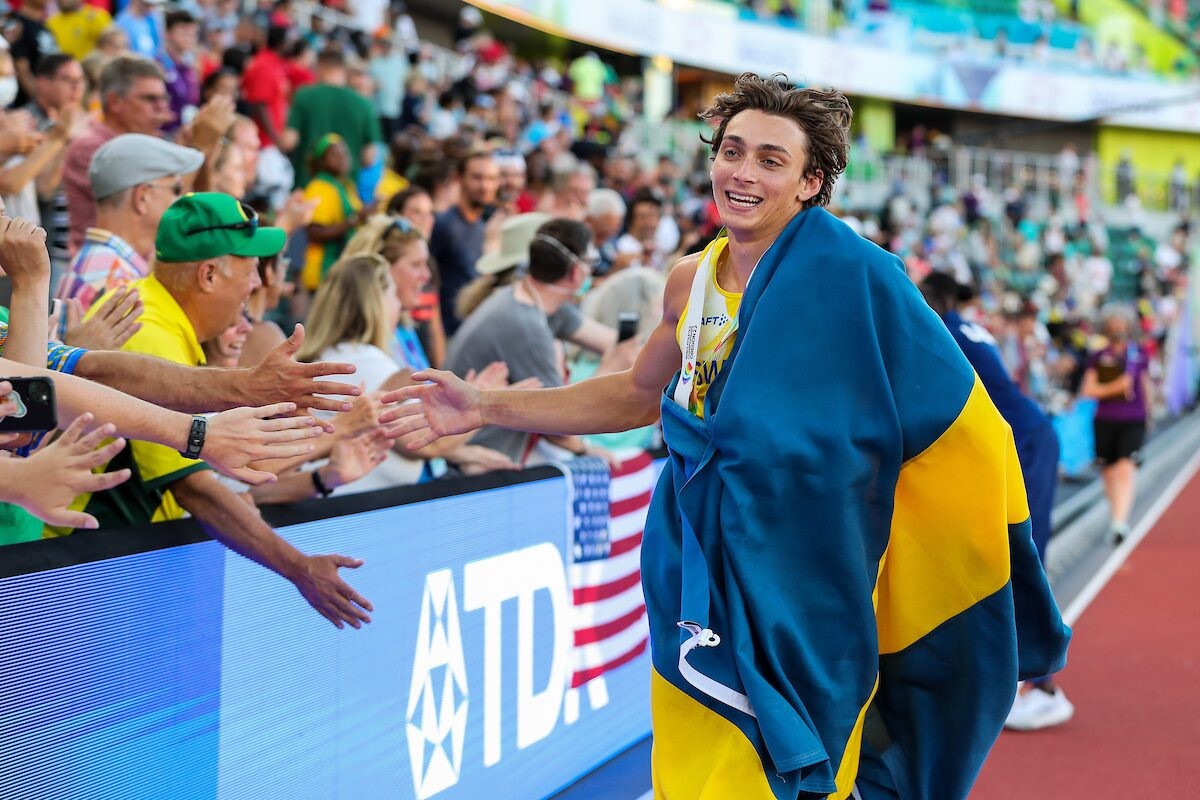
But Fraser-Pryce was skeptical. “How many metres do you have to run in the pole vault? 20 metres?” Duplantis replied that his run-up is 40 metres, and that he used to race the 100m in high school.
“But wasn’t that five or six years ago,” Fraser-Pryce replied.
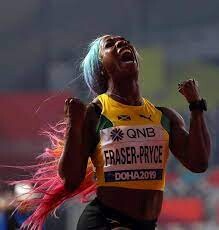
“But I’m much faster now than I was five years ago,” Duplantis responded.
According to the World Athletics database, Duplantis ran faster than Fraser-Pryce in college (at Louisana State University). He clocked a wind-aided time of 10.57 seconds (+2.1 m/s); Fraser-Pryce holds the faster ‘legal’ personal best of 10.60s.
Fraser-Pryce expressed disbelief, and made a bet with the pole vaulter that she would handily beat him over 100m. Duplantis accepted the challenge, which was followed by an official handshake.
The director of the Diamond League Brussels meet, Kim Gevaert, immediately responded to the challenge. “If you want, we can organize the 100m showdown for you next year at this meet?”
“Yes, next year in Brussels, Fraser-Pryce and I will race 100m. It has been arranged!” laughed Duplantis.
(09/02/2022) ⚡AMPby Running Magazine
The best unusual running tips for beginners
We all know the “big” running advice we all see: hydrate, dress for the conditions and make sure you’re wearing the right shoes. But what are some of the unusual bits of advice you’ve discovered over the years that have helped you improve or made running more enjoyable?
Here are a few small tips you should consider.
Chill out at crosswalks
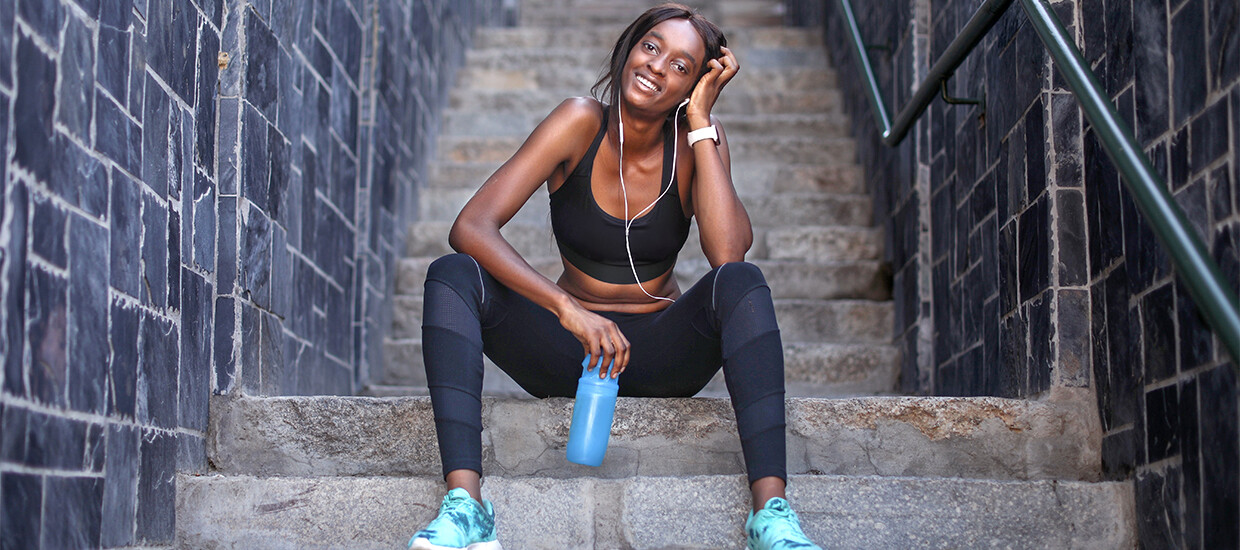
Runners, there’s no need to keep running on the spot when you’re stopped at a red light. Chill out, walk around or stand there and enjoy the 30 seconds of rest; it won’t make your training any less effective.
Plan your route around bathrooms
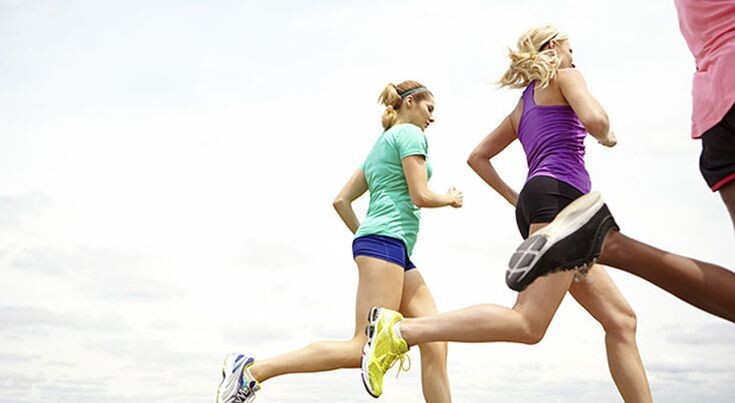
There’s nothing worse than being out in the middle of nowhere and having to go to the bathroom. In moments like this, you may think your run has gone to (you know what), but planning to make sure there are at least one or two bathrooms on your route can be a lifesaver.
Add vinegar when washing your workout clothes
I know it sounds strange, but if you add vinegar to the main wash it will help remove soap residue and the bacteria in your workout clothing. Using vinegar helps reduce odours and soften clothes without harsh chemicals. Vinegar is inexpensive, and it’s safe to use in both standard and high-efficiency washers.
Wrap your keys
Are you sick and tired of carrying your keys or having them jangle and make the noise of a symphony in your pocket? Try wrapping your keys with a hairband or a rubber band to prevent them from bouncing around on your run.
Your miles still count if they aren’t on Strava
Although you may not get as much recognition from your peers, your body will still count your morning 5K run.
Similarly, your body doesn’t care or know the difference between 9.94 km and 10 km on your GPS watch. Training effects are not so precise that a tenth of a kilometre will affect your ability to win races.
(09/02/2022) ⚡AMPby Marley Dickinson
How Keira D’Amato became America’s best ever woman marathoner
Keira D'Amato is currently at the top of the American women's distance running scene. She holds multiple American records — in the 10-mile and the marathon, the latter of which had stood for nearly 16 years before D'Amato smashed it in January — and has racked up win after win this year at everything from 10Ks to 7 milers. But just two years earlier, the real estate agent and mom of two was mostly unknown, quietly putting in miles near her home in Midlothian, Virginia.
That's not to say D'Amato's success came out of nowhere — before starting her real estate career and her family she was a standout runner, a four-time All-American, at American University in Washington, D.C.

"My life then was to eat, sleep, breathe and run. That was all I knew and all I wanted to do," D'Amato, 37, tells PEOPLE. "It was my whole world." She planned to pursue professional running after graduation, but her dreams were quickly derailed by a series of injuries. When her insurance denied a needed ankle surgery, D'Amato was "kind of forced out" of the sport.
"It was a weird breakup. It really felt like running was breaking up with me," she says. "It was heartbreaking. All of sudden I was Keira the runner who doesn't run."
D'Amato ended up meeting her husband Anthony, getting her real estate license and having two kids, Thomas, now 7, and Quin, 5. Her running at that time was very casual — she picked it up again to get back in shape after the two pregnancies and for a dose of sanity while at home with young kids and a military husband, who at times was deployed for more than a year.
"That was a really, really hard time for me," she says. "Just two kids under 2 and being at home alone. I felt lonely and I felt a little trapped." D'Amato would hire a babysitter for an hour, just so she could get out and run.
"I needed something that was mine and that I controlled and something that was just slow and peaceful. Then as soon as I walked back in the door, I was feeling really proud that I'd accomplished something for me that I could go right back to being a mom," she says. "It just helped me cope during that time."
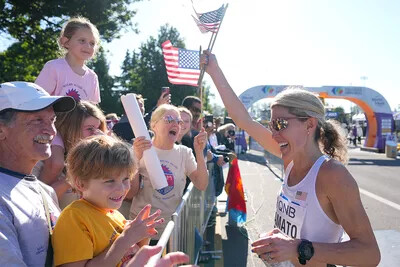
D'Amato also started jumping into a races — a local 5K, or a long weekend in Nashville with a friend for a half marathon. "It was totally for fun and it taught me how to love running without needing to be fast or have goals."
Her real return to running started as a prank — she kindly gifted Anthony with an entry to the 2017 Shamrock Marathon for Christmas one year, and feeling bad about it, decided to sign herself up too.
Thinking she'd run it in around 3 hours and 30 minutes (an impressive time for the average runner, but nothing outstanding), D'Amato ended up easily covering the 26.2 miles in 3:14:54. Eight months later, she decided to train for the Richmond Marathon, and shockingly finished in 2:47:00 — two minutes short of the Olympic Trials qualifying time.
"That's when the fire started because I was like, 'Oh, two minutes in a marathon. That's four seconds per mile. I can do that.' "
With the help of her old college coach, Scott Raczko, D'Amato qualified, and then came in 15th at the 2020 Olympic Trials, ahead of around 450 other women, including several professional runners. A few weeks later, the COVID-19 pandemic shut down the world, and races.
But for D'Amato, "running wasn't canceled," she says. "I think a lot of other pros thought, 'Well, there are no races. This is a really natural time to take a break.' For me, I'm like, 'Hey, they're taking a break. I'm putting the pedal to the metal and I'm going to really catch up.' I trained really, really hard during COVID."
She started making some headlines after running a speedy 5K on her local track, and then even more in Nov. 2020 after she organized a 10-mile race where she broke the American women's record. Four months later, D'Amato signed her first-ever professional running deal with Nike.
"That was really cool," she says. "I think for Nike to bet on someone that wasn't a right-out-of-college national champion, it was some mom in a smaller town — for them to see what I saw in myself is really powerful."
D'Amato had already been relying on Nike for her running shoes, and appreciated that unlike other brands that require their runners to join teams in Arizona or Oregon, she could continue training at home in the Richmond area.
"They support people like me that are trying to be the best in the world, but they're also really supportive on an individual level of everyone finding their own best," she says. "They really build up the sport from youth programs to professional athletes and everything in between. I feel like they've created shoes for all runners to be their own best."
D'Amato ticked off more goals from there, coming in 4th at the Chicago Marathon — her first World Marathon Major as a pro — and winning the 2021 U.S. Women's Half Marathon title.
Then, in Jan. 2022, she went after the American marathon record, a record that had stood since 2006, despite years of the top female marathoners in the country trying to bring it down. It was D'Amato, on a windy day in Houston, who was finally able to do it in a time of 2:19:12.
"On the starting line that day, I was thinking I'm either going to get the record or I'm not. If I get it, that would be wild, but if I don't, I'm going to be right where I am right now and that's cool too. I'm happy," she says.
D'Amato thinks that the way she found her way to professional running — going from a standout college career to her "elaborate halftime show" to getting back in the game — helped her to her record-breaking runs.
And D'Amato isn't done now that she has the American record. She got to knock off another goal in June when she got a last-minute call-up to compete at the World Track and Field Championships and donned a USA uniform for the first time.
Despite having just 17 days to train for a marathon (D'Amato had been racing speedier 10Ks when she got the ask to join the team), she went out fast and finished eighth in the world. In September, she'll toe the line at the Berlin Marathon — known for its flat and speedy course — and has her mind set on lowering the American record again.
"I'm in this really beautiful spot where I feel like I have nothing to lose, but just everything to gain," she says. "I'm putting everything out there, my heart, my soul, my running shoes and just going for it with every opportunity."
(09/01/2022) ⚡AMPby Julie Mazziotta (People Magazine)
Camille Herron’s breakfast of champions, Fuel up and go chase a world record (or maybe a PB)
I’ll try any running (or eating!) advice Camille Herron has to offer. The multiple world-record holder continuously levels up, finding new ways to improve her running and racing. Herron is in South Africa running the downhill course of the legendary Comrades Marathon this weekend, an 89K ultra that she won (on the uphill course) in 2017.
She shared with us the pre-run breakfast she swears by. If you haven’t heard of teff, you aren’t alone; while Westerners are still learning about the tiny, protein-rich grain, it’s been a staple in Ethiopian cooking for thousands of years. Teff has a mild, nutty flavor. Herron substitutes it for oatmeal, and says it’s been a “game-changer.”

Camille Herron’s breakfast of champions
Ingredients
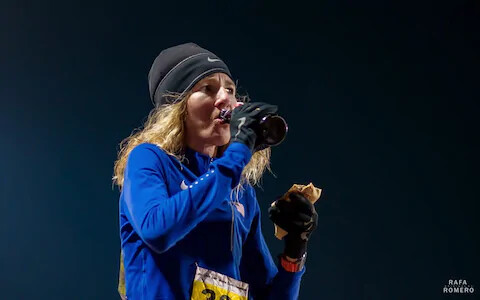
4 Tbsp of teff
1 Tbsp ground flax seed
1 Tbsp chia seeds
Handful of cut walnuts
Handful of blueberries
1 tsp camu powder
1 tsp bee pollen
1 Tbsp non-fortified nutritional yeast
1 to 2 Tbsp honey
Pinch of salt
Directions
Add hot water, stir, and let sit for 10 to 15 minutes. Add or substitute any nuts or fruit that you enjoy. Herron says teff has been a pre-run fuel revelation for her: “it doesn’t retain as much water as oats, so it doesn’t feel heavy on the gut pre-run.” She adds, “it feels like it stabilizes blood sugar for a long time.”
1 Tbsp wheat germ
(09/01/2022) ⚡AMPby Running Magazine
Five core exercises every runner should work into their program
Physiotherapist and runner Dr. Scott Carlin explains there are five core exercises all runners should have in their strength training routine to add more control to their running motion.
Developing your core is one of the most important things you do to improve your running form. Although training your core may not be as much fun as going for a 30-minute run, the results will go a long way in preventing injuries and improving your running economy.
Five great core exercises for runners
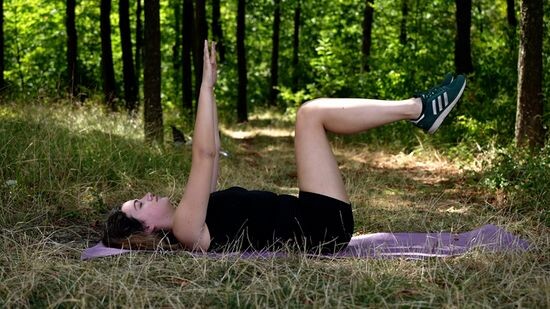
U.S.-based physiotherapist and runner Dr. Scott Carlin explains that there are five core exercises all runners should have in their strength training routine to add more control to their running motion. Carlin says doing these exercises once or twice a week can help you run more efficiently and avoid injuries so you can get the most out of every run.
1) Banded Dead Bug 3×10-15/side
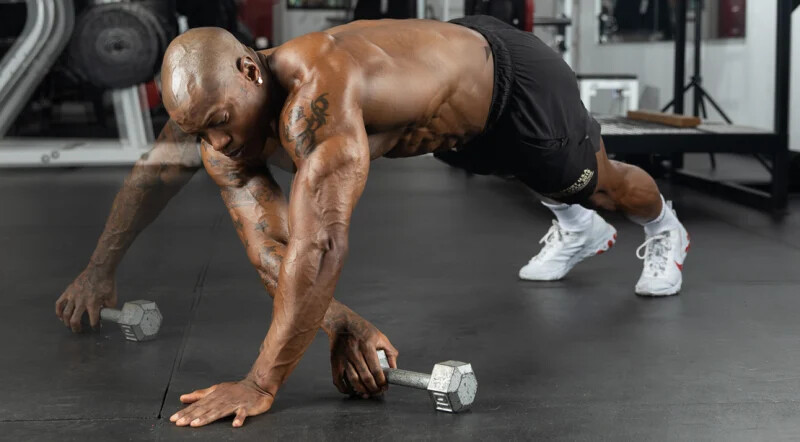
Easier: No band, no weight
Harder: Try using a heavier band and adding more weight
2) Side Plank Crunch 3×10-15/side
Easy: No crunch
Harder: Put an exercise band around your feet
Remember to keep your shin off the ground and bring your knee up to your elbow.
3) Plank with Alternating Leg Lift 3×30-60sec
Easy: No band or leg lift
Harder: Put weight on your back
Keep your legs in a straight motion and hips square to engage your core.
4) Tall Plank Drag 3×10-15 reps/side
Easy: No weight or drag over
Harder: Try using a heavier weight
Remember to stay long and keep your back straight and hips square.
5) Straight Leg Dead Bug 3×10-15 reps/side
Easy: Bend your knees
Harder: Hold weights in your hands
Try to push your lower back against the floor to keep your core engaged. Make sure to stay long with your arms and legs fully extended.
(09/01/2022) ⚡AMPby Marley Dickinson
World Athletics Indoor Championships Nanjing 2023 to be postponed
It is with regret that the World Athletics Council has decided to postpone the World Athletics Indoor Championships Nanjing 2023, scheduled for 17-19 March 2023, until March 2025 (exact dates to be confirmed).
This decision was taken with the agreement of both the Nanjing organizing committee and the Chinese Athletics Association (CAA), due to the ongoing pandemic conditions.

Nanjing was originally selected to host the 2020 World Athletics Indoor Championships, which were first postponed until March 2021, and then to March 2023, as the pandemic continued.
The next edition of the World Athletics Indoor Championships will now be in Glasgow on 1-3 March 2024, and the bid process has already commenced for the 2026 edition of the championships, which is why 2025 has been designated as the year for the Nanjing championships.
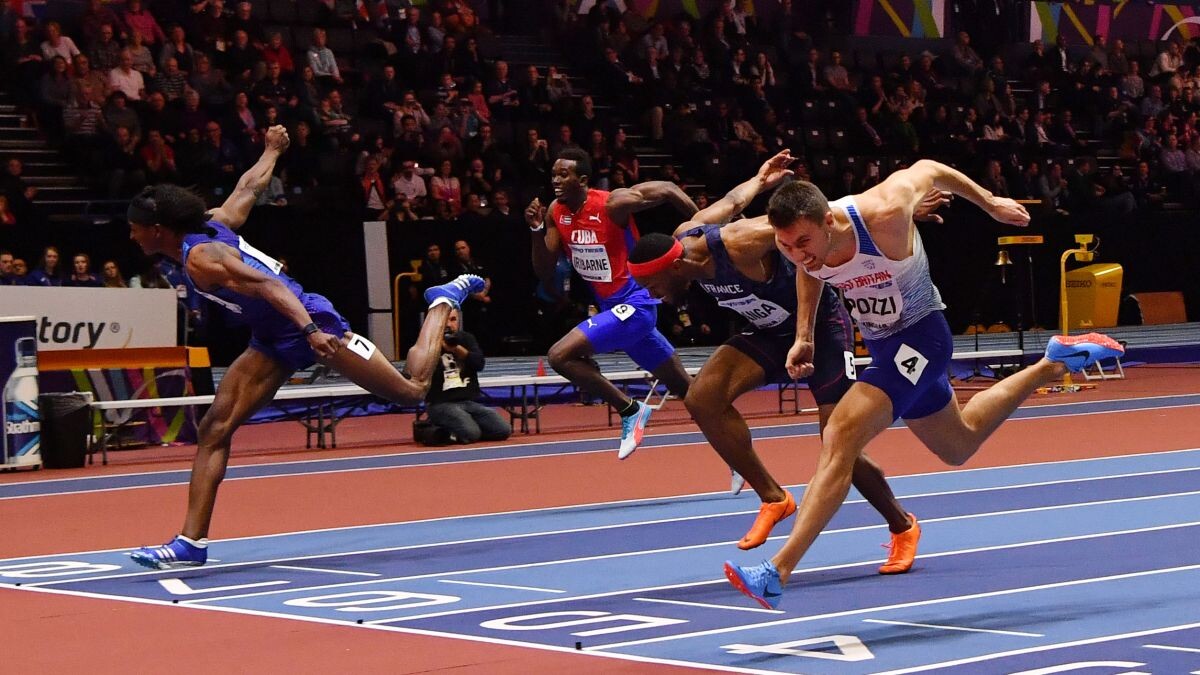
“We’re disappointed that we have had to postpone this event again due to circumstances beyond our control, but we have done so to give certainty to athletes and Member Federations preparing for the 2023 competition season,” World Athletics President Sebastian Coe said. “Unfortunately, the time frame will prevent us from relocating the 2023 event, but the indoor championships will return in 2024 in Glasgow.
“We have offered Nanjing the 2025 edition because we are mindful of the substantial preparations the LOC has already done to host the event and we want to avoid potential financial losses for all parties. I want to thank CAA and the LOC for their cooperation in resolving this situation.”
Despite this postponement, athletes will still have substantial competitive opportunities available in the early part of 2023 through the World Athletics Indoor Tour, which will offer a full calendar of events from late January to March (more events to be added) and is organized across four different tiers of competition – Gold, Silver, Bronze and Challenger.
(09/01/2022) ⚡AMPby World Athletics
World Athletics Indoor Championships Nanjing
The IAAF World Indoor Athletics Championships is being held in Nanjing in China, the first time this emerging nation has hosted the world´s major indoor athletics championships. The brand New Cube Arena is a multi-porpose venue and has a very limited capacity of just 3,000 seats which in a city with a population of 8.5 million means tickets will be...
more...The former American marathon record holder Deena Kastor is ready to run the only World Major Marathon missing from her resume
Former American marathon record holder Deena Kastor has hinted that she’s planning to race this year’s Berlin Marathon, which would officially complete her six-star World Major Marathon campaign.
She has raced the other five majors (Boston, London, Tokyo, Chicago and New York City), and although she was set to race Berlin in 2019, an ankle injury dashed those plans. She’s back, and ready to tackle the race now, and she will be on the start line in Germany on Sept. 25.
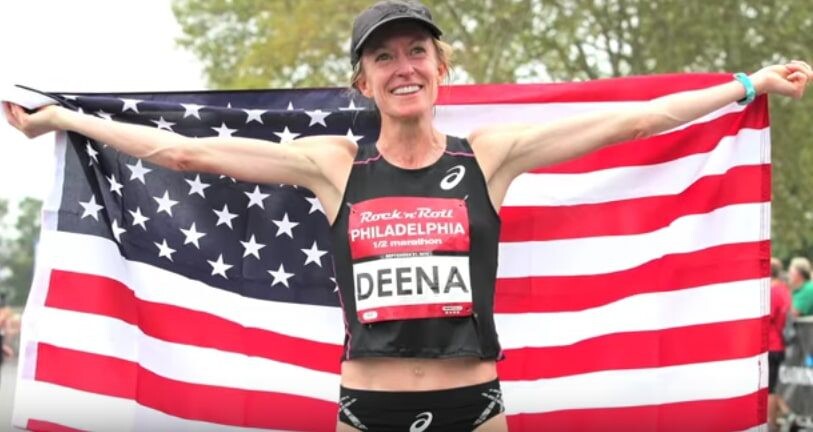
Kastor is one of the top marathoners in American history, and up until this year, she held the national record at 2:19:36, set at the 2006 London Marathon, which she won. (Keira D’Amato broke Kastor’s record at the Houston Marathon in January 2022, when she ran 2:19:12.) Kastor also owned the American half-marathon record of 1:07:34 until 2018, when Molly Huddle ran 1:07:25.
In addition to her name in the record books, she won many races in her career, including several World Majors. (In addition to London in 2006, she won Chicago in 2005.) She also won a bronze medal in the marathon at the 2004 Athens Olympics. Her most recent World Major Marathon appearance came in 2019, at the Tokyo Marathon.
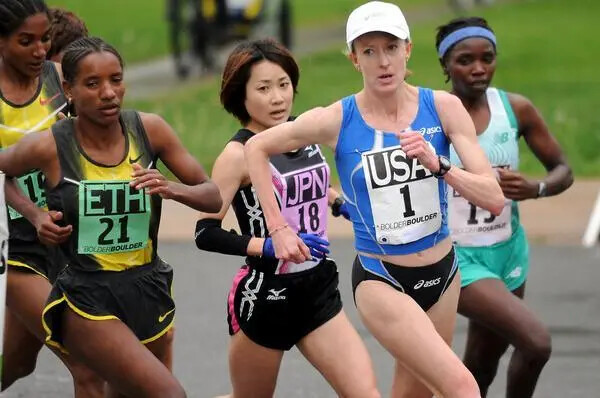
Kastor won’t be going for the win in Berlin, but she’s had her fair share of time on podiums. Instead, she will be shooting for the final part of her six-star medal, a bucket-list goal shared by many marathoners (both amateur and pro) around the world.
(09/01/2022) ⚡AMPby Ben Snider-McGrath
BMW Berlin Marathon
The story of the BERLIN-MARATHON is a story of the development of road running. When the first BERLIN-MARATHON was started on 13th October 1974 on a minor road next to the stadium of the organisers‘ club SC Charlottenburg Berlin 286 athletes had entered. The first winners were runners from Berlin: Günter Hallas (2:44:53), who still runs the BERLIN-MARATHON today, and...
more...British ultrarunner completes 2,850 km run along Europe’s Danube River
Kieran Alger ran the length of the second-longest river in Europe in 67 days.
If you’ve travelled to Budapest, Vienna or a number of other European cities, you might have run along the Danube River. That’s what British ultrarunner Kieran Alger just finished doing on Tuesday, but unlike what was likely a chill mid-vacation run for you, he did it for 67 days.

The Danube is the second-longest river in Europe, passing through 10 countries and spanning 2,850 kilometres, and Alger covered it from point to point. He called this challenge Danube Sea to Source and used it to raise money for five different charities, all of which fight child poverty.
Alger started his run on June 25 on the coast of the Black Sea in Romania. From there, he simply followed the Danube, taking every twist and turn the river makes. This challenge was almost completely unsupported, meaning Alger didn’t have a crew following along and meeting up with him at every pitstop. He carried his own supplies (a 22-pound bag) and camped most nights.
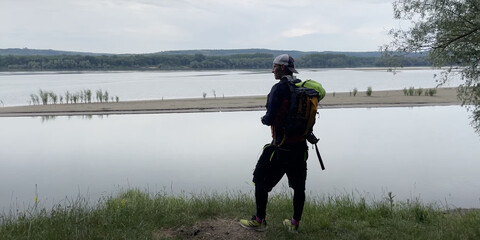
As Alger told the BBC after finishing his journey, he believes he is the first person to complete this running challenge along the Danube. As one would imagine, the Sea to Source was hardly an easy endeavour, but Alger said he had to fight more than just fatigue.
“In Romania, I battled lots and lots of wild dogs,” he said. “I suffered a couple of dog attacks … and I had to run quite a lot of those stretches on high alert.”
While this made the run even more difficult, Alger said he found that “the struggles made the highlights even better.” After crossing his finish line in Donauschingen, Germany, on Tuesday, Alger stopped the clock on his challenge after 67 days of running. That works out to more than a marathon every day for more than two months.
(08/31/2022) ⚡AMP
by Ben Snider-McGrath
Five running tips from olympic marathon runner Liz Yelling
Legendary two-time Olympic marathon runner Liz Yelling is a definitive source on successful marathon training. After competing in marathons across the world and winning championship after championship, she knows a thing or two about lacing up and making it to the finish line. Here she shares her five essential tips for running your best race.
1. A good attitude is half the battle
“Don’t be daunted by the prospect of getting started,” Yelling advises.
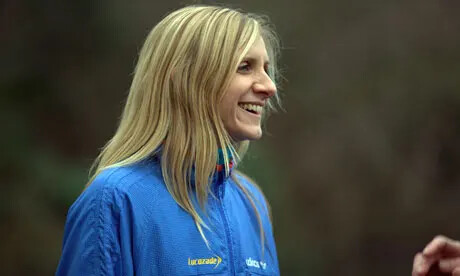
From the first steps out your door to reaching the end of 26.2 miles, the greatest challenge is the one inside your head. Remember your reasons for embarking on the marathon journey and maintain that passion throughout the process.“It’s normal to feel excited about the marathon journey that lies ahead, if, at the same time, a little apprehensive,” says Yelling. “Remember, your journey is about having fun, laughing and enjoying every step, stride, breath and ache. We’re all privileged to be able to participate, so let’s share with our friends, family and strangers and have a happy run every time we lace up and go out.”
2. Get a good pair of shoes (and other gear)
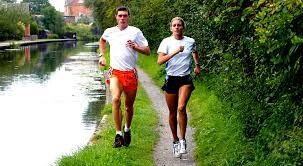
One of the perks of running is that it requires very little equipment, with no need for weights, balls or helmets. It mostly comes down to your feet, so Yelling recommends that every runner have a quality pair of running shoes that suits their gait.
Yelling explains what the process is like to find shoes that really fit: “Take a pair of your old shoes with you to a reputable specialist running retailer. They will probably look at how the upper and the sole have worn, look at your feet, ask you questions about any injuries, current or previous, and your training.”“They may also watch you run to help them suggest shoes for you to try on. You don’t need to buy the most expensive pair of running shoes for them to do a brilliant job. The most important thing is to find a pair that fits you well. Getting the right pair of shoes reduces your risk of injury, so take the time to make the right choice.”In addition to shoes, Yelling also suggests that your gear kit include a pair of sports socks, a lightweight jacket, comfortable shorts, leggings or tracksuit bottoms and a lightweight T-shirt in a functional, breathable material. Wearing appropriate clothing that maximizes your running potential lets you perform at your best.
3. Create a plan and stick to it
An important part of any running or exercise routine is consistency, so Yelling suggests that once people have decided they want to run a marathon, they should create a plan and — here’s the kicker — see it through to the end.“First, check with your doctor before starting a new exercise program, then be gentle and start slowly.
Don’t be too ambitious and expect to run before you can walk. Build up progressively, and add a few more minutes to your walk or run,” says Yelling.When it comes to following through, she has this advice: “Protect your time to run, and don’t quit. Double your motivation to stick to your goals by finding a running buddy. After about three to four weeks you should start to notice some differences in how you look and feel. “Don’t expect miracles overnight. Working consistently and at the right level will lay the foundation for successful marathon training.
4. Embrace the benefits of running
Running marathons isn’t just an enjoyable pastime that lets people rub shoulders with world-class athletes. Yelling reminds runners to consider the good they are doing for their physical and emotional health.“Regular running helps reduce stress but also may help reduce the onset of aging by boosting circulation to your skin, improving your complexion and maintaining muscle tone and flexibility. It keeps your heart and bones strong, reduces cholesterol, lowers blood pressure, burns more calories per minute than other forms of aerobic exercise, controls body weight, improves posture, boosts your immunity and keeps your circulation healthy. More than just physical benefits, running makes you feel more positive, energized, empowered, motivated and ready to face the world.”
5. Find your style
Every runner needs to find their own running style to run comfortably, successfully and without pain. Follow Yelling’s most important pointers for developing good form:• Keep your head relaxed and steady.• Let your shoulders hang naturally. Don’t hunch.• Bend your arms to 90 degrees by your sides and allow them to swing freely backward and forward close to your body, like a pendulum.• Keep your body upright.• Keep your knees, hips and lower legs in a forward line.• Feel relaxed, balanced and in control.
At the end of the day, do what works for you without comparing yourself to other runners. According to Yelling, “There are no style prizes in running. What matters most is not what you look like, but the fact that you are out there doing it!”
(08/31/2022) ⚡AMPby World Marathon Majors
Defending Champion Dayna Pidhoresky Seeks Perfect Race at TCS Toronto Waterfront Marathon
Since winning the 2019 Canadian Olympic trials, Dayna Pidhoresky has encountered mixed fortunes. It is not surprising that the 35-year-old Vancouver resident is seeking a perfect race at this year’s TCS Toronto Waterfront Marathon, the site of her greatest triumph.
“I definitely want to run a personal best,” she says of her return to this World Athletics Elite Label race scheduled for October 16th. “I just want to get the most out of myself on the day. I felt this past spring gave me a lot of confidence, my training went really well.
“I feel like this is the year [in Toronto]. I can just take a little bit more risk and try to empty the tank and hopefully that is something I will have the opportunity to do on the day. I just want to race well, execute well, and leave it all out there.”
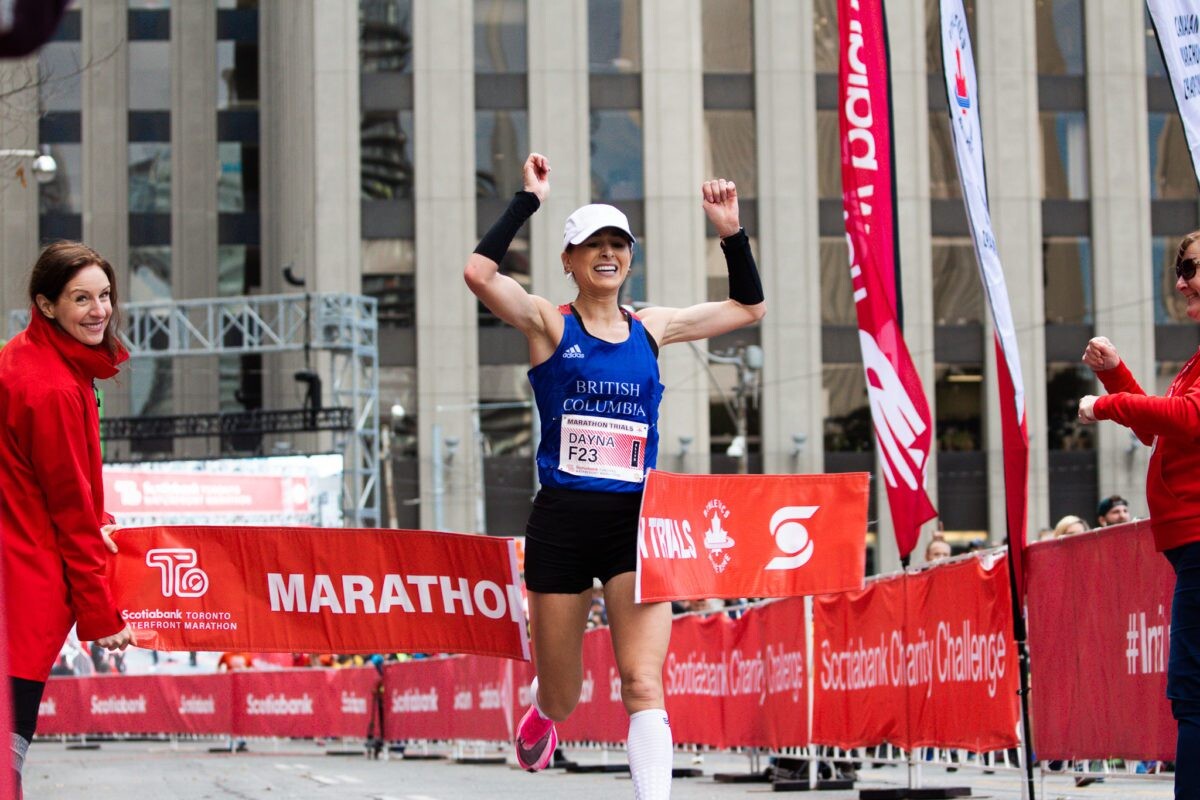
In April 2022, she won the BMO Vancouver Marathon in 2:34:30. Then just four weeks later, finished 6th at the Tamarack Ottawa Marathon. Both races yielded times well off her Olympic qualifying mark from 2019. On that day, three years ago, with the Canadian champion guaranteed an Olympic berth — provided they had made the standard — she came through with a stunning result. Pidhoresky, who is originally from Tecumseh, Ontario, ran a huge personal best time of 2:29:03 which cemented her place in the Tokyo Olympics.
While other athletes chased standards through the remaining qualifying period, Pidhoresky had the luxury of knowing she could train specifically for her dream race. It was not to be, however. In Sapporo, where the marathons and race walks were held, she struggled home 73rd nursing an injury after what she describes as a ‘nightmare.’
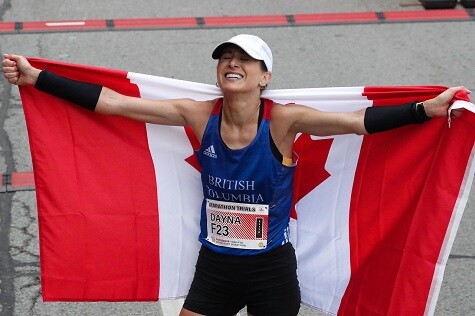
At Team Canada’s pre-Olympic training camp in Gifu, she and her coach and husband, Josh Seifarth, received word that someone on their Vancouver to Tokyo flight had tested positive for Covid.
“We got a call from one of the Athletics Canada guys and he told us we were ‘close contacts’ [of fellow passengers] and that we would have to basically stay in our room the whole time,” she explains. “We weren’t able to leave the room at any point of time, at all. That was about a week. Then I flew to Sapporo where the race was taking place.”
Canadian officials brought a stationary bike to her room during the quarantine, for which she was grateful. When the time came to fly on to Sapporo though, Seifarth was informed he would not be permitted to accompany Pidhoresky. Instead, he flew home to Vancouver.
“We thought it would be normal again and I would be able to interact with the team but I was still considered a ‘close contact’ even when we were in Sapporo,” she continues. “It was mentally draining to be in that situation.
“I was also battling a tendon injury. I was relying on being around my teammates to feel like I was having an Olympic experience. I felt that wasn’t even possible. I was robbed of having an Olympics experience outside of the race itself.”
Currently, her training is going better than in her buildup to the Olympic trials. The anticipation of a great performance is clearly visible in her facial expressions.
“We are definitely ahead of the game right now,” she says with a smile. “At the moment, we are in the 175-185km [weekly volume] range, which for me is more than I have generally averaged. In the past, I would do ten weeks of 160km a week and have maybe a 170km in there. It doesn’t actually feel that different.”
During the spring, she and Josh bought a house near the University of British Columbia which provides immediate access to running trails. Occasionally she meets up with Canadian international Catherine Watkins but most of her long runs are done alone while she listens to running podcasts. One of her favourites, she reveals, is that hosted by triathlete Paula Findlay.
She fills her days with a little photography when time permits, and with some part time work for Seifarth’s company, Visifii.
The addition of Pidhoresky means race director Alan Brookes has been successful in bringing back both Canadian champions, Trevor Hofbauer — who earned his Olympic berth in 2019 as well — and the two overall champions from 2019, as Kenya’s Magdalyne Masai and Philemon Rono will also return. But Pidhoresky is looking for more than defending her 2019 title.
“I am less concerned with placing,” she reveals. “I hope that I can sort of look around and find a good group and we can work together to run fast times together. I would rather run a big PB than feel I am running tactically. Maybe those are one and the same on the day. I just hope I can run to the best of my ability on the day.”
About the TCS Toronto Waterfront Marathon
One of only two World Athletics Elite Label races in Canada, the TCS Toronto Waterfront Marathon is Canada’s premier running event and the grand finale of the Canada Running Series (CRS). Since 2017, the race has served as the Athletics Canada Canadian Marathon Championship and has doubled as the Olympic trials. During the 2021 event, participants raised over $3.08 million for 151 community charities. Using innovation and organization as guiding principles, Canada Running Series stages great experiences for runners of all levels, from Canadian Olympians to recreational and charity runners. With a mission of “building community through the sport of running,” CRS is committed to making sport part of sustainable communities and the city-building process.
(08/31/2022) ⚡AMPby Paul Gains
TCS Toronto Waterfront Marathon
The Scotiabank Toronto Waterfront Marathon, Half-Marathon & 5k Run / Walk is organized by Canada Running Series Inc., organizers of the Canada Running Series, "A selection of Canada's best runs!" Canada Running Series annually organizes eight events in Montreal, Toronto and Vancouver that vary in distance from the 5k to the marathon. The Scotiabank Toronto Waterfront Marathon and Half-Marathon are...
more...Usain Bolt is hoping to trademark his famous lightning bolt celebration
Eight-time Olympic champion and Jamaican sprint legend Usain Bolt is hoping to trademark a logo of his famous lightning bolt celebration. Last week, he filed a trademark for the distinctive pose at the United States Patent and Trademark Office (USPTO).
Bolt submitted an image that depicts his signature lightning bolt pose, where he leans back with one arm bent, and the other pointed toward the sky.
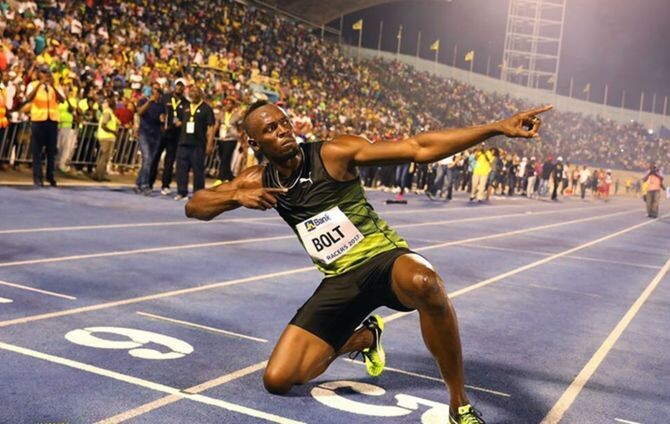
The 100m and 200m world record holder is trademarking the image to monetize the pose on clothing, shoes, jewellery and restaurants.
According to the USPTO, it can take up to 24 months for a trademark to be approved after filing.
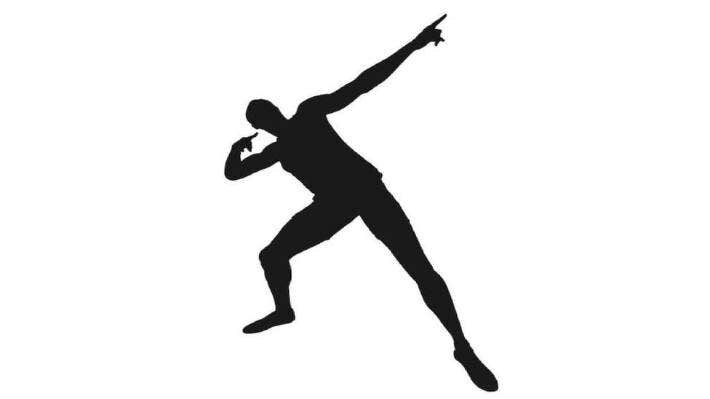
The pose made its first appearance when Bolt won 100m gold at the 2008 Beijing Olympics and by the London 2012 Olympics, the pose was a full-blown fad. This viral move is also known as the “to di world” pose, a popular Jamaican dancehall move before Bolt embraced it.
The 36-year-old retired from athletics at the 2017 World Championships in London after finishing third in the 100m behind U.S. sprinters Justin Gatlin and Christian Coleman. Bolt still holds the 100m and 200m world records and is often described as the greatest sprinter of all time.
(08/31/2022) ⚡AMPby Marley Dickinson
Everything You Need to Know About Running with a Group
Running is often thought of as a solo sport, but you're missing out if you always hit the roads by yourself. Group running can enhance your athletic experience.
What Is Group Training?
Group running is simply organized training, usually arranged by a local training association, running store, or health club. Training groups may meet once per week or several times during the week for a variety of running-related workouts.
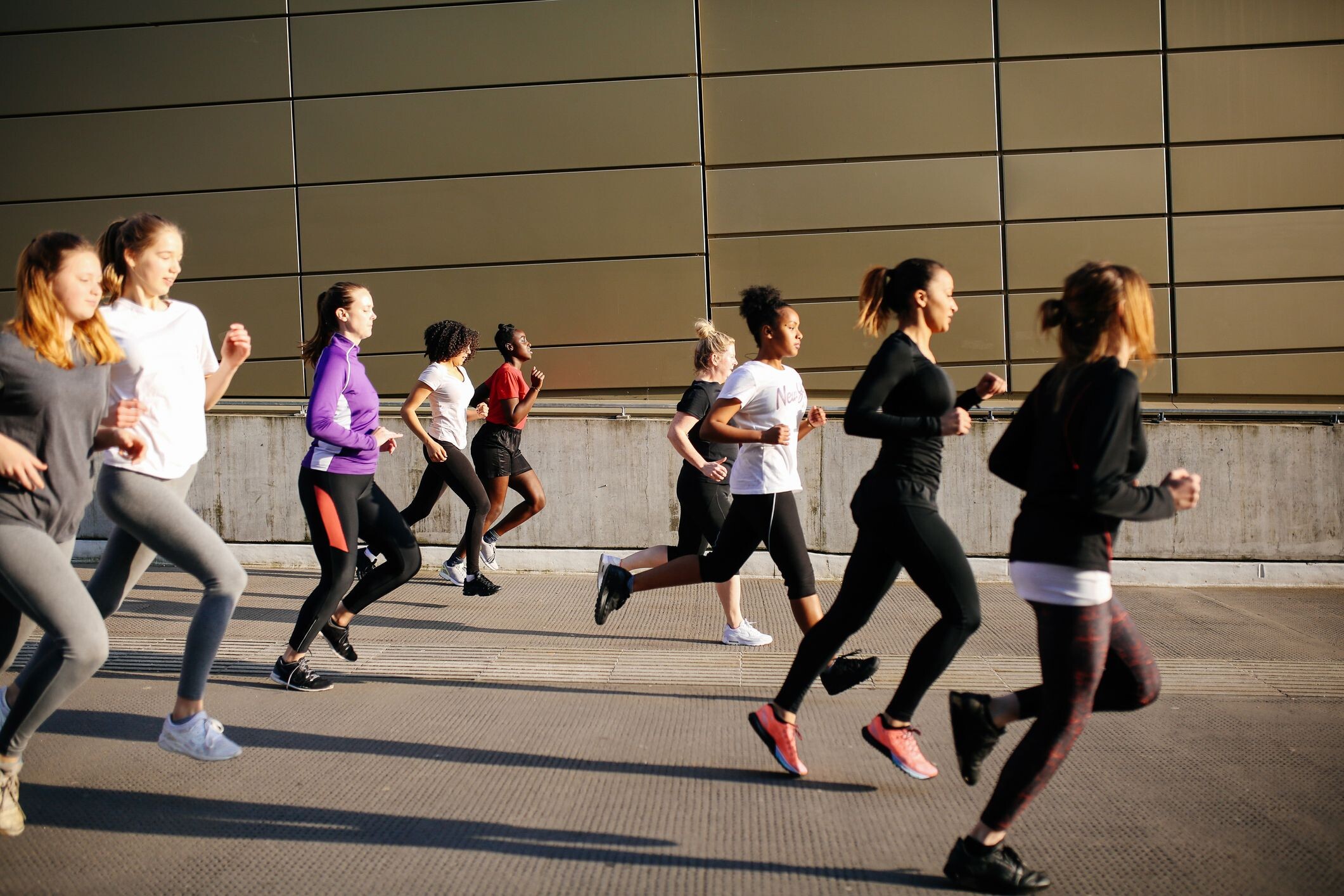
Usually, runners of all abilities are welcome, although you will probably be grouped according to your running pace. For example, there may be different sub-groups within a large group so that those running a 10-minute mile are not required to keep pace with those running a 6-minute mile.
Types of Running Groups
There are different types of running groups. Some training groups are organized around a specific goal. For example, those running a marathon might meet for weekly long runs to prepare for their event. But there are also other groups for athletes who participate in 10Ks, 10 mile, and half marathon events. And there are track groups for runners who participate in sprint distance events.
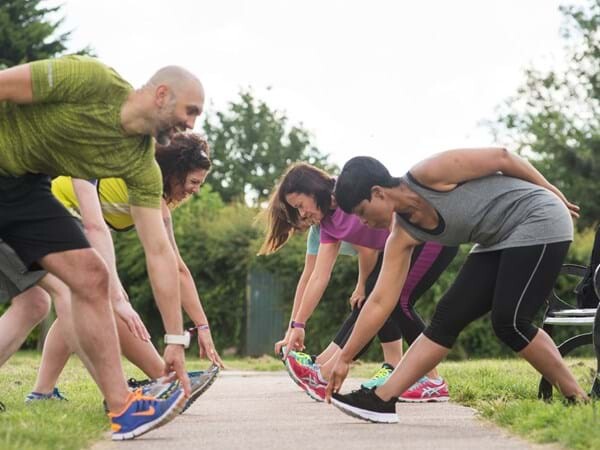
If you don't participate in running events, there are also running groups for people who simply enjoy the sport of running. Generally, these groups include running workouts along with other social functions. There are also running groups affiliated with charity organizations, such as Leukemia & Lymphoma's Team In Training (TNT).
Group Running Etiquette
Regardless of the type of group you join, there are certain rules of the road that you should follow to make your experience—and the experience of your fellow runners—more enjoyable.
First, leave your headphones at home. Engage with your fellow runners during the workout. Don't be afraid to start conversations. For example, you can ask questions about upcoming running events or previous running experience. Positive and friendly conversations will help the time fly by, especially on long runs.
Next, always follow traffic rules. Stay to the right side of the road, cross busy streets with the traffic signal, and try not to run more than two abreast to allow cars and cyclists to pass. Always run against traffic so that you can see oncoming cars and trucks.
Also, run with your group. While this rule might seem obvious, there may be times when you feel that you want to separate from the pack and run ahead or fall back behind the others. Be sure that you choose the right pace group and stay with the others to enhance the experience.
Lastly, respect your fellow runners if need to spit, blow your nose or pass gas. Move to the side or back of the pack so that others are not affected by your understandable but less-than-desirable bodily functions.
Benefits of Group Running
It doesn't matter which kind of running group you choose. You can expect to enjoy a wide range of benefits from the experience of running with others who share your love of the sport.
Safer Workouts
It's obviously much safer to run in pairs or with a group. It's tough to get lost if you're with a group and, even if you do take a wrong turn, you have each other to figure out how to find your way.
When running with a group, you're less likely to need to listen to music, which means you won't be distracted or not able to hear cars or other hazards. And if someone in the group gets injured or sick, there's always someone there to help. Potential attackers are also more likely to strike a lone runner than they are a group.
Creative Stimulation
Some people prefer to run alone so they can sort out their thoughts and do some brainstorming. But running in a group may actually get your creative juices flowing even more than running solo because you're able to bounce ideas off other people and ask them for feedback on a project or problem you're working out.
Increased Motivation
With group running, you get your own personal cheering squad. Members of running clubs and teams root each other on during races and support one another through long runs.
You'll also be more motivated to stick to your training because you and your running partners will hold each other accountable. It's harder to blow off a workout when you know that your teammates are expecting you to show up.
Improved Performance
Let's face it: everyone thrives on a little healthy competition. When you're running with others who are encouraging you to run faster and harder, it's easier to take it to the next level. When running alone you may be tempted to cut your workout short, but trying to keep up with running buddies encourages you to do that extra hill repeat.
Career Benefits
While some deals are sealed on the golf course, plenty of important business conversations have also taken place between runners on the road. Running with co-workers, clients, or even your boss is a great way to network and build your professional relationships.
Also, meeting new people through running is also a great way to expand your professional circles and potentially find a new job, make new contacts, or learn about other business opportunities.
Reduced Boredom
It's tough to get bored when you're running with others. You're also more likely to explore new running routes when running with a group, which will definitely make your runs more interesting.
Sense of Community
Running with a group gives you an incredible sense of community. Whether you're racing together, volunteering at a race, or cheering on your teammates, it's fun and rewarding to be connected with like-minded people and be part of something that's bigger than you. Runners can really relate to each other and are supportive of one another through running (non-running) problems and triumphs.
Expanded Social Circle
Anyone who has run with a group knows that it's a great opportunity to get to know people with similar interests. Many people have met their spouse, significant other, or close friends through a running group or club. Some runners end up traveling to destination races with friends they've met in running clubs or charity running programs.
Drawbacks of Group Running
While these group running benefits are substantial, there are some downsides to this type of workout.
For example, your group is not likely to have a lot of flexibility in terms of scheduling. Typical training times include early morning and early evening. If your schedule changes regularly and you have to skip workouts often then group training may not be for you.
Also, you may have good reasons for running alone. Some people need the experience of aloneness that running solo allows. For example, if your job requires you to be actively engaged in conversations all day long, you may need some quiet time at the end of the day.
(08/30/2022) ⚡AMPby Christine Luff
Two more Kenyan marathoners suspended for failing doping tests
Two more Kenyan distance runners have been suspended by the Athletics Integrity Unit (AIU) for failing drugs tests, including Hangzhou Marathon winner Michael Kunyuga.
Kunyuga tested positive for norandrosterone and Maiyo Johnstone Kibet returned a sample found to contain erythropoietin (EPO).
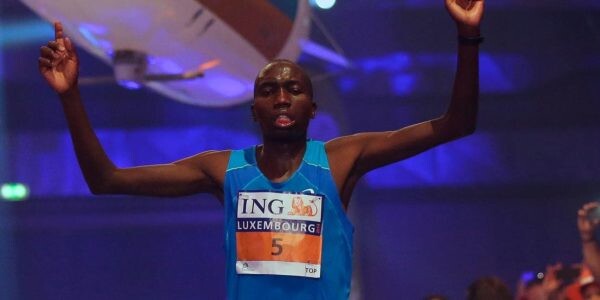
Both are provisionally suspended as a consequence.
Norandrosterone is a product of nandrolone, an anabolic androgenic steroid known to accelerate muscle growth and recovery, while EPO boosts an athlete's endurance as it gives blood a greater capacity for carrying oxygen.
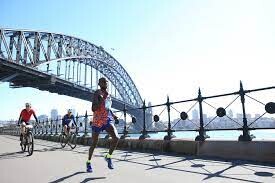
Kunyuga has a personal best in the marathon of 2 hours 6min 43sec, which ranks him among the 250 fastest athletes of all time.
The Kenyan's best results include winning the 2018 Hangzhou Marathon in 2:10:37 and placing fifth in the 2020 Seville Marathon, when Kunyuga set that personal best.
Kunyunga also won the Hengshui Lake Marathon and Padova Marathon in 2017.
Kibet's personal best in the marathon is 2:10:02, set in 2011 in Frankfurt.
In 2016, Kibet triumphed at the Wuhan Marathon.
The provisional suspensions are the latest in a long line of doing sanctions levied against Kenyan athletes.
Fifty banned Kenyans are listed on the AIU's database of ineligible persons, a national tally smaller only than Russia's.
A further seven, including Kibet and Kunyuga, are provisionally suspended.
Kenya is one of seven Category A nations deemed by the AIU to have the highest doping risk, along with Bahrain, Belarus, Ethiopia, Morocco, Nigeria and Ukraine.
(08/30/2022) ⚡AMPby Ali Iveson
Jakob Ingebrigtsen wants to triple at the 2024 Olympics
Last Thursday, before Norwegian star Jakob Ingebrigtsen ran the world-leading time of 3:29.05 at the Lausanne Diamond League meet, he revealed to the media that he hopes to run the distance triple of 1,500m, 5,000m and 10,000m at the 2023 World Championships and the 2024 Paris Olympics (like Sifan Hassan did at Tokyo 2020).
Ingebrigtsen planned to do the triple at the 2022 European championships in Munich, but COVID-19 prevented him from attaining the qualifying standard before the meet. “I got COVID when I was supposed to race the 10K, so I couldn’t put that into the plan for the summer.”
Instead, he hopes to attempt the triple at the world championships and the 2024 Olympics. He said he hadn’t seen the schedules yet, but added, “I hope World Athletics officials have made it possible.”
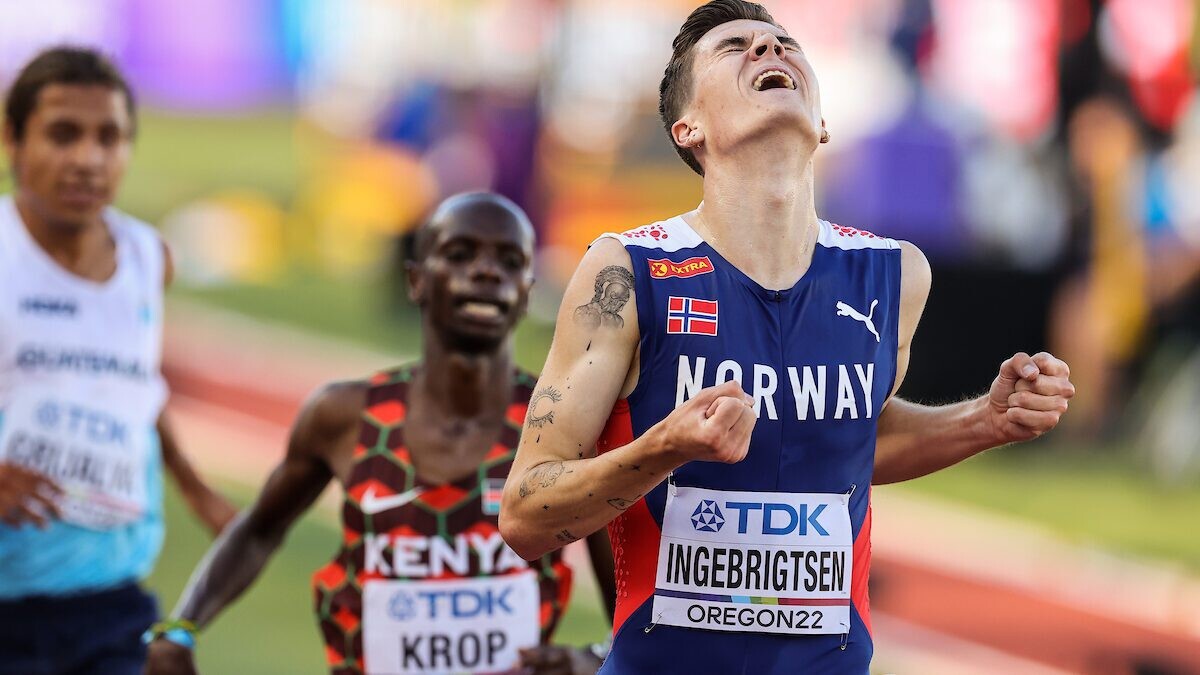
On Friday, World Athletics announced the schedule for the 2023 World Championships in Budapest, and here’s what it would require:
Day 1, 7:05 p.m.: 1,500m first round
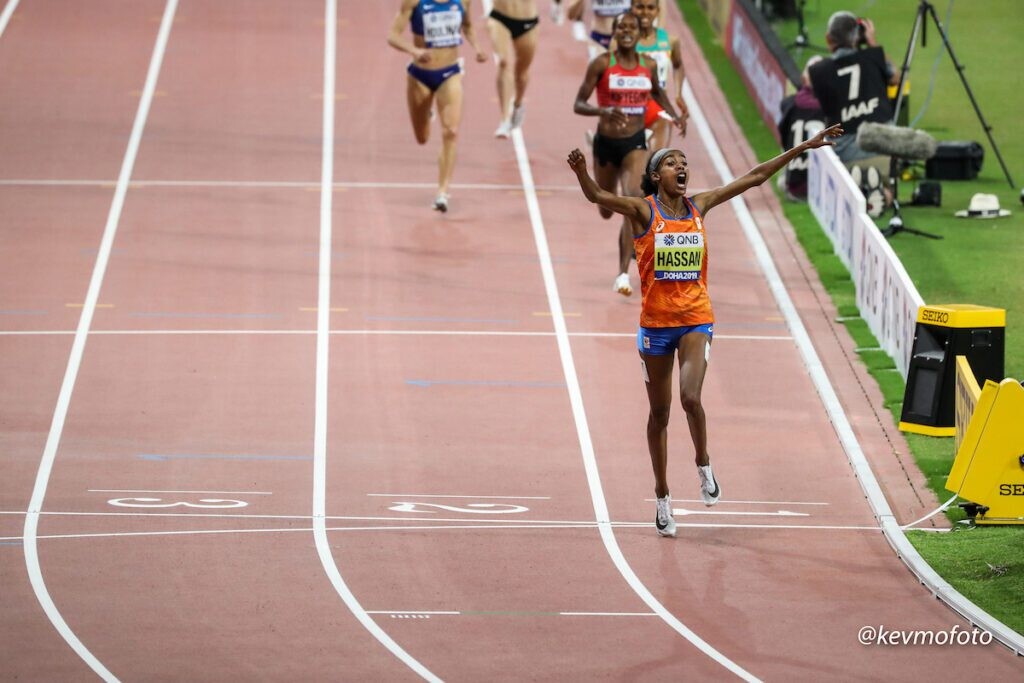
Day 2, 5:35 p.m.: 1,500m semis
Day 2, 6:25 p.m.: 10,000m final
Day 5, 9:15 p.m.: 1,500m final
Day 6, 7:00 p.m.: 5,000m semis
Day 9, 8:10 p.m.: 5,000m final
The triple would be difficult as currently scheduled. On Day 2, Ingebrigtsen would have to run the 1,500m semi-final and then the 10,000m final within 45 minutes of each other. Is it possible? Yes, but he would need to run conservatively in the semi-final and then has to hope the 10,000m final goes out slowly.
The great Emil Zatopek is the only runner to pull off the triple–at the 1952 Helsinki Olympics. Zapotek won the men’s 5,000m, 10,000m and the marathon, breaking Olympic records in each event.
Hassan attempted the distance triple at the 2020 Olympics in Tokyo but came up short with a bronze in the women’s 1,500m.
There are a few changes to the 2023 schedule over Eugene 2022. The length of the competition has been changed to nine days (Aug. 19-27), as opposed to the previous 10-day schedule used for the 2022 World Championships. Another change in the time of the finals: all track and field finals will now be scheduled for the evening sessions.
(08/30/2022) ⚡AMPby Running Magazine
Paris 2024 Olympic Games
For this historic event, the City of Light is thinking big! Visitors will be able to watch events at top sporting venues in Paris and the Paris region, as well as at emblematic monuments in the capital visited by several millions of tourists each year. The promise of exceptional moments to experience in an exceptional setting! A great way to...
more...Six reasons to try a cross-country race this fall, It's time to lace up your spikes and get into some off-road racing
Although it doesn’t feel like it outside, fall is coming up soon, and that means cross-country season is right around the corner. For many runners, cross-country is how they first got into running. It was a fun extracurricular activity in elementary and secondary school, but for a lot of people, school is where cross-country stayed. Luckily, that doesn’t have to be the case. Cross-country is for people of all ages, not just students, and every runner should consider entering a race this fall. Not convinced? Here are six reasons why you should give the sport another shot.
1. It’s a great challenge
Cross-country presents a different kind of challenge than the ones you’ll face running on the road or track. You hit seemingly never-ending hills, steep descents, mud, rain, blistering heat, frigid cold — cross-country delivers on all fronts. As runners, the challenge and the difficulty are exactly what draw us to the sport, which is why racing cross-country is a must-do for anyone who hasn’t recently. You’re going to love it. And hate it. And then love it again.
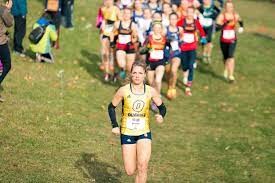
2. It’ll improve your mental game
Since cross-country provides such a unique and tough challenge to runners, it’s so important to be strong mentally. Mental strength is important for all types of running, but especially so when you’re climbing a muddy hill in zero degree weather on a weekend morning. It’s so easy for anyone in that situation to say, “Screw this,” and walk off the course or take it down a notch and cruise to the finish line. But you’re not going to let yourself do that. If you start a race, you’re going to finish it with all you’ve got. You’re probably already pretty mentally tough, but after a cross-country race or two, you’re going to notice how much easier it is to push past the walls you encounter in future training and racing.
3. It’s a blast from the past
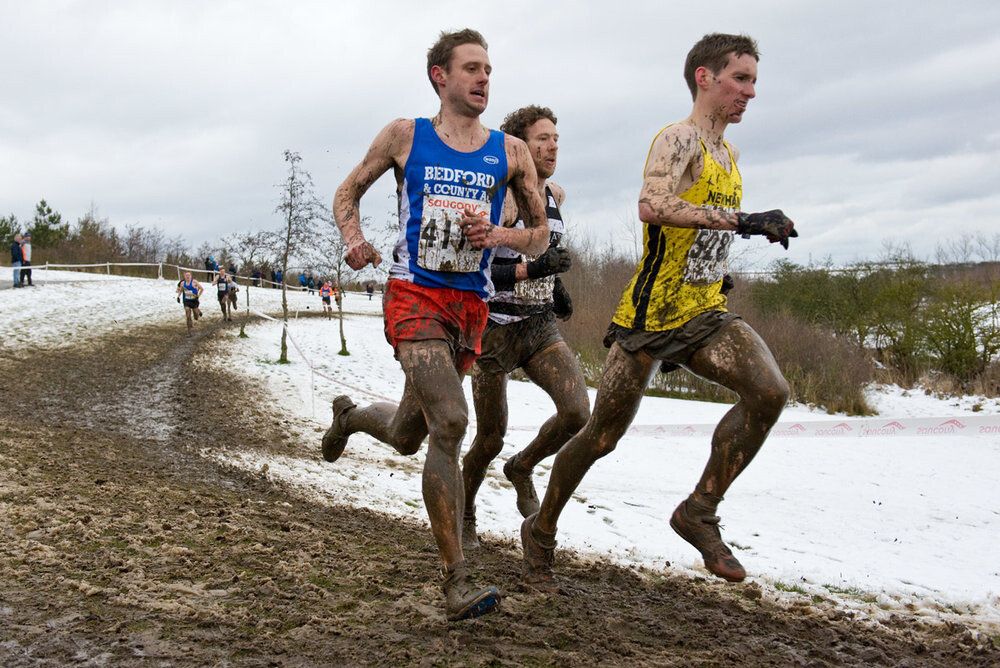
You loved cross-country when you were a kid. Get back out there and enjoy the nostalgia a bit.
4. You’ll enjoy a team atmosphere
You don’t have to race on a team in order to enter a cross-country race, but if you have the chance, you should definitely join one. This will not only make training so much easier, but it will also help you on race day, because with a team, you’re no longer just running for yourself. Every position and every runner matters on a cross-country team, so even if you’re having the worst race of your life, you have to bear down and give it your all. If you don’t do that and you let other runners pass you, then your team’s score will suffer because of it. Plus, it’s just fun running with teammates and friends.
5. Learn to focus on feel
When you’re on the cross-country course, time and pace no longer matter. This may bug a lot of people who live for the data on their GPS watches, but really, it’s a good thing. Cross-country races will give you the chance to practice listening to your body and racing based on how you feel instead of running based on a pace on your watch. Once you get good at running on feel, it’ll help you in all facets of running, whether you’re on the trails or anywhere else.
6. It’ll be fun
This is really the only reason you should need. You’re going to love it and you’re going to have fun. So get up and sign up for a race. You won’t regret it.
(08/30/2022) ⚡AMPby Ben Snider-McGrath
The original editor of Runner's World magazine has had a rough couple of years
"I have been trying to get ahold of Joe Henderson for a couple of years," says MBR publisher Bob Anderson. "Joe was my first Runner's World editor many years ago. We worked together for years before I sold RW to Rodale Press in 1984. Joe has broken his silence and I wanted to share the message he posted on FB this last weekend. My heart goes out to Joe. We have missed you..."
A message from Joe Hendeson:
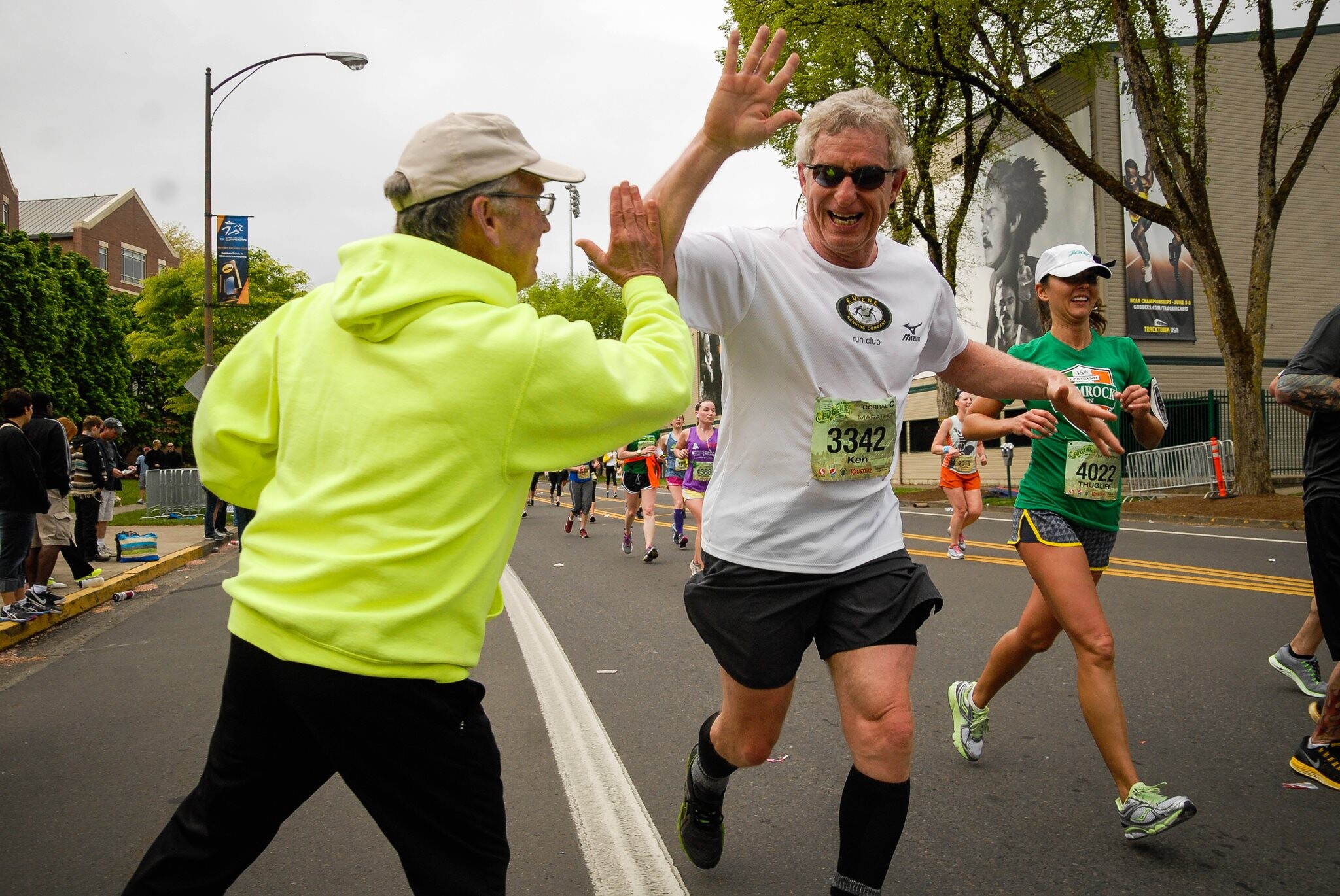
"You might have noticed. Running Commentary had an unbroken streak from 1982. Then it suddenly stopped coming to you about three years ago.
Writing for public consumption stopped then. Running ceased too, possibly forever.
At the least, I owe you an explanation.
In November 2019, I suffered a stroke. Much of the year 2020 does not exist for me, so far out of everything was I then.
I don’t remember at all the first two places I lived after having the stroke. The third is a partial memory,

I don’t remember falling out of bed and hitting a low-slung bookcase, only waking up on the floor — missing two front teeth, with a broken nose, broken right hand and left eye that pointed the wrong way.
Worst, my wife Barbara died in early 2020. I wondered for months afterward why she quit coming to see me.
It turned out that the hard fall was the beginning of a wake-up call. It was a slow but steady return to a new normal.
The physical therapist dismissed me after a year — with the warning to always carry a phone in case of a fall. One eye doctor said I was stuck with the odd eye condition.
He did perform successful cataract surgery on both eyes. Another doc later told me that the left eye was moving toward its proper position, though ever so slowly.
The right leg remained affected, but much less so than at first. I was told that it as 95-percent impaired when first tested. It is now five percent off — but still requires a walker. Running is impossible, in the third year post-stroke (or fall).
I now live at a senior center called Shalom House. I don’t try to run, and use a walker for daily walks of 30 minutes or more (which sounds better than saying a mile or so).
My running is no longer personal, but my interest in the sport remains strong. I attended a small part of the Olympic Trials last year, and more of the Pre meet, NCAA and Worlds in 2022. I still hope to get back to coaching, if the runners will have an ex-runner whose running days are increasingly ancient,
Best of all, my mind is almost fully awake again. I realize that my wife is no longer with us. I returned to published writing with this brief tribute on the second anniversary of her passing:
Barbara Hazen Shaw — July 27, 1944, to January 19, 2020.
My dear Barbara. I treasure our time together — though that time was too short at more than 30 years, and it ended too soon, several months before the actual ending.
A stroke incapacitated me at first. But I’ve made up for it by thinking of you every day since that fog has cleared.
In your 75 years, you lived a life to be admired — if not imitated. On your deathbed, you promised to keep “exploring the universe” in your own ways.
This you will do, I am sure. We should all be so lucky.
So what does this have to do with Running Commentary? Perhaps nothing if you never subscribed, and maybe just this if you did.
I’ve felt lately that I have taken advantage of you while giving nothing in return. So between now and early next year, I’ll send you chapters from a yet-unpublished book, Miles to Go."
(08/29/2022) ⚡AMPby Joe Henderson
America’s Camille Herron finished sixth at the Comrades Marathon on August 27
"Oh Comrades Marathon you were magical! Thank you everyone for making us feel like rockstars out there. I’m proud to finish 6th this time and another top 10 finish. It was an honor to be here again and share the road with you all. Enjoy the moment for all your hard work," posted Camille Herron.
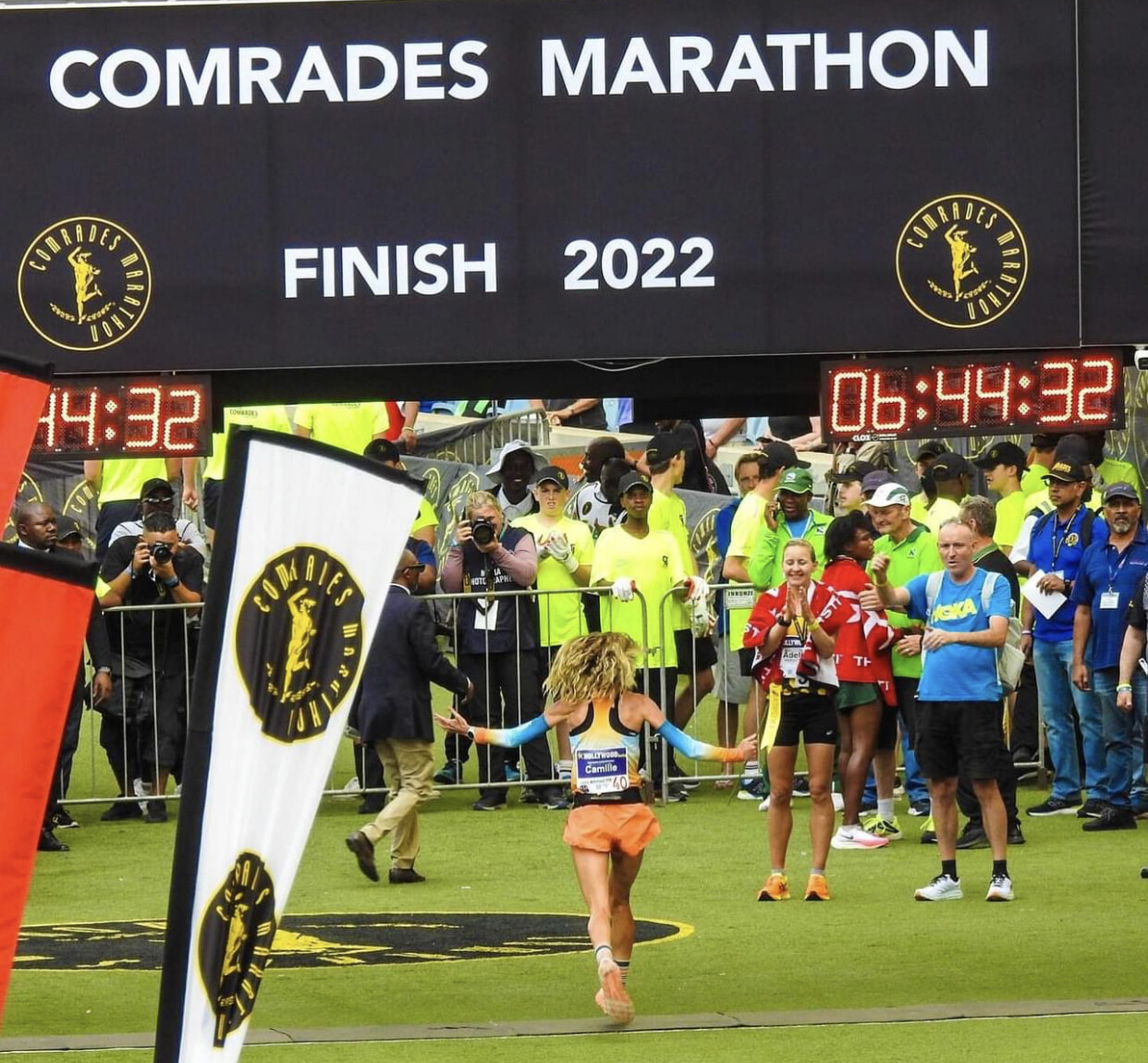
Camille Herron is an American ultramarathon runner. She is the first and only athlete to win all three of the International Association of Ultrarunners' 50K, 100K, and 24 Hour World Championships.
She won the 2017 Comrades Marathon and holds several World Record times at ultramarathon distances, along with the Guinness World Record for the fastest marathon in a superhero costume.
In November 2017, she broke Ann Trason's 100-mile Road World Record by over an hour in 12:42:40. She broke her 12-Hour and 100 Mile World Records in February 2022 at the Jackpot 100/US Championship, winning the race outright and beating all of the men.
In April 2022, she became the youngest woman to reach 100,000 lifetime miles. She is the first and only woman to run under 13 hours for 100 miles, exceed 150 km for 12-Hours, and to reach 270 km for 24Hrs.
(08/29/2022) ⚡AMPComrades Marathon
Arguably the greatest ultra marathon in the world where athletes come from all over the world to combine muscle and mental strength to conquer the approx 90kilometers between the cities of Pietermaritzburg and Durban, the event owes its beginnings to the vision of one man, World War I veteran Vic Clapham. A soldier, a dreamer, who had campaigned in East...
more...Russian Runner Alexandra Morozova Wins Women's 2022 Comrades Marathon Despite Controversy
Alexandra Morozova put a sideshow aside to emerge victorious in the 2022 Comrades Marathon today.
The Russian runner finished the grueling race in a time of 06:17:46.
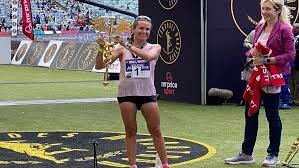
As was reported by ENCA, she had been barred from participating in the even by the organizers, who had been instructed to do so by Athletics South Africa acting on a recommendation by World Athletics. Russia is currently experiencing isolation from the world of sports following the fallout from the country's ongoing invasion of Ukraine.
However, EWN reported that she launched an interdict with the Pietermaritzburg High Court to challenge her barring, which turned out to be a successful one for her.
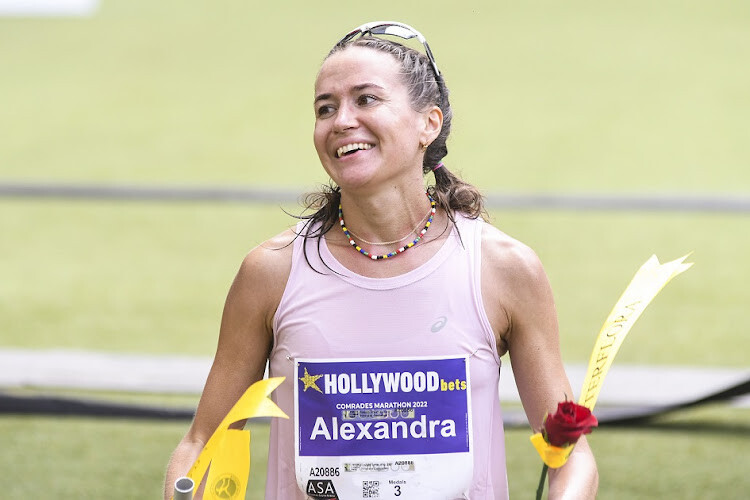
Morozova said after the win:
"It was amazing. All of my dreams came true today. It was the most difficult marathon of my career. I'm happy to be here to achieve this win. It was my turn this year.
"Thank you so much to the citizens of South Africa for the warm greetings. It was so special to run into the stadium and feel this warmth from the crowd.
Thank you so much for the opportunity."
EWN also added that she will have to return to the court in November to find out if she will receive her prize money or not.
(08/29/2022) ⚡AMPby Keba Mothoagae
Comrades Marathon
Arguably the greatest ultra marathon in the world where athletes come from all over the world to combine muscle and mental strength to conquer the approx 90kilometers between the cities of Pietermaritzburg and Durban, the event owes its beginnings to the vision of one man, World War I veteran Vic Clapham. A soldier, a dreamer, who had campaigned in East...
more...Benefits and limits of speed training for endurance runners
Interval training, repetitions or speed work are terms many people taking up athletics will often hear but what do they mean, where should it fit within your training and what are the potential pitfalls you should avoid when introducing it into your plan?
This guide will help provide some fundamentals.
For the sake of this article, intervals, repetitions and speed work will all be seen as the same general type of training, though in reality some coaches will have slight variances in their interpretations of those different terms.
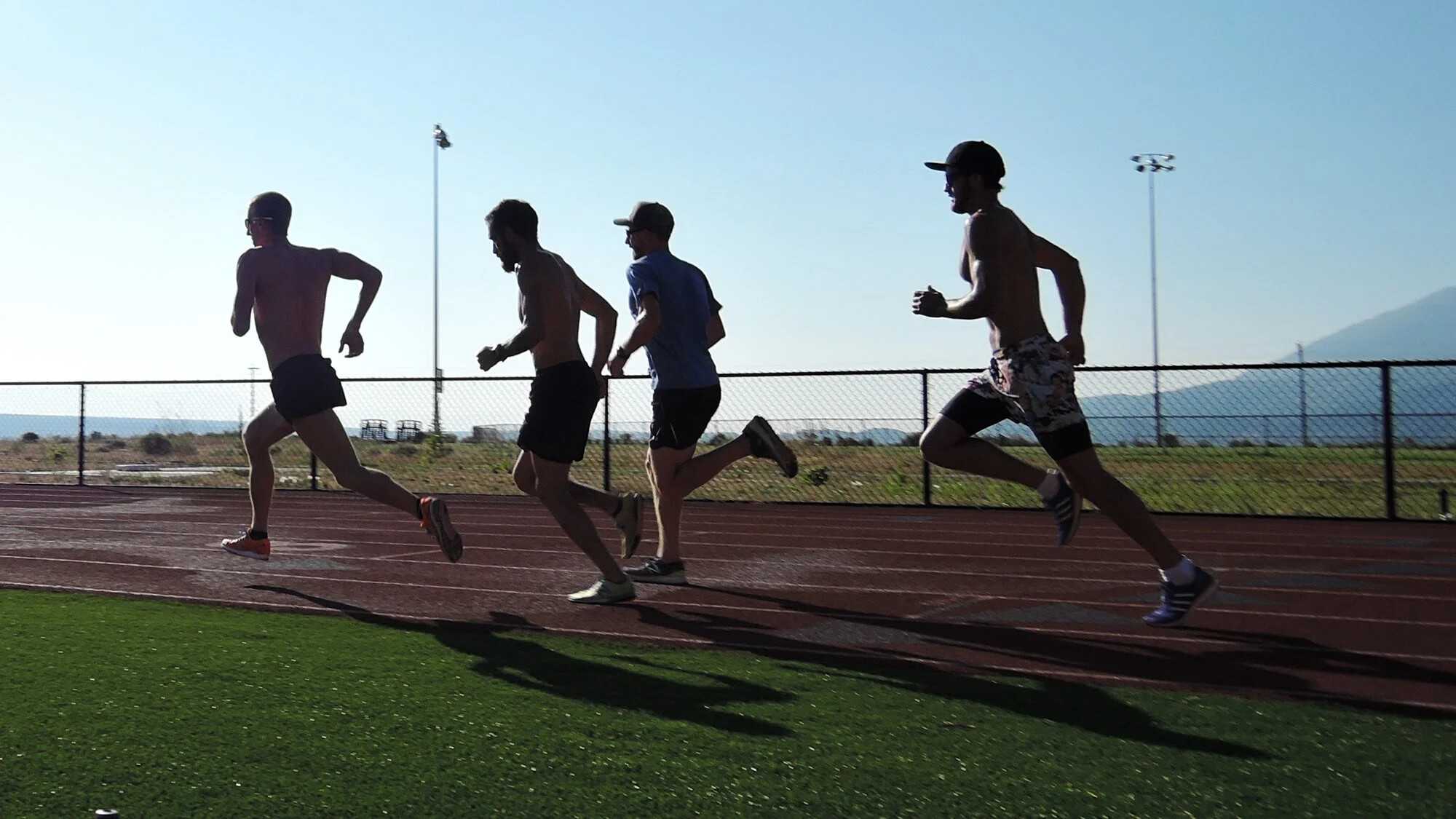
The theory behind speed training
When aiming to lower a personal best time, many coaches believe that running at paces quicker than or around your goal pace is important. This is for a variety of reasons not limited to:
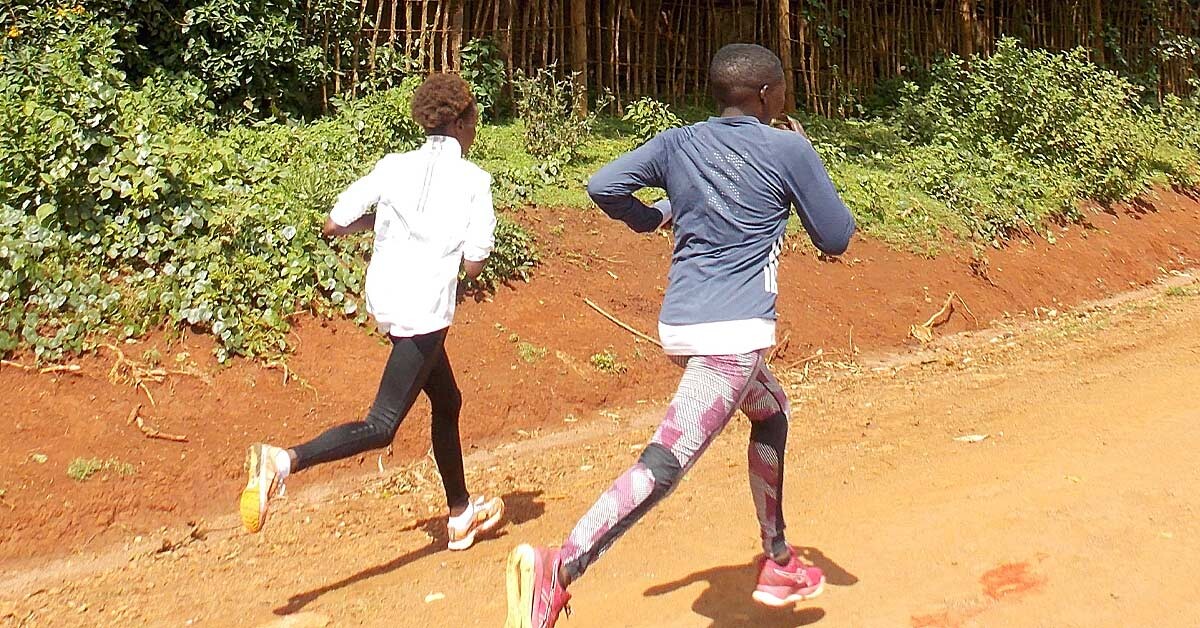
Preparing yourself mentally to run at those speeds and learning what it feels like physically
Stimulating the recruitment of fast-twitch muscles fibres
Fast-twitch muscle fibres are used for short, explosive movements as opposed to slow-twitch muscle fibres, which are less powerful but fatigue slower.
A higher proportion of fast-twitch muscle fibres will increase your top-end running speed while a higher proportion of slow-twitch muscles may increase your overall endurance. Striking a balance will be important to most runners, competing in all but the most extreme ultra-marathon distances.
Improving your running economy (how efficient you are in terms of the way you run) both at top speeds and at slower paces
Slower running will likely improve your aerobic fitness but will not stimulate the body to produce fast-twitch muscle fibres in the same way speed training does. This is because the body does not require as many fast-twitch muscles fibres to run at slower speeds.
How important speed training is for you will be depend on the races you are planning to partake in, though most distances will benefit from it to some degree.
Are you aiming to complete an ultra-marathon or is the 1500m your goal race?
What does speed training look like?
In the same way that the importance of speed training will depend on what events you are planning for, your speed training will look different based on your planned event.
Runners aiming to run the 1500m may well do fewer shorter reps at higher speeds, with 10,000m runners increasing the length of repetitions and sometimes the volume too.
Please note the sessions detailed below are not introductory sessions and should be worked up to over a period of months not weeks.
- Two typical 1500m sessions
3 to 4 x 500m with two to three minutes recovery between repetitions. These may be done at your target 1500m pace
3 x (800m, 200m, 200m) – three minutes between sets (after completing all the efforts within the brackets), 90 seconds between the repetitions (those within brackets)
- Two typical 10,000m sessions
8 x 1000m with two minutes recovery between efforts. All run at 10,000m goal pace.
1600m, 1200m, 800m, 800m, 1200m, 1600m. Two to three minutes between efforts. These would ideally be run slightly outside 10,000m goal pace for the longer efforts, and slightly inside for the shorter efforts. The idea is to keep the paces reasonably even, with a marginal increase in speed for the shorter efforts if possible.
How speed training fits with your overall training programme
It is impossible to sustain these types of sessions day after day, due to the significant impact each session has on your body.
Many runners choose to incorporate some kind of speed training once a week with some experienced and elite-level runners increasing this where they have more time to recover.
It is important to see how your body responds to these sessions, be honest with the impact they have and be conservative where they may cause a risk of injury.
In order to get the maximum benefit from these sessions, allow your body to recover by running slower than you normally would on the day or two following the session.
The dangers associated with speed training
Runners should be patient and build up to any speed training they do. If you try it too early without preparing your body through some easier running, muscle injuries can be more likely.
Alongside lighter running, strength and conditioning exercises for your calves, quads and hamstrings can help ensure that you are better prepared when you first start speed training.
As mentioned, these sessions will tire you out significantly more than most slower running, so be sure to watch out for the signs of overtraining, such as increased fatigue, excess soreness and an elevated heart rate when resting.
If you experience any of these, it may indicate it is time to back off your training, and be sure to speak to a qualified professional where possible to provide you the best advice.
Finally running at increased speeds may bring with it the temptation of lighter, faster shoes. These can be useful but the less cushioning can cause greater strain on your leg muscles.
Be sure to slowly introduce these to your sessions so that your legs have time to adapt.
Enjoy the training.
Think about how important speed is to your running goals.
(08/29/2022) ⚡AMPby George Mallett (World Athletics)
World Half Marathon silver medalist Kibiwott Kandie takes a break from road races to focus on track
Kibiwott Kandie has taken a break from road races to focus on the track ahead of next year's World Championships in Budapest.
Kandie said the NOC-K president Paul Tergat challenged him to try track and he decided to take the challenge by debuting in the 10,000m race at the Commonwealth Games in Birmingham, where he won a bronze medal.
“Tergat has always encouraged me to try track running. I gave it a shot during the Commonwealth Games and I did well. I am going to dig deep into track,” he said.
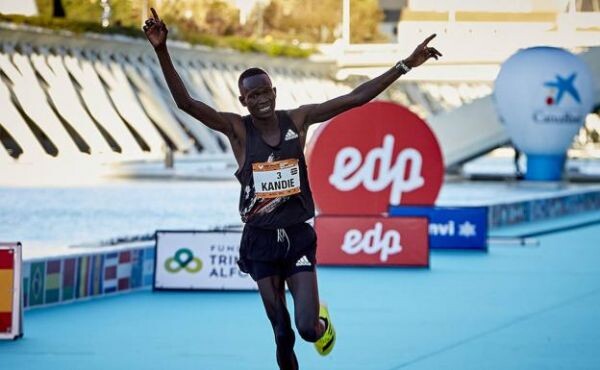
Kandie revealed that his main focus is to qualify for next year’s World Championships in Budapest, where he intends to run the 10,000m.
He revealed that winning a bronze medal at the Commonwealth Games had motivated him a lot and his next target is to invest more time and resources in training.
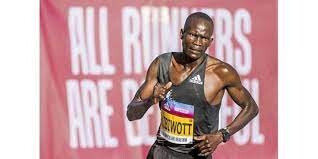
“I am training extra hard to book a slot in next year’s World Athletics Championships, where I want to run the 10,000m. The bronze win was a great achievement because that was my first international track competition. This was enough proof that I can achieve more not only on the roads but the track too,” he said.
Kandie will be among the athletes who will participate in the Brussels Diamond League scheduled for September 2. He will have the company of Kenyan compatriot Sabastian Sawe.
The two are the only athletes who have confirmed their participation in the race. Kandie has a personal best time of 27:20.34 in the 10,000m, which he ran at the recent Commonwealth Games in Birmingham while Sawe's personal best time is 27:09.46.
Kandie, who has had a good season with the Commonwealth Games and the 10k race win in Germany, will be hoping to replicate the same performance in Brussels.
“My training has been okay for the past three months and I hope to keep up the intensity. I think that’s why I did my best in the 10k road race and the Commonwealth Games 10,000m. I just hope I will post a good result in Brussels,” he said.
(08/29/2022) ⚡AMP
by Abigael Wuafula
Ethiopians Yalemzerf Yehualaw and Jemal Yimer clinched repeat victories at the Antrim Coast Half Marathon
Adding another strong run to her CV, Yalemzerf Yehualaw clocked 1:04:22 to retain her crown at the Antrim Coast Half Marathon, a World Athletics Elite Label Road Race, in Larne, Northern Ireland, on Sunday (28).
Her Ethiopian compatriot Jemal Yimer also became a back-to-back winner at the event, the national record-holder running 59:04 as both athletes set UK all-comers' records.
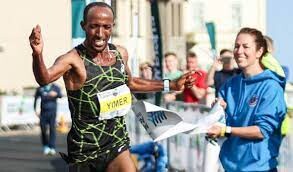
For Yehualaw, who ran a 1:03:51 half marathon PB in Valencia last October, her performance is the equal fifth-fastest ever women’s half marathon achieved on a record-eligible course. The 23-year-old appeared to have broken the women’s world record with her 1:03:44 run in Larne last year, but the course was later found to have been 54 metres short. That world record has since been taken to a remarkable 1:02:52 by Letesenbet Gidey, who achieved the feat in Valencia last October, and Yehualaw was on pace to challenge that mark in the early stages of Sunday’s race in Larne. On a fast opening section of the course, she was paced through 5km in 14:44, with Gidey having recorded 15:00 for that split in Valencia 10 months ago.
Although that pace couldn’t be maintained, Yehualaw – who set a world 10km record of 29:14 in Castellon in February – still passed the 10km mark in 29:52, running behind pacemaker Roy Hoornweg and alongside Britain’s Callum Hawkins, the two-time world marathon fourth-place finisher who is making a comeback after injury.
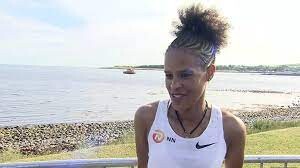
Hoornweg stepped aside when the group reached 13km in around 39:10 and there started Yehualaw’s solo run to the finish line, with Hawkins striding ahead. Yehualaw, who ran the fastest ever women’s marathon debut with 2:17:23 in Hamburg in April, went on to pass the 15km mark in 45:27 and reached the finish in 1:04:22. Only she, Gidey, Ruth Chepngetich and Girmawit Gebrzihair have ever gone faster for the distance.
Moving to 12th on the world all-time list was Yehualaw’s compatriot Tsehay Gemechu, who passed 10km in 30:33 and went on to finish in a PB of 1:05:01 for the runner-up spot. Kenya’s Beatrice Chepkemoi Mutai was third in 1:07:37 and Ireland’s Fionnuala Ross fourth in 1:14:00.
“I am so happy to win this race,” Yehualaw said on the live BBC stream. “I was thinking of the world record. The first 10km was fast, the last 5km was slower. I will try it next time. I hope I will be back, I like this race.”
In the men’s race, Yimer was part of a lead group that passed 5km in 14:10 and he broke away a couple of kilometres later to lead by nine seconds at the 10km mark. He clocked 28:16 at that point, ahead of Kenya’s Alfred Ngeno and Shadrack Kimining, plus Ethiopia’s Tesfahun Akalnew.
Yimer had increased his lead to more than a minute by 15km, which he passed in 42:13, and he continued untroubled to reach the finish line in 59:04.
Ngeno held on for second in 1:01:00, while Kimining was third in 1:01:08 and Akalnew fourth in 1:01:44. Britain’s Marc Scott finished fifth in 1:02:58.
(08/29/2022) ⚡AMPby World Athletics
MEA ANTRIM COAST HALF MARATHON
The MEA Antrim Coast Half Marathon 2022 has been approved by World Athletics as an Elite Event. The World Athletics certified course takes in some of the most stunning scenery in Europe, combined with some famous landmarks along the route. With it's flat and fast course, the race is one of the fastest half marathons in the world. Starting...
more...More Evidence That Fitness Trackers Actually Do Make You Move More
A recent review highlights the benefits of wearables in helping you get more physical activity into your day.
A comprehensive research review published in The Lancet Digital Health suggests there are far more benefits than downsides to wearing a fitness tracker.
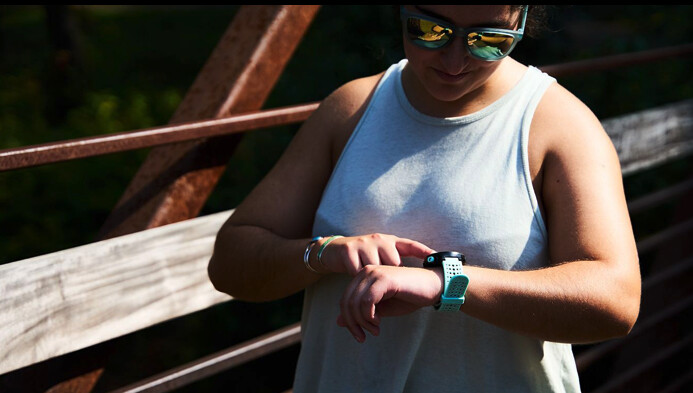
On average, people who wore a fitness tracker got an extra 1,800 steps and walked for 40 minutes more daily compared to non-tracker groups.
Ever since they came onto the market, fitness trackers have prompted varying opinions about their efficacy. Some studies suggest these wearables can have a negative psychological impact or that they have limited utility, because many people end up abandoning them within a few months. On the other hand, studies suggest checking your watch stats during a run can keep your performance on par, particularly if you’re feeling mentally taxed.
A comprehensive research review published in The Lancet Digital Health suggests there are far more benefits than downsides to wearing a fitness tracker.
On average, people who wore a fitness tracker got an extra 1,800 steps and walked for 40 minutes more daily compared to non-tracker groups.
Ever since they came onto the market, fitness trackers have prompted varying opinions about their efficacy. Some studies suggest these wearables can have a negative psychological impact or that they have limited utility, because many people end up abandoning them within a few months. On the other hand, studies suggest checking your watch stats during a run can keep your performance on par, particularly if you’re feeling mentally taxed.
(08/28/2022) ⚡AMPby Runner’s World
How Dani Moreno Became the First-Ever American Woman to Podium at the OCC Race at UTMB
"How far is the podium?!" Dani Moreno yelled to her French friend as she crested a high point in the race at this week's hyper-competitive OCC race, based in Chamonix, France.
"Too far!" her friend responded.
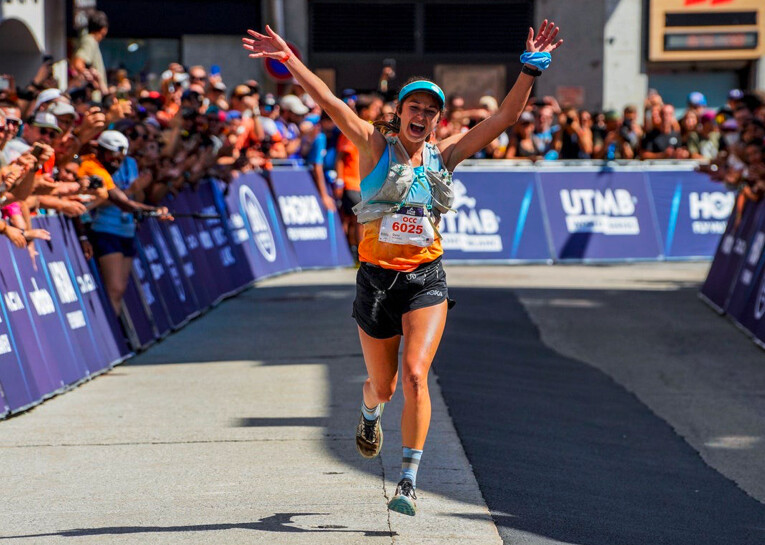
He would later regret saying that. Why? Because 6 hours and 17 minutes after starting, Dani Moreno, 30, from the Mammoth Lakes, California, secured her spot on the podium to finish in third place, the first-ever American woman to reach this level at OCC.
The OCC (Orsieres-Champex-Chamonix) race is a 56km (35 mile) option with 3500 m (11,500 feet) of elevation gain. Unlike the UTMB 100-mile race that circumnavigates Mount Blanc, starting and finishing in Chamonix, France, the OCC option begins in Switzerland and stays in the Valais region, until the finish, where it drops into the Chamonix valley. Winners expect to arrive at the finish in under six hours, while the cutoff is 14 hours, 30 minutes.
Weeks prior to OCC, Moreno experienced an unusually difficult race at Sierre-Zinal, in Switzerland. Before the race, she lost someone close to her back at home and a funeral service was the week of the race. She thinks the emotion caught up with her.
"I went into that race realizing I hadn't fully grieved," said Moreno. "I didn't represent myself and all this work I'd done." But after overwhelming support from friends and family, she recalibrated for OCC and showed up ready to compete. Her fiance traveled to Chamonix to help crew, along with a couple of friends.
Early in the race, Moreno would pass competitors on the ups and get passed on the downs, and yet she kept saying to herself: trust, trust, trust. Trusting in her strengths and pacing was critical, and it paid off halfway into the race.
"I passed five girls and moved into fourth at the halfway point," she said. "I could see the third-place woman but didn't know what was happening in front of them. Then third place and I were battling it out."
"You are As Strong As You Think You Are"
Moreno's secret weapon? Having fun-no matter what.
"It was fun the whole time," said Moreno. "Well, maybe the last downhill was agonizing because I was really trying to see if I could catch second place." She would make airplane arms, pretending to fly, while high-fiving spectators, always with a smile. "It felt like a fun day out with my friends."
Before the last descent, she received a huge boost after seeing her ultrarunning hero, Ruth Croft, who offered her words of encouragement. And at one of the last spots along the course, she remembers her fiance yelling to her: "You are as strong as you think you are!"
"Those last 90 minutes I sort of blacked out," said Moreno, digging deep to try and catch up to the second place woman. A few hundred yards from the finishing chute, she knew she'd done it, and the joy of her last few hundred yards was palpable. "It was a lot. First, I was like, I did it, but then I was like we did it. My coach, my family, everyone that believed in me."
Moreno finished in 6 hours and 17 minutes, only 7 minutes off the winning woman, Sheila Aviles, from Spain. The second-place woman, Nria Gil, finished only one minute ahead. Other American women in the top ten were Kimber Maddox (4th) and Allie McLaughlin (6th).
Running As Expression, Running As Order.
Dani Moreno moved to the eastern slope of California's Sierra Nevada Mountains after living and attending university at UCSB, where she ran cross country. Moreno is a four-time member of Team USA and a two-time USA champion. In addition to competing at the highest levels of the sport, Moreno maintains a full-time job at a construction firm, working in mergers and acquisitions.
"First, I was like, I did it, but then I was like we did it."
OCC was the longest race-both time and distance-that Moreno had ever pursued. But on her website, she writes that her goal is "to solidify myself as one of the best mountain runners in the world at the sub-ultra-distances." Refreshingly, she appears content with fine-tuning her performances in shorter trail races. So often in this sport, athletes feel pressure to level up to increasingly longer distances. For the next couple years, Moreno hopes to focus on marathon trail distances. However, more ultras are very much on the horizon.
"My plan is to do a 100K in the next year and a half, nestled between other shorter races, and keep inching my way up," she said. Moreno mentioned not wanting to do the CCC yet, the 101K option at UTMB. Yet.
"I'd like to do OCC again, and go about a little more aggressively this time." She plans to finish the Golden Trail Series, too, which she did last year.
Want to Run a UTMB Race? Here are Moreno's Three Rules:
Respect the weather. The weather in this dramatic region can change in an instant. Be ready for anything. "Practicing with your equipment is key," she says.
Learn how to move and fuel. Moreno is strict about practicing eating and drinking while training. During her OCC race she mixed up sports drinks and foods, things she was familiar with. The best place to learn what works-and what doesn't-is during training. "It's okay to fail during training," she said. Better to fail in training than in a race.
Be prepared for undulations. Constant ups and downs. "The undulations. Sometimes in the U.S. we tend to only go up and then down, and that's it. Here, there are multiple [big] ups and downs."
Beyond the competition, Moreno seeks trails not only as an elite athlete, but as a way of becoming a whole person, of building order and resiliency into her life.
"It helps me get through a lot of stuff," said Moreno. "It helps me organize and compartmentalize stuff in my life. Sometimes in life I can get overwhelmed by my emotions, Running provides important guidelines for that."
(08/28/2022) ⚡AMPNorth Face Ultra Trail du Tour du Mont-Blanc
Mountain race, with numerous passages in high altitude (>2500m), in difficult weather conditions (night, wind, cold, rain or snow), that needs a very good training, adapted equipment and a real capacity of personal autonomy. It is 6:00pm and we are more or less 2300 people sharing the same dream carefully prepared over many months. Despite the incredible difficulty, we feel...
more...U.K.'s 'Forrest Gump' runs across Ireland in under 24 hours
British marathoner and podcast host Robert Pope, 44, downed a pint of Guinness in Galway City, Ireland, and hit the road. The Liverpool native ran the 213 km trek to Dublin, the capital city, in a record-setting 23 hours, 39 minutes (pending verification). Upon arrival, Pope had his post-run beverage of choice: another Guinness.
Pope made the decision to attempt the feat only two months earlier and told the BBC that, while he had originally planned to follow an eight-week training regime, the Glastonbury music festival got in the way. “I was also working, so it was probably just five weeks of ‘yeah, I’m happy with that’ training,” said Pope.Pope dedicated his run to raising funds for the World Wildlife Foundation (WWF) and well surpassed his goal of $3,100.

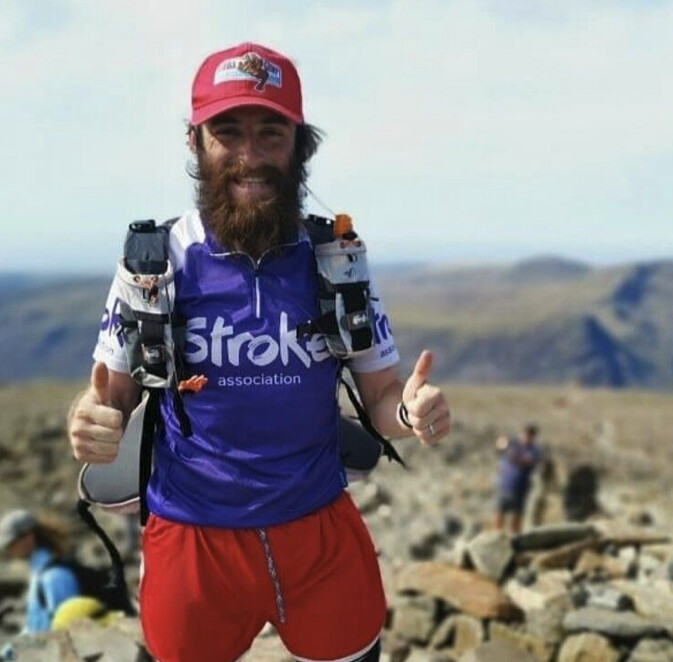
The athlete posted about his effort on social media, his ever-present sense of humour apparent throughout: “People have asked why I want to do this and, like Forrest, they’re asking if I’m running for world peace, the homeless, women’s rights, the environment or animals. Well, I’ll take any opportunity I can to tell you to PLEASE go and check out the work of the WWF and Peace Direct and see how you can help, but this is more the classic answer: #justfeltlikerunning.”
Pope had promoted his run under the hashtag #EdgetoEdge to celebrate U2 guitarist the Edge’s birthday, so, over the course of his run, he listened to the band’s entire catalogue in chronological order.This adventure was far from Pope’s first unique personal challenge. In 2016, he ran the length of America five times, following the route of the fictional movie character Forrest Gump.
He covered 25,140 kilometres in 422 days, and wrote a ‘love letter to America’ about the adventure called Becoming Forrest.Pope is a renowned marathoner, with a marathon PB of 2:27:13 from the 2016 Liverpool Rock’n’Roll Marathon.
He holds the Guinness World Record for the fastest marathon dressed as a film character, set for running the 2018 London Marathon in 2:36:28 (finishing 82 overall) while dressed as–who else? Forrest Gump.
“Maybe seeing me win, lose, or draw will inspire you to do something, to challenge yourself, or make a difference. Just remember and this is the most important point of this run – it’s giving it your best that counts, not whether you impress others, or present the perfect image,” Pope said.“Take pride in the struggle, you’re ace, you are,” he added.
(08/28/2022) ⚡AMPby Running Magazine
2022 UTMB Women’s Race
An American living in France and eighth-place finisher at UTMB in 2021, Katie Schide set out to make her mark on the race from the beginning, leading the women’s field after seven kilometers into Les Houches while being trailed closely by the trio of Marianne Hogan from Canada, Kaytlyn Gerbinfrom the USA, and Hillary Allen from the USA.
Schide grew the gap over the next 13 kilometers into Saint-Gervais. With only one hour and 48 minutes on the race clock, a truly raw opening effort, her lead over second place Hogan was already five minutes, and she had eight minutes on third place Audrey Tanguy (pre-race interview) of France. Jocelyne Pauly and Manon Bohard, both from France also, came through in fourth and fifth with Mimmi Kotka (pre-race interview), a Swede living in Chamonix, just behind them in sixth.
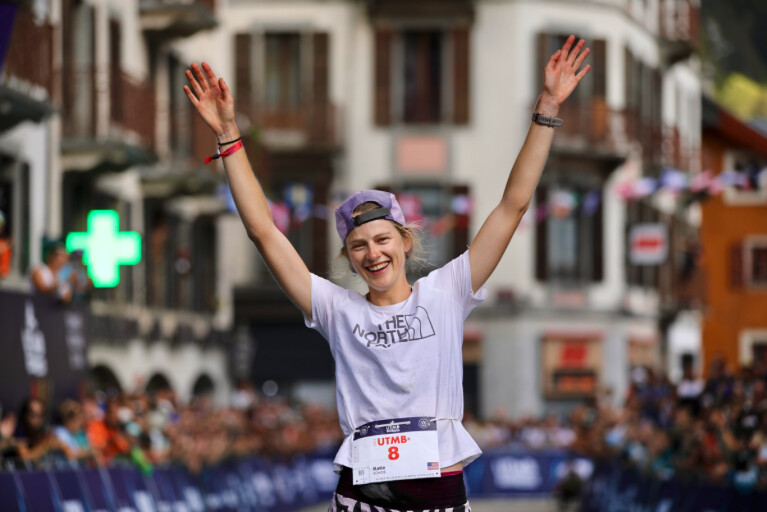
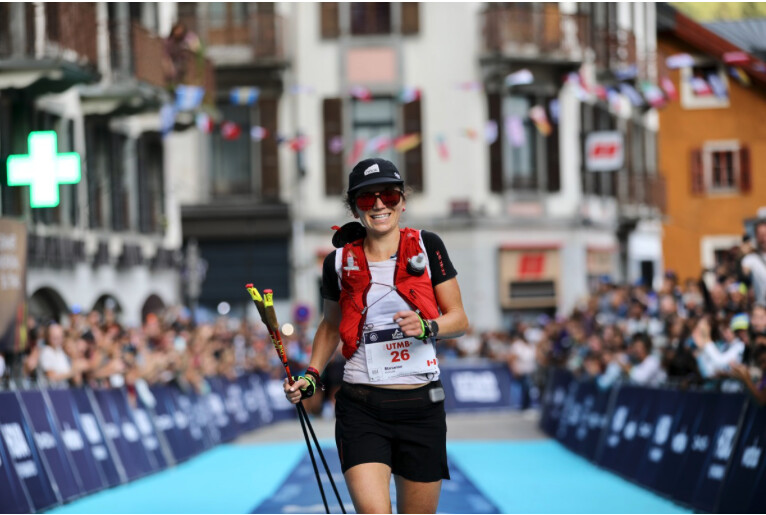
Fu-Zhao Xiang (pre-race interview) of China, Ragna Debats (pre-race interview), who is Dutch but lives in Spain, and Azara García (pre-race interview) of Spain rounded out the top 10, running together 13 minutes behind Schide.Keeping up her consistent and strong pace, Schide continued to increase her lead on the rest of the women’s field, coming into Les Contamines at 31 kilometers with 2:50 on the race clock.
By then, she’d extended her lead on Hogan to over nine minutes, Tanguy to 12 minutes, and Bohard and Pauly to 15 minutes. Tanguy was probably relieved to make it past Les Contamines where she had dropped last year from severe stomach cramps. A visibility limping Kotka, who had challenged Courtney Dauwalter during last year’s UTMB during the early miles of the race before finishing third as Dauwalter won, came into Les Contamines nearly 20 minutes off the lead in sixth and would not continue.
Schide continued to smile coming through the Col du Bonhomme, at about a marathon’s distance into the race, clearly enjoying her run through the night and appreciating the cheers of the spectators. Climbing one of the largest passes of the race only seemed to make her stronger. Her gap to Hogan and Tanguy had grown to about 20 minutes as the two chasers crested the col.
The cheers from the enthusiastic French crowd brought smiles to both women’s faces as they passed through. The cheers continued for Bohard and Pauly, who were still running together.
The crowd at Les Chapieux, 50 kilometers in, was enthused to see Schide, erupting in huge cheers as she came in. While the gaps between the women in second through 10th grew and shrunk over the kilometers, Schide’s gap on the field had only gone one direction so far: up. She was now more than 22 minutes up on second place Hogan. By the time Schide got to Lac Combal, 66 kilometers into the race, the gap was up to 25 minutes, and it would be an additional 20 minutes for Tanguy to arrive after that.With 80 kilometers run, Schide came into Courmayeur flying, spending only eight minutes at the aid station approximately halfway into the race.
The crowds were thrilled to see her, providing a warm and raucous welcome as she ran into the aid station looking smooth. But for the first time in the race thus far, Hogan had started to close the gap to the leader, whittling it down to just over 20 minutes. Smiling but with a stomach that couldn’t handle gels any more, she quickly drank a Coke and opted for pizza for fuel. The gap between the top two women and the rest of the field continued to grow, and it was over an hour before Tanguy, Pauly, and Gerbin ran through, and a few more minutes after them to the sixth woman, Emily Hawgood, of Zimbabwe, who lives in the USA.
While Schide had seemed unstoppable before Courmayeur, the tables seemed to turn over the next 17 kilometers to Arnouvaz as night turned to day. Schide came in with stomach issues, clearly in a rough spot, with Hogan hot on her heels, now only two minutes behind. Closing a gap of more than 18 minutes is a feat to be acknowledged, and a feisty and strong Hogan seemed energized by the coming of the day and the idea of leading the race for the first time.
A struggling Schide maintained her lead over the Grand Col Ferret at 102 kilometers, but it was down to a minute, and when the women’s leader arrived at La Fouly at 112 kilometers, it was Hogan instead of Schide for the first time, with a sizable six-minute gap.
By Champex-Lac at 125 kilometers, it was still Hogan in the lead and well under course record pace, now with a 10-minute gap to second. But Schide wasn’t about to give up, slowing down to let her stomach recover from its previous rough spell, and finally eating a cheese sandwich and starting to move well again.
One hundred miles is a long distance to race, long enough that runners can get through rough spells and rebound. And that’s exactly what Schide did, regaining the lead in Trient at kilometer 142, not only eliminating the 10-minute gap but putting an additional 10 minutes on Hogan. By Vallorcine at 153 kilometers, the gap between the top two was up to 41 minutes, with Hogan nursing a hurt left leg.
By the time the pair reached the finish line in Chamonix, they maintained their one-two position with Schide having extended the gap to some 75 minutes.It was another 35 minutes later that we saw the final member of the women’s podium arrive, Gerbin, who ran for much of the second half of the race in what she described as “no woman’s land,” well in front of those behind her but out of contact with the lead.
It was apparently a comfortable spot for her, though, as she held her position strongly, and crossed the finish line back in Chamonix like she could run plenty more kilometers if needed.
Pauly finished fourth, the successful conclusion of a focused day of racing. Eszter Csillag, who is from Hungary but lives in Hong Kong, moved up later on to take fifth. Emily Hawgood ran strong all day to set and maintain a very similar position of sixth place. Xiang held tight to seventh place with Spain’s Aroa Sio just behind in eighth. Italy’s Francesca Pretto and Eva-Maria Sperger of Germany moved up into the top 10 in the last 50 kilometers.
(08/28/2022) ⚡AMP


